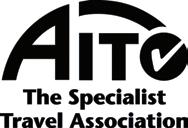2026 TOURS AUTUMN BROCHURE


Travel for the Culturally Curious
Welcome
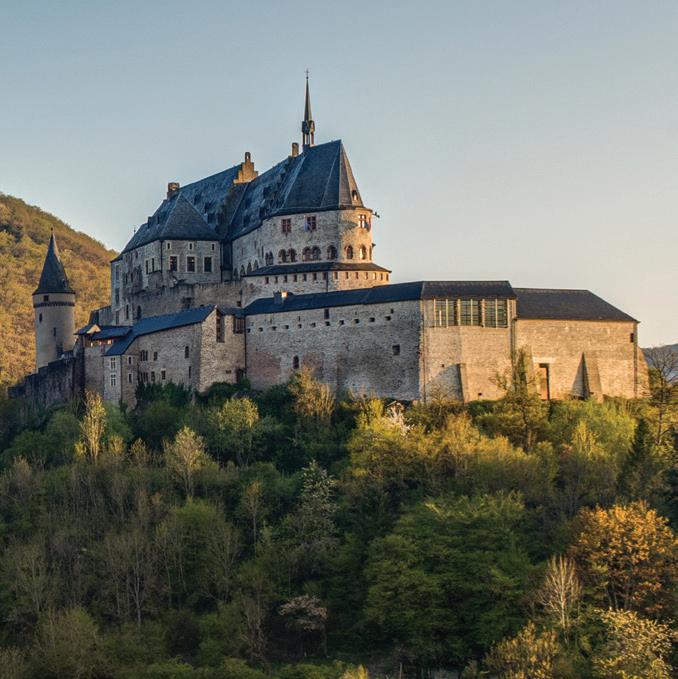
ACE Cultural Tours is proud to share our Autumn Bulletin, featuring the latest releases from our 2026 programme.
Travel to the cosmopolitan centre of America on our new Cultural Break, Great Art Collections of New York: 250 Years of Independence, and discover the city’s abundance of brilliant art collections, including the Metropolitan Museum of Art, the Guggenheim, Frick Gallery and Museum of Modern Art (MoMA). Later in the year, embark on a voyage through the Rhine Valley on our Advent Cruise on the Rhine: Between Darkness & Light , where the light and shadows of fairytales, German mythology and classic festive literature come to life.
For architecture enthusiasts, we are excited to present Bauhaus: German Modern Art & Design – 100 years in Dessau, offering the opportunity to study the art, architecture and design of the Bauhaus School and related artists during the hundred year anniversary of the school’s foundation in Dessau. Just across the border, on our new In the Footsteps of Le Corbusier tour, travellers can journey through France tracing the life and works of this pioneer of modern design, including an overnight stay in a UNESCO-listed building designed by the architect himself.
We are pleased to share a range of tours across our key subjects areas, including fascinating new archaeology tours. On Ancient Macedonia: The Empire of Philip II and Alexander the Great , we will discover the incredible ruins at Philippi, while on Ancient Treasures of Cairo, travellers will marvel at the awe-inspiring Pyramids of Giza. Music lovers can anticipate a delightful array of performances with world-class ensembles on Schubert in Schwarzenberg and Sibelius Festival in Finland, the latter promising breathtaking renditions of Finlandia, Valse Triste , the Violin Concerto and Symphonies 2-4.
For travellers seeking to explore closer to home, Pre-Conquest York: Creating England’s Second City with new Tour Director Ailsa Mainman features an exclusive viewing of Roman, Anglo-Saxon and Viking Age artefacts excavated by York Archaeological Trust. Meanwhile, nature enthusiasts can enjoy a stunning variety of flora, migrating birds and marine animals alongside ancient remains in North Wales on Wild & Ancient Anglesey
Our complete 2026 schedule can be found on pages 51 to 53 as well as on our website. To register your interest in upcoming departures and receive full details by email as soon as these tours become available, please complete the form on our website, contact the ACE Cultural Tours office on 01223 841055 or email sales@aceculturaltours.co.uk . We look forward to welcoming you on tour.
CULTURAL CRUISE
Advent Cruise on the Rhine: Between Darkness & Light
FURTHER AFIELD
Great Art Collections of New York: 250 Years of Independence
Tunisia: From the Ruins of Carthage to the Great Mosque of Kairouan
EUROPE
A
UNITED KINGDOM

Responsible tourism
We are proud to be the preferred travel provider for people who are committed to supporting local communities in the countries they visit. ACE Cultural Tours aims to make sustainable choices by scheduling visits during off-peak seasons, returning to the same hotels year on year, supporting local businesses and utilising the expertise of our Tour Directors who have active roles as conservationists and ICOMOS representatives.
Additionally, each year, the trustees of the ACE Foundation (the Association for Cultural Exchange), an educational charity founded in 1958 and the owner of ACE Cultural Tours, support charitable and educational projects all over the world. These include international conservation and research projects, as well as work closer to home at Stapleford Granary, our base near Cambridge.
levels are up to expected standards. When selecting accommodation for our tours, we strive to achieve a balance between factors such as accessibility, location and costs. We also recognise that the opportunity to sample different cuisines is an integral part of the cultural experience, so when travelling overseas, we like to give you the chance to try traditional dishes. When travelling off the beaten track, it is sometimes necessary to use simpler accommodation, and we also consider less tangible qualities such as historical character and atmosphere.
Customers have frequently complimented us on the value for money offered by our tours, and our policy of including gratuities for most services as standard has proven particularly popular. Our brochure descriptions give a clear indication of what is included for each tour.
Tour prices are confirmed at the time of booking and thereafter will not be subject to any surcharge. We have forward purchases of currency and other precautions in order to guarantee your holiday is not affected by fluctuations in fuel or currency rates.
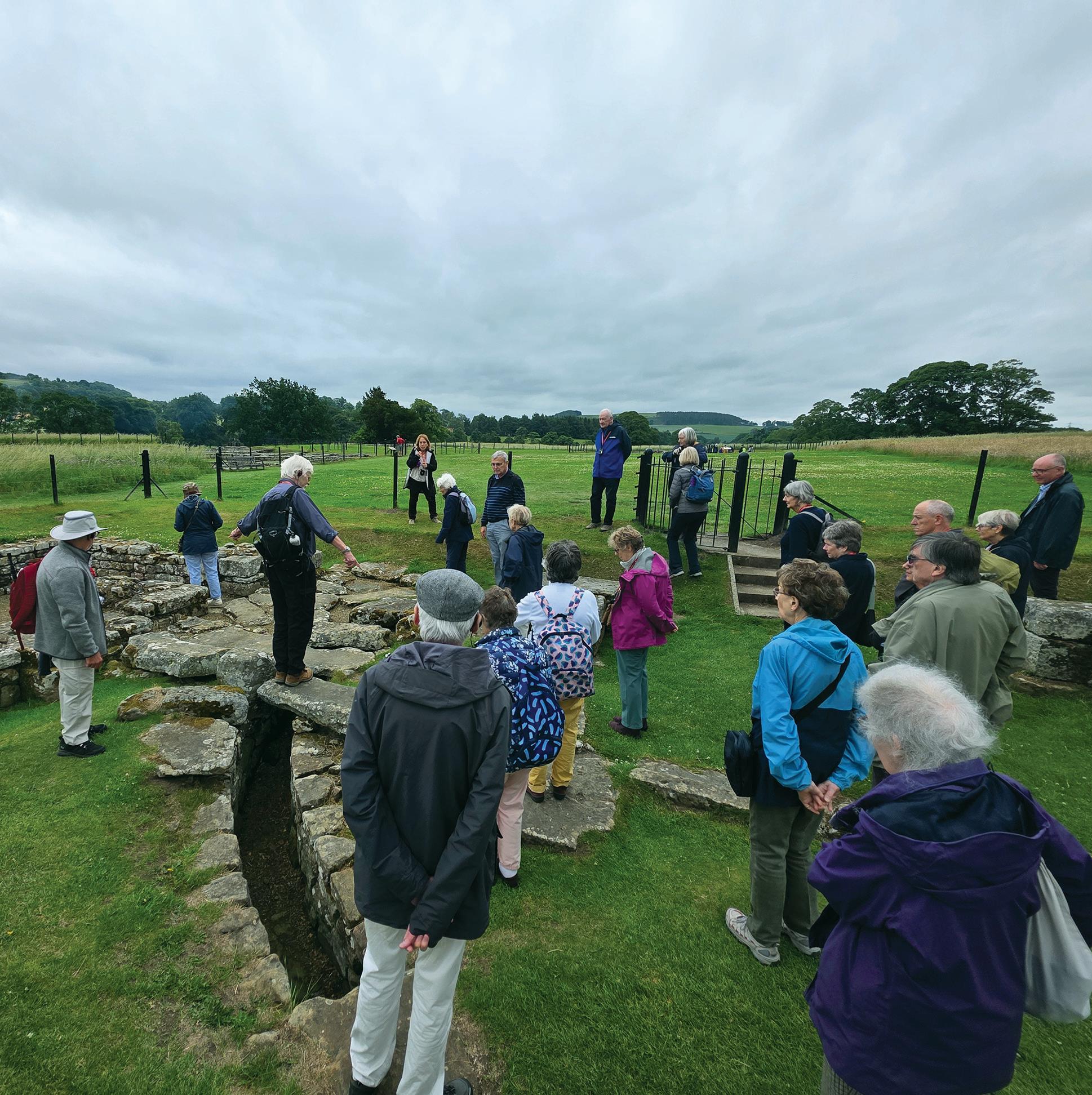
AM I FIT ENOUGH?
Our tours range from fairly strenuous and challenging departures to those with a more relaxed feel, particularly our cruises. Regardless of the type of tour, it is important that our clients meet minimum fitness criteria to ensure that the enjoyment of the rest of the group is not compromised, and we ask all customers to check the tour-specific fitness details included in our brochure pages and online.
The majority of ACE Cultural Tours are active in nature. To make the most of our time in a destination and provide excellent value for money, our itineraries are full, often with several visits included each day. As such, our tours require a certain minimum level of physical and mental fitness, mobility and stamina. Many visits will involve navigating steps, uneven ground, steep ascents and descents, and could involve embarking and disembarking aircraft, coaches, trains and cruise vessels. Plenty of walking, punctuated by lengthy periods of standing, is the norm. Some tours may involve long coach journeys. Walks on natural history tours are typically 3–5 miles in length, often in hilly or mountainous regions.
“From the first enquiry, to the final touchdown, ACE Cultural Tours did everything professionally. The planning detail and timings were exceptional”
– ACE customer on a 2025 tour
As a minimum, participants should be able to successfully complete the following self-assessment tests:
• Walk for 60 minutes at a reasonable pace and without needing to take a break to rest
• Climb at least two flights of stairs at a reasonable pace
• Stand unaided for at least 30 minutes
• Stand up and sit down ten times in one minute
• Carry or otherwise move your own luggage
The Great Small Miracles of Jonny Boatfield
by Kate Romano, CEO of Stapleford Granary

Kate Romano writes about the extraordinary world of Jonny Boatfield; draughtsman, illustrator and inventor
Jonny Boatfield is used to polarised reactions to his art. ‘Some people look at my pictures and are repelled’ he says, matter-of-factly. ‘They think ‘hold on –there’s too much going on here’. Others get it immediately, and take what they want from the drawings. I can give people an outline, or some sort of basic description, but that’s not really the point. For me, ideas just happen, and they expand, and I have to dislodge them onto the paper’.
Drawing, or the dislodging of ideas, is an all-encompassing obsession for Jonny. Widely heralded as being one of the UK’s greatest draughtsmen, he’s also one of the least well-known. ‘A prodigious neo-baroque talent’ wrote Jonathan
Glancey in The Independent. ‘A visual feast, a maelstrom of the world’ enthused art director Mark Reddy, comparing the experience of coming across Jonny Boatfield’s work to ‘discovering the Dead Sea Scrolls for yourself’. Dan Fern, Head of the Royal College of Art Illustration Department observed: ‘He should be designing sets for the Royal Opera or National Theatre, but he’s too busy producing work to spend time promoting it’
Jonny draws every day. Ideas spill onto the paper – any paper – with the rapid pace of a doodle. He draws on old envelopes, brown paper, food bags, scrap cardboard, record covers with a nib pen and ink. His drawings are instinctive, fluid, unconstrained and spontaneous. They are born and live on the page, with no prior plan or decision. ‘I always feel I’m catching up with myself’ says Jonny. ‘Sometimes I have an idea in mind when I begin, but then the picture takes over,
makes its own demands. When I see a blank sheet of paper, my fingers start itching and I just want to scribble all over it so there is no white showing at the end. I would love to take everything off the walls in my house and just draw all over them’.
A close look – a really close look – at Jonny’s art is like stepping into a cabinet of curiosities. Anachronistic motifs run through the pictures: mythical creatures, hot air balloons, historical figures, space rockets, robots, animals (living and extinct), flags, aliens and astronauts. He recalls beloved childhood trips to the Haw Par (or Tiger Balm) Gardens in Singapore as a strong influence. Somewhere between a theme park and a bizarre melange, visitor attractions included the Ten Gates of Hell, statues of historic and fabled figures set alongside modern life, an eight-foot sculpture of Mickey Mouse (‘with his legs too thin’), an eighty-foot gorilla, and a graveyard of old
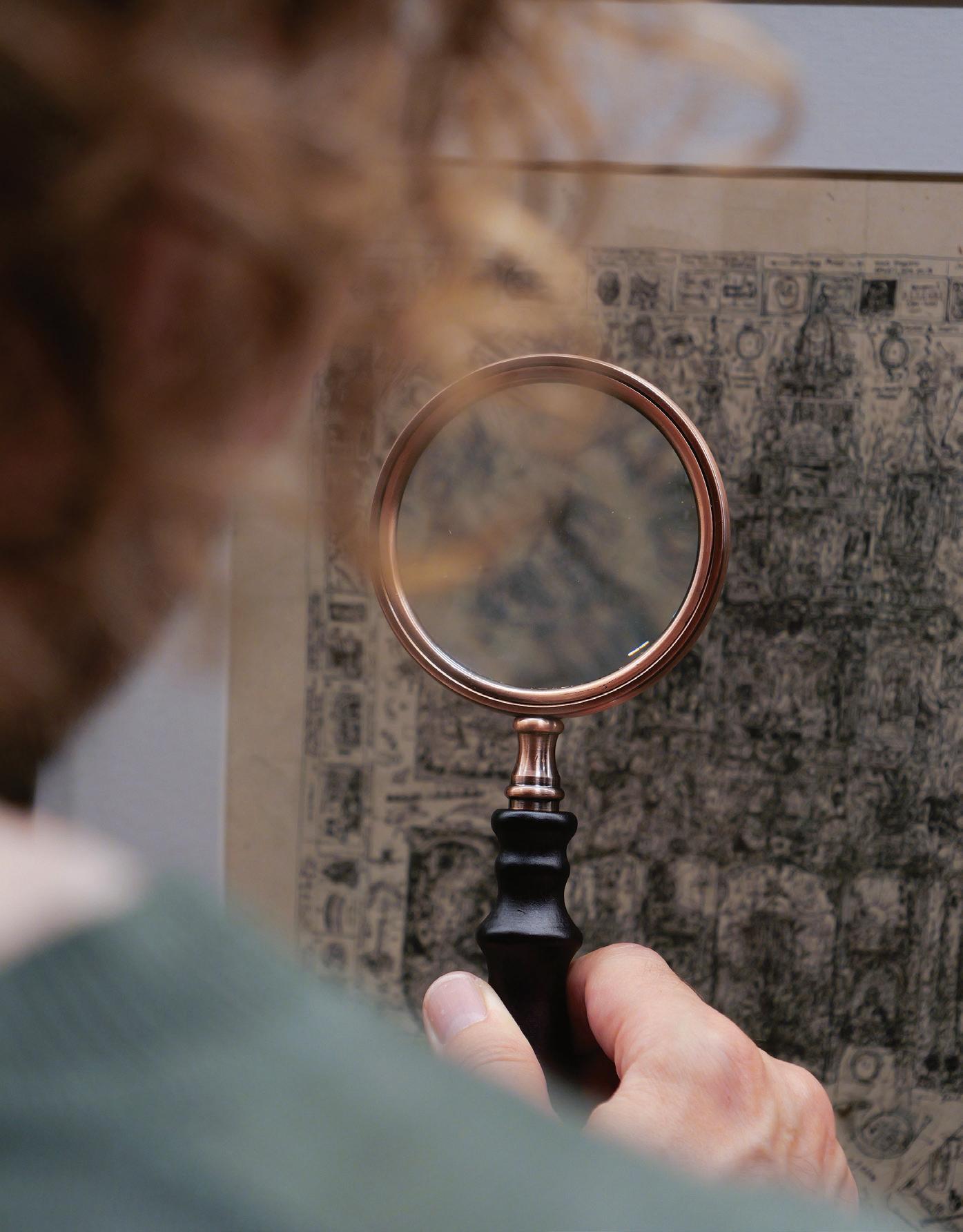
broken sculptures, disembodied plaster limbs and discarded ancient gods. ‘You cannot imagine such a place’ says Jonny. ‘I used to drag my mother back there, again and again’
There’s a strong nostalgia for the Industrial Revolution. His pictures are full of machines, inventions and architecture from the Great Exhibitions; iconographies of modernism created to express the spirit of an emerging era. There’s also something distinctively English about Jonny’s drawings. ‘I grew up in Cyprus’ he explains, ‘and we lived in the Far East. My father was in the army and we followed him to Malaysia and Singapore. When we were living abroad I was reading A Child’s Christmas in Wales [Dylan Thomas] and Orlando the Marmalade Cat and all these ultra-English books which have become indelibly etched in my mind. I have a vivid childhood memory of standing by the plastic white
Christmas tree in Singapore, watching the snow fall. But that came from the books; snow never fell in Singapore. My idea of England is a mythical place. I had never been there, but the myth of England has remained part of my vocabulary. It’s England, subverted. It’s a culture, but not the reality; my arcane emotional attachment to England comes from picture books’.
Children’s television from the 1970s fed into his sense of wonder and invention (the eccentric Michael Bentine’s Potty Time was a favourite), along with a lifelong love of the whimsical drawings, humour and elaborate kinetic sculptures of Rowland Emett. He’s influenced by the sharp minds and sharp pens of cartoonists who expose vanity, inanity and mediocrity; Saul Steinberg, his friend Steven Appleby and Peter Brookes. Jonny is equally adept at detecting social canker, and many of his
pictures have a Dickensian tone which emanates from his mixture of realistic accuracy and unrestrained fantasy. In Mandrake In The City, the news on the street is ‘the daily drivel (‘it’s garbage, but everyone reads it’) sold by a slumped paper seller overcome by fumes from a ruptured pipe and a petrol pump; the High Street is full of pawnbrokers, debt collectors, homeless shelters (‘no beds’). His complex, unwieldy, melodramatic ‘plots’ are not designed to be unravelled, and not especially coordinated into any philosophy. They are, like Dickens, more concerned with the diversities of the world instead of unities. The villains are all of us, and he depicts a light-humoured side of evil. The Jonny Boatfield spirit is that of a Punch and Judy showman, who is not opposed to whacking his little figures unmercifully or taking a swipe from the sidelines.
Jonny Boatfield’s current preoccupation is shown in our exhibition as an Open Theatre; a three-dimensional set design for a graphic novel called Young England where book-headed and clock-headed Victorian characters appear to have stepped out of a paper theatre. ‘I’ve put the positive side of the Victorians into the book’ he says; ‘the sense of impossible ambition and extraordinary ideas which we saw in the Great Exhibitions, mixed with their awful repressive bigotry’. As with all Jonny Boatfield’s work, Young England embraces a world in flux; incongruous yet interrelated elements, dates, geographies and disciplines, leading to connections that can feel modern and relevant. ‘Just think’ he says, ‘the steam engine was the most radical machine ever built – clean, low emission; we could all have been driving steam-powered cars today if the world had shaped up differently’. And then, just as it seems that a contemporary sustainability philosophy might be emerging, his mind takes an unexpected leap; ‘it would be great to make a computer... which ran on string, and pots and pans…’ and another small miracle is born.
Jonny Boatfield: The Great Small Miracles Exhibition, Thursday 4 September – Sunday 2 November
Advent Cruise on the Rhine: Between Darkness & Light
December 4–9, 2026

Explore luminous medieval and Renaissance masterworks in Cologne alongside the light-filled Gothic cathedral
Delve into the light and shadows of fairytales, German mythology and classic festive literature in the Rhine Valley
Celebrate the season through music, stories and visits to a selection of Christmas markets
“Always winter, never Christmas,” opines Mr Tumnus in C S Lewis’s The Lion, the Witch and the Wardrobe, as Narnia awaits the warmth, joy and renewal of Aslan’s return. The tale pivots on an eternal dichotomy not only within Christianity but at the heart of the seasonal cycle itself.
Darkness and light feature across many winter tales and belief systems. The Oak and Holly Kings traditionally do battle at each solstice; while ghosts and spirits haunt the year-end shadows to force reckonings and foretell redemption. Familiar symbols – from the Yule Log to Advent greenery and candlelight –
combine with music-making, storytelling and feasting to create a jovial winter refuge, albeit one that can only exist in juxtaposition with the darkness that surrounds it.
Today, in Germany’s iconic Christmas markets – which originated as ‘markets of necessity’ to help communities store up against winter – lights, music and hot drinks draw us away from the shadows and towards festive chalets. Miniature worlds of candlelight, nourishment and hospitality, the markets are a physical embodiment of darkness and light during Advent and a perfect accompaniment to our exploration of these dual themes – and the shades between them – across religion, art and architecture, music, literature and legend.
Divine light is our focus in Cologne, from the illuminated artistry of Stefan Lochner’s Madonna of the Rose Bower to the light-filled interiors of Cologne’s Gothic cathedral, home to the Shrine of the Three Kings. Koblenz’s churches are more mysterious, their Romanesque features weaving and directing light through greater areas of shadow.
The Rhine Gorge – one of the most beautiful cruising stretches in the country
“Emilie was absolutely outstanding: erudite – regarding music, of course, but also on art, history, local geography and literature; a brilliant pianist; excellent communicator; and absolutely tireless in her efforts to ensure everyone enjoyed the tour. A huge asset to ACE” – ACE customer on a 2025 tour led by Emilie Capulet
– will lead us to the fairytale town of Rüdesheim, home to a remarkable collection of self-playing musical instruments and an array of taverns along its famous Drosselgasse.
Literature would not exist as we know it without the tension between darkness and light, and a special on-board talk will explore this timeless theme through the great mythological tales associated with the Rhine to later seasonal stories, from Shakespeare and Dickens to C S Lewis and Susan Cooper. Music is equally capable of expressing light and shadow, to convey conflict, explore key characters’ inner workings and juxtapose moods or

RAIL OPTION
For participants wishing to travel to and from the cruise by rail, ACE is offering an option to travel on Eurostar and TGV from London St Pancras to Cologne on December 4 (via Brussels), returning from Strasbourg at the end of the cruise (via Paris). Please note that spaces are limited. To reserve your place and enquire about options for first-class upgrades, please contact the ACE office.
ideas. Through a series of illustrated talks and recitals, we will learn how composers have played with these themes through texture, key and other techniques – as well as celebrate some of the most delightful music of the season with carols and songs.

Emilie Capulet , MA, MMus, PhD is an award-winning concert pianist, lecturer and musicologist. She has received a prestigious Leverhulme Research Fellowship and has been a Visiting Fellow at Keble College, University of Oxford.
We emerge into the clear dawn of the Enlightenment: one of Europe’s oldest universities, Heidelberg is a celebrated centre of learning and literature, and its radiant Great Hall stands as a testament to centuries of scholarship. In the same building, the more mischievous, sometimes darker aspects of university life can be traced in the graffitied walls of the old student prison, where culprits were held for ‘gentlemen’s offences’, including ‘loud singing in the city’, ‘inappropriate behaviour in public as a result of inebriation’, and ‘participation in illegal fencing duels’.
Our first overnight is spent in the fourstar H+ Hotel Köln-Hürth near Cologne, conveniently located for the following day’s visits, before we embark the MS Lafayette for the duration of our cruise.

Marie-Anne Mancio, MPhil, DPhil, is an art historian, writer, experienced tour leader and Arts Society accredited lecturer. She originally trained as an artist before gaining a DPhil at the University of Sussex in art and critical theory.
“Marie-Anne was an excellent Tour Director. She was very knowledgeable in her subject, was friendly and approachable and made the subject come alive for me”
– ACE customer on a 2025 tour led by Marie-Anne Mancio
FITNESS / PRACTICALITIES
Please note that this is one of ACE’s larger cultural cruises and there will be a maximum of 58–60 participants on board, who will split into smaller groups for the majority of the visits. While this tour is not expected to be particularly strenuous, participants should meet ACE’s usual fitness requirements, and in particular should be comfortable joining walking tours in urban centres (with the option to remain on the boat if wished), navigating some uneven and cobbled terrain, and staying on their feet during art gallery visits.

Caroline HopkinsonWoolley, BA, has a degree in English Language & Literature from Merton College, Oxford. She writes for several publications including Country Life and has published her own fiction in anthologies.
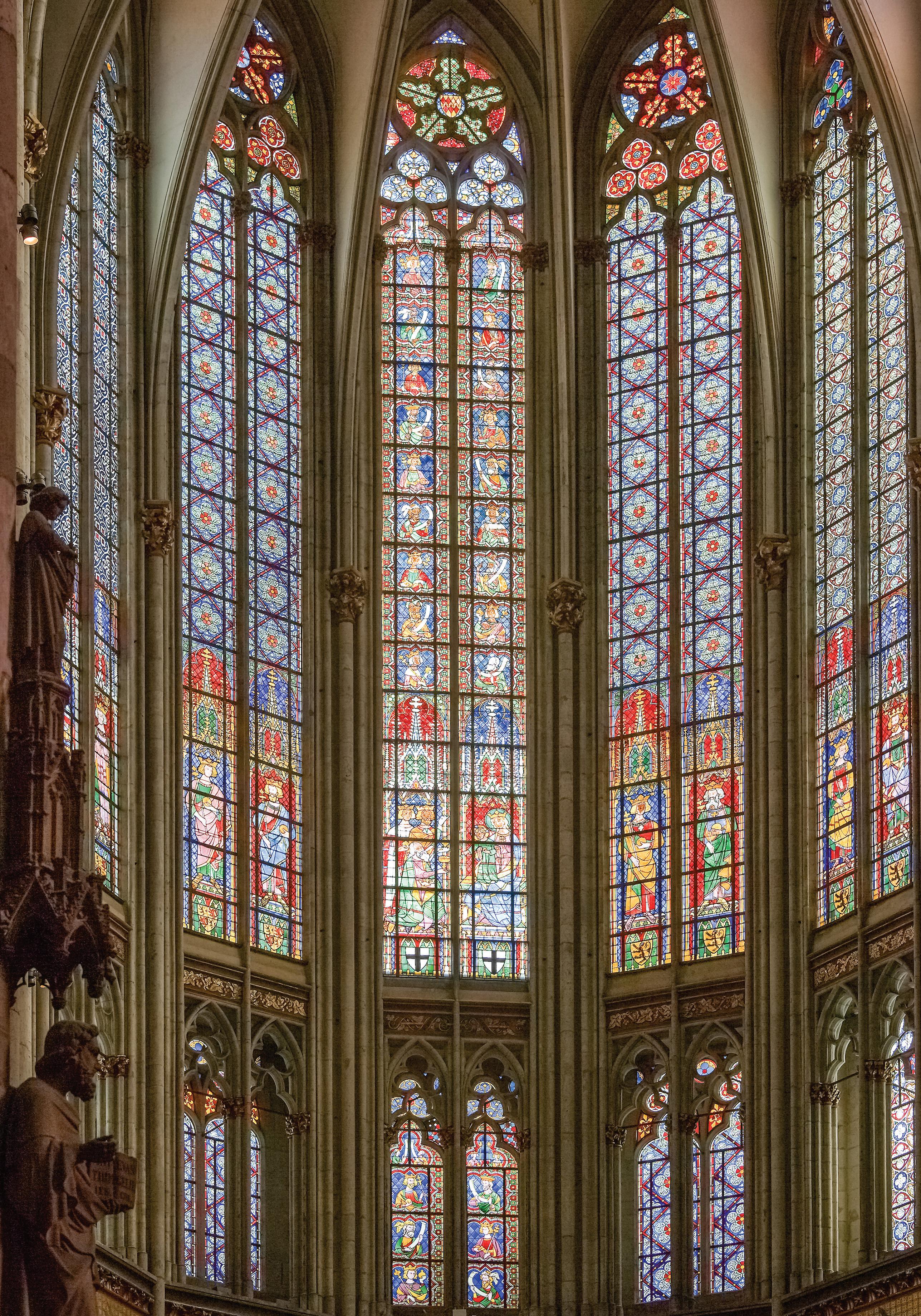

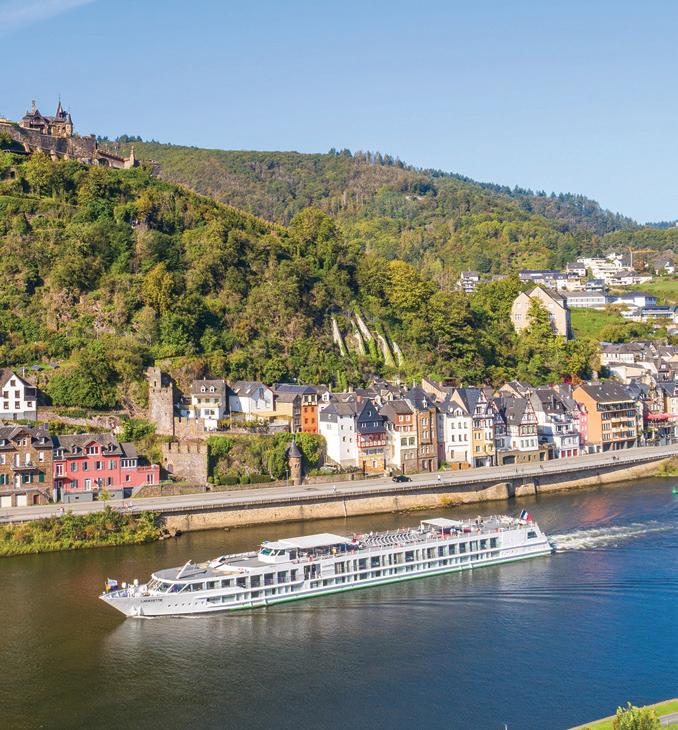
The MS Lafayette on the Rhine River
OUR VESSEL
The MS Lafayette is a five-anchor vessel, completely refurbished to a four-star hotel standard in 2015 and privately chartered for ACE’s Advent Cruise on the Rhine. The ship’s 43 light and spacious ensuite cabins are split across two decks. All the cabins feature large windows, allowing travellers to enjoy the wonderful scenery. On the upper deck, these are full height, floor-to-ceiling, with a French balcony. The ship’s beautiful communal areas are a central feature of our cruise, whether savouring a three-course meal or relaxing with an evening drink and recital in the lounge.
ITINERARY
Please note that the itinerary represents a guide to what we hope to offer, and some elements may be subject to change or confirmation. Due to the changing conditions associated with waterways, the precise timings and order of visits may change nearer to the time.
D ay 1 – Arrival Depart London Heathrow 1315 on British Airways, arriving Cologne 1540. Transfer to the H+ Hotel Köln-Hürth for overnight. Welcome and introduction. We are also offering a Eurostar outbound travel option to Cologne via Brussels – see rail option box for more details.
D ay 2 – Cologne Morning talk: Divine light in art & architecture followed by visits to Cologne Cathedral (light-filled Gothic interior; Shrine of the Three Kings) and Wallraf-Richartz Museum (spectacular collection spanning the medieval era – Stefan Lochner’s Madonna of the Rose Bower –to the 20th century). Embark the MS Lafayette for four nights. Welcome reception and afterdinner recital on board. Overnight Cologne
D ay 3 – Koblenz Morning cruise to Koblenz with talks: A midwinter celebration: folktales and traditions and Light and shade in music (illustrated). Afternoon: historical visits in Koblenz, including the Romanesque churches of St Castor, Liebfrauenkirche and St Florin, and time to explore the Christmas markets. Afterdinner recital on board. Overnight Koblenz
D ay 4 – Rüdesheim am Rhein Morning cruise through the beautiful Rhine Gorge (fairytale landscape) and talk: Into the woods – darkness in legends and literature. Afternoon: free time to explore charming Rüdesheim, including the ‘Christmas Market of the Nations’, St Jakobus
Church and the atmospheric Drosselgasse (shops and taverns). Guided tour of Siegfried’s Mechanical Music Cabinet (extraordinary collection of self-playing musical instruments). Short after-dinner talk: Ghost stories
D ay 5 – Heidelberg Morning cruise to Speyer with talk: Seeking the light – literature and philosophy in Heidelberg followed by a relaxed round-up session and Q&A. Afternoon excursion to Heidelberg for a walking tour of the Old Town, including the old university buildings (spectacular grand hall) and student prison, with time to enjoy the Christmas market. Optional early evening visit to the Romanesque cathedral in Speyer (time permitting). Farewell reception and gala dinner followed by celebratory afterdinner concert. Nighttime cruise to Strasbourg
D ay 6 – Departure – Strasbourg Free time in Strasbourg old town (home to cathedral, including astronomical clock, Christmas market and array of excellent museums). Transfer to Basel for 1550 departure on British Airways, arriving Heathrow 1635. A Eurostar return will depart a little earlier from Strasbourg via Paris
BOOKING AND PRICES
Cost of £2995 includes: return airfare/rail travel option, accommodation based on sharing a main deck twin cabin, full board cruise with unlimited wine, beer, soft drinks, tea & coffee, hotel accommodation for one night including dinner with wine, water & coffee, shore excursions & admissions, all gratuities & all taxes. Not included: travel insurance, hotel twin/ double & main deck twin cabin for single use supplement £525. Upper deck supplements available upon request.
TOUR CODE: RHIN26
Great Art Collections of New York: 250 Years of Independence
October 12–18, 2026
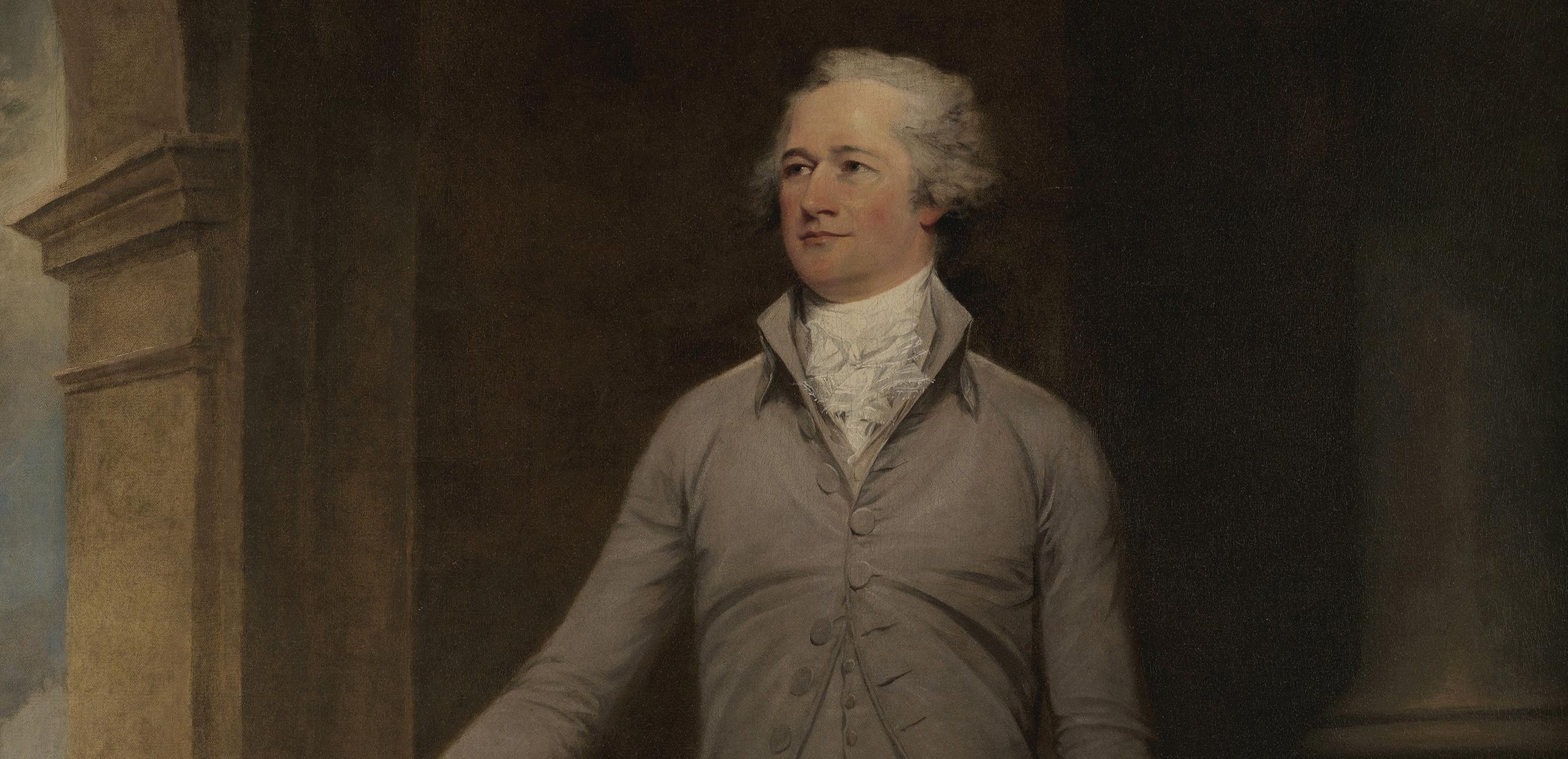
Become immersed in the iconic masterpieces of the Metropolitan Museum of Art, the Guggenheim and Frick Gallery
Explore vibrant collections of modern and contemporary art at the Neue Gallerie, MoMA, the Whitney Museum of American Art
Discover the social history of New York and personal stories at the Tenement Museum
This brand new tour takes place during the 250 year anniversary of American Independence, a fascinating backdrop for exploring the country’s history and culture through a selection of art institutions and installations.
We will dedicate a day to the Metropolitan Museum of Art to focus on unravelling the narrative of American art through great painters like John Singer Sargent, as well as viewing some of the permanent collection’s highlights spanning 5000 years.
At the Guggenheim, we will view Impressionist, Post-Impressionist and
This tour is part of our new series of Cultural Breaks , specially designed for the more independent traveller. These tours benefit from the same high level of cultural content as our standard tours with time also given to independent exploration. As they tend to be based in city centres, Cultural Breaks typically make more use of public transport as an easier and quicker way of accessing sites. The Tour Director and Tour Manager will also be on hand throughout to introduce travellers to some of the lesser known sites and recommend local places to wine and dine.
modern French masterpieces. These works arrived at the museum courtesy of Jewish art dealer Justin K Thannhauser, who journeyed to New York to escape persecution during World War Two, and their presence testifies to the importance of European patronage in the story of American art. In conjunction, we will visit the Tenement Museum, an immersive site that accurately recreates homes of immigrant families during the 19th and 20th centuries.
We will delight in artworks by Vermeer and Rembrandt at the Frick Gallery,
magnificent pieces by Klimt at the Neue Galerie, alongside paintings by Edward Hopper and Jacob Lawrence at the Whitney Museum of American Art.
The exciting scene of contemporary arts will come to life during a guided street art tour, whilst intersections of the natural environment and cityscape will be enjoyed with a jaunt along the High Line.
Our tour is based in a comfortable four-star hotel in central New York, well located for our visits.

This tour will be led by Marie-Anne Mancio, MPhil, DPhil, an art historian, writer, experienced tour leader and Arts Society accredited lecturer. Marie-Anne originally trained as an artist before gaining a DPhil and has written and presented courses for Tate and Dulwich Picture Gallery. She is a frequent visitor to New York.

FITNESS / PRACTICALITIES
A good overall level of fitness is required for this tour, as it involves a moderate amount of city-based walking taken at a reasonable pace on pavements which can be crowded. Most visits will be reached by public transport, an efficient way of getting around New York, so participants should feel comfortable using the subway and going up and down steps in and out of stations.

Please note that travel to and from New York is not included in the cost of this tour. We recommend that you book flights to arrive by early afternoon on Day 1 (October 12) as the group will assemble in the early evening at the hotel; and return flights from 1930 onwards on Day 7 (October 18).
ITINERARY
Please note that the itinerary represents a guide to what we hope to offer, and we cannot guarantee the viewing of all artwork/artists mentioned, as works can be loaned or removed for restoration at short notice.
D ay 1 – Tour assembles at hotel for six nights. 1730 welcome and introduction.
D ay 2 – Whole day at the Metropolitan Museum of Art (considering American art including John Singleton Copley, John Singer Sargent and Thomas Cole, followed by permanent collection highlights spanning 5000 years of history). Free evening.
D ay 3 – Morning at the Guggenheim Museum (Impressionist, Post-Impressionist and modern French masterpieces including works by Degas, Manet, van Gogh and Picasso) followed by free time to explore Central Park independently. Afternoon: visit to the Neue Galerie (German and Austrian Modernism). Free evening.
D ay 4 – Morning: Tenement Museum (immersive museum in an apartment block that accurately recreates homes of immigrant
and migrant families during the 19th and 20th centuries). Afternoon: New Museum (innovative contemporary art) followed by a walking tour of the Highline (shining example of biophilic urbanism). Free evening.
D ay 5 – Morning visit to the Frick Gallery (European fine art and historic gardens) followed by Museum of Modern Art (MoMA). Optional visit to Top of the Rock. Free evening.
D ay 6 – Guided street art tour followed by free afternoon and specially curated evening at a small gallery (subject to confirmation).
D ay 7 – Visit to the Whitney Museum (Edward Hopper, Thomas Hart Benton, Ellsworth Kelly, Alex Katz and Jacob Lawrence). Tour disperses at hotel approx 1530. We recommend you book return flights from 1930 onwards.
BOOKING AND PRICES
Cost of £3995 includes: accommodation based on sharing a twin or double bedded room, six breakfasts, three dinners with water & coffee, excursions & admissions, gratuities for group services & all taxes.
Not included: return airfare, ESTA, travel insurance, double room for single use supplement £555.
TOUR CODE: GANY26
Tunisia: From the Ruins of Carthage to the Great Mosque of Kairouan
November 1–10, 2026
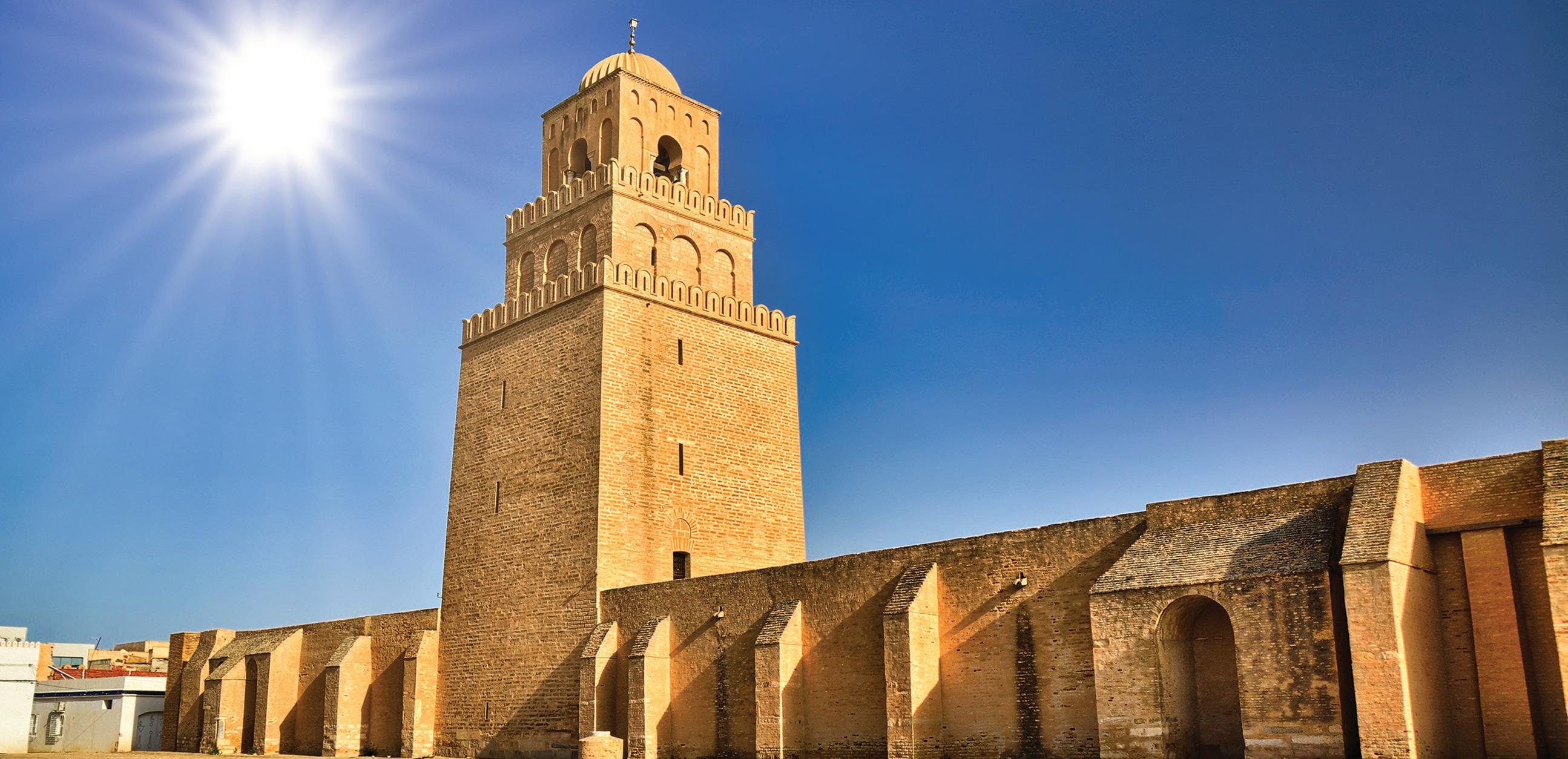
Explore Tunisia’s ancient past, including the legendary city of Carthage
Appreciate Tunisia’s Islamic legacy in Kairouan and Sousse
Discover Tunis’s cultural and historical richness, from its modern thoroughfares to ancient Medina
Located in the Maghreb, the western region of the Arab world, Tunisia harbours a myriad of cultural gems, including UNESCO World Heritage sites, stunning landscapes and exquisite gastronomy.
Tunis serves as the country’s historical, cultural and political hub. Its central thoroughfare, Avenue Habib Bourguiba, boasts impressive colonial-era buildings, tree-lined streets and bustling storefronts and cafes. Meanwhile, the ancient Medina is a warren of covered walkways, winding streets and over 700 historical monuments, including palaces, mosques, mausoleums and madrasas.
Delving into Tunisia’s Roman past, our tour will take us to Oudna, a Roman colony with an impressive amphitheatre and aqueduct, Zaghouan – crucial for
supplying water to Carthage – and Thuburbo Majus, a significant Roman site and vital thoroughfare connecting Carthage to the Sahara, brimming with well-preserved ruins.
The country’s Berber, Punic and Roman past is further highlighted at Dougga (Thugga), Bulla Regia and El Djem. El Djem’s Roman amphitheatre has retained much of its original infrastructure, including the arena floor and underground passages; while Bulla Regia and Dougga house excellent structural remains including Hadrianic semi-subterranean homes and temples dedicated to Saturn and Juno Caelestis.
In the 7th century, military campaigns originating from the Arabian Peninsula

Tour Director Nick Jackson graduated from the Institute of Archaeology at University College London, before proceeding to a career as a field director excavating the ancient history of the Eastern Mediterranean in Türkiye and the Near East.
ANCIENT CARTHAGE
According to legend, Queen Dido founded Carthage in 814 BCE. The city’s strategic location, coupled with its formidable navy and flourishing trade routes, allowed Carthage to evolve into an ancient power to rival Rome. Rich in historical artefacts, Carthage showcases stunning displays of wealth, including the Baths of Antoninus, the largest of its kind in Africa.
extended the power and influence of Islam across North Africa. The entry point for the Muslim conquest, Sufetula in Sbeitla, illuminates the transition from the Roman and Byzantine eras to the Islamic state, and its substantial forum temples stand as a testament to the city’s past. Established as the first Islamic city in the Maghreb in 670 CE, Kairouan evolved into an intellectual centre for Islamic scholarship, with the Great Mosque playing a crucial role in the study of sciences, medicine, astronomy and mathematics.
We will stay in a selection of comfortable and welcoming hotels in Tunis, Dougga, Kef, Kairouan and Sousse. These strategically chosen bases will provide ideal starting points for exploring the key historical and cultural sites in our itinerary.
TUNISIA

FITNESS / PRACTICALITIES
A good level of fitness, mobility and stamina is required for this tour, as it involves a significant amount of travel and different hotel stays, as well as time spent walking and standing at historical sites, where there are not always frequent opportunities to sit down. Participants should be prepared for traversing uneven ground, steps and cobbles, as well as dimly lit interiors. Please consult ACE’s minimum fitness requirements in our Booking Terms & Conditions.
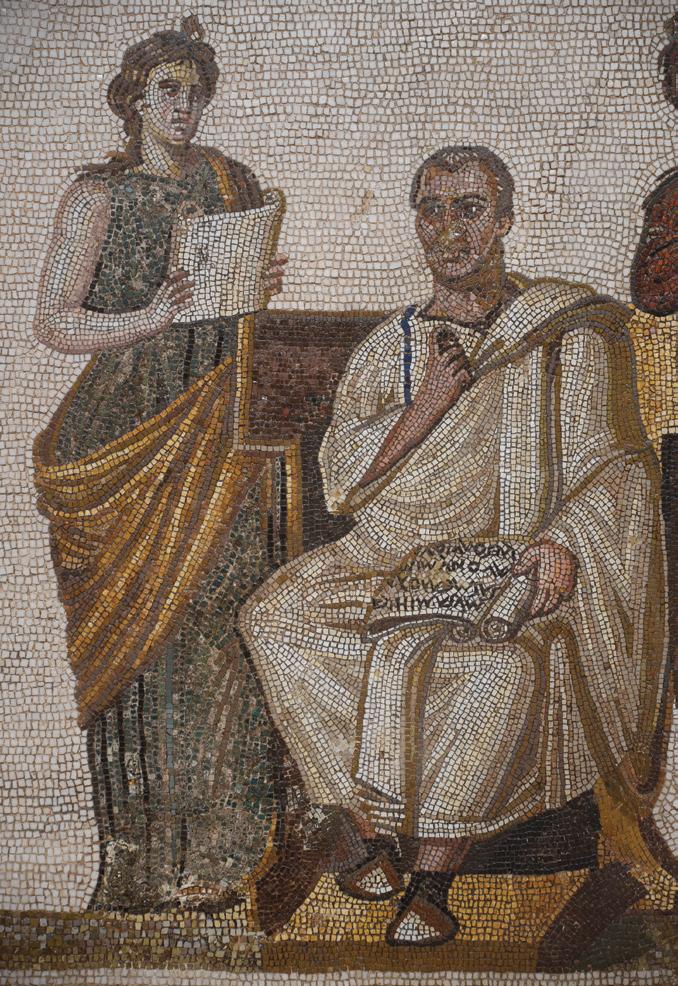
ITINERARY
Please note that the itinerary represents a guide to what we hope to offer, and some elements may be subject to change or confirmation nearer the time.
D ay 1 – Depart London Heathrow 1650 on Tunisair, arriving Tunis 2050. Transfer to El Mouradi Africa, Tunis, for four nights.
D ay 2 – Introductory lecture followed by a visit to the Bardo National Museum (collection of Carthaginian and Roman mosaics). Afternoon walking tour of European (Avenue Habib Bourguiba) and Old Tunis (ancient Medina).
D ay 3 – Morning: Roman aqueduct near Oudna followed by Uthina (amphitheatre) and Zaghouan (Hadrian’s Temple des Eaux). Afternoon: Thuburbo Majus (rural remains including impressive forum), Palaestra of the Petronii (temple dedicated to Mercury, Capitol temple and winter baths).
D ay 4 – Morning visits in ancient Carthage: Byrsa Hill (heart of Dido’s capital), Antonine Baths (one of the largest in the Roman world), Tophet (sacrificial precinct in honour of Tanit) and Punic Ports. Afternoon: Sidi Bou Said (serene blue and white village).
D ay 5 – Transfer to Thugga Hotel, Dougga for overnight stay, with visits to Ain Tounga, Mustis and UNESCO-listed Dougga.
Day 6 – Bulla Regia (outstanding underground villas and in situ mosaics, Memmian baths, theatre and forum) followed by Chemtou (archaeological site). Overnight at Leklil Hotel, Kef.
D ay 7 – Morning: Roman Maktar (museum, triumphal arch, temples, well-preserved baths and enigmatic ‘quadrilobe’). Afternoon: Roman
“Nick brought his own reflections to the sites and artefacts which were thought provoking. His knowledge of the era was excellent”
– ACE customer on a previous tour led by Nick Jackson
remains of Sufetula in Sbeitla (unique tripletempled forum, basilicas, bath complex and baptistry basins with mosaics). Transfer to Kairouan for overnight at Hotel La Kasbah.
D ay 8 – Visits in the holy city of Kairouan including an exterior view of the Great Mosque. Continue to El Djem on the sands of the Sahel plain (amphitheatre and museum with stunning collection of mosaics). Overnight at Marhaba Royal Salem, Sousse.
D ay 9 – Visits in Sousse: museum, mosque and ribat. Transfer to Tunis for overnight at El Mouradi Africa.
D ay 10 – Depart Tunis 1345, arriving Heathrow 1550.
BOOKING AND PRICES
Cost of £2995 includes: return airfare, accommodation based on sharing a twin or double bedded room, nine breakfasts, seven lunches, nine dinners (one light on day 1) with water & coffee, excursions & admissions, gratuities & all taxes.
Not included: travel insurance, single room supplement £415. TOUR CODE: TUNI26
Ancient Treasures of Cairo
November 26 – December 1, 2026

Engage with funerary traditions at the Pyramids of Giza and the Step Pyramid at Saqqara
Discover Coptic Cairo with visits to the Hanging Church, Ben Ezra Synagogue and Citadel
Marvel at the wondrous artefacts in the Grand Egyptian Museum, including the complete Tutankamun collection
Designed to introduce travellers to Cairo’s remarkable past, our new tour takes in the regions of Memphis and Heliopolis, major religious, cultural and administrative centres for thousands of years.
Saqqara served as the necropolis for the ancient capital of Memphis and houses the oldest pyramid ever built, the renowned Step Pyramid. Proceeding to Memphis, we will witness the power and splendour of Ramses II ‘the Great’, whose colossal statue reclines in the Mit Rahina Museum.
At the awe-inspiring Giza Necropolis, we will uncover the burial ground of
Pharaohs, whose final resting places impress not only by their imposing scale but also their intricate interiors, where walls and ceilings are richly adorned with exquisite gold and blue motifs and hieroglyphics.
Dahshur’s burial complex – along with Giza, Saqqara and Abusir – forms the Memphite Necropolis. Here, we will trace the development of Egypt’s pyramids and understand their religious, political and cultural importance.
Dahshur is particularly notable for Sneferu’s Bent Pyramid and Red Pyramid, both among Egypt’s oldest and best-preserved.

This tour will be led by Ellen Jones , PhD. Ellen studied Egyptology at the University of Oxford as an undergraduate through to the award of her DPhil, which explored the relationship between gender, self-presentation and religious decorum in ancient Egyptian elite tombs from the New Kingdom.
This tour is part of our new series of Cultural Breaks , specially designed for the more independent traveller. These tours benefit from the same high level of cultural content as our standard tours with time also given to independent exploration. There will be more free evenings, with the Tour Director and Tour Manager on hand throughout to introduce travellers to some of the lesser-known sites and recommend local places to wine and dine.
Complementing our onsite excursions, we are delighted to be including visits to the newly-opened Grand Egyptian Museum, including a complete collection of treasures from Tutankhamun’s Tomb and his gold funerary mask, and the National Museum of Egyptian Civilisation, which charts Egypt’s past from antiquity to the modern day. We will also wander Coptic Cairo, visiting the imposing medieval-Islamic Cairo Citadel and the Hanging Church, one of the oldest in Egypt.
We will stay at the five-star Sofitel El Gezirah in Cairo, well-situated for our explorations.

Expert Egyptologist and Tour Director Ellen Jones will provide three dedicated lectures across our tour. These lectures will offer travellers a more profound understanding of the city’s rich history and help us to prepare for our site visits, including learning how to ‘read’ the monuments by deciphering hieroglyphics and identifying religious and political figures.
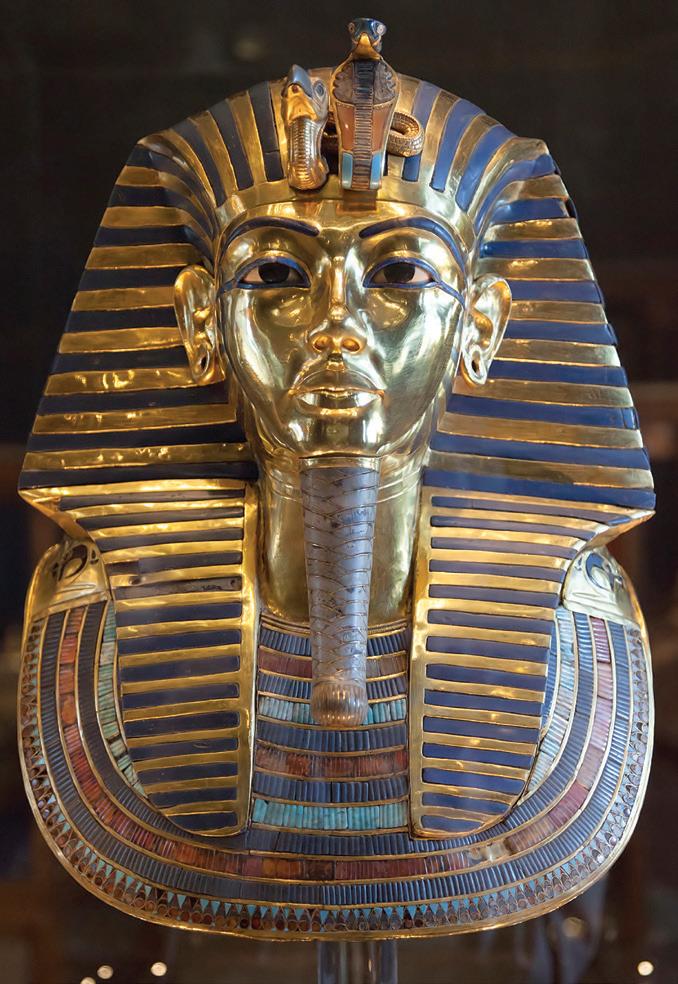
ANCIENT TREASURES OF LUXOR
Complementing our November departure, we are pleased to be offering a sister tour to Luxor, which will take place from February 5–9, 2026. The captivating ‘open-air museum’ of Luxor encompasses the ancient city of Thebes, one of the world’s longest continuously inhabited cities. Here, we will uncover funerary traditions at the Valley of the Kings and Valley of the Queens before viewing the magnificent temples of Karnak and Luxor. We will also discover the extraordinary Dendera Temple Complex, one of the best-preserved of its kind.
FITNESS / PRACTICALITIES
Participants should have a good level of overall fitness, mobility and stamina for this tour. Please be aware that temperatures are also likely to be warm and sites may have little to no shade and limited opportunities to sit down. Ground may also be uneven and tombs dimly lit. We recommend consulting ACE’s usual fitness requirements as outlined in our Booking Terms & Conditions.
ITINERARY
Please note that the itinerary represents a guide to what we hope to offer, and some elements may be subject to change or confirmation.
D ay 1 – Flight from London to Cairo. Transfer to Sofitel El Gezirah, Cairo, for five nights’ stay. Welcome and introduction.
D ay 2 – Morning: Saqqara (Step Pyramid, Pyramid of Unas, Saqqara museum and mastaba of Mereruka). Afternoon: Memphis (colossal statue of Ramses II). Lecture: Memphis, Saqqara and Heliopolis: An Introduction to Ancient Cairo Free evening.
D ay 3 – Full day excursion to the Giza plateau including the Pyramids of Giza (selection of tombs) and the Grand Egyptian Museum. Lecture: Ancient Egypt in the Pyramid Age. Free evening.
D ay 4 – Coptic Cairo including Coptic Museum, Hanging Church, Ben Ezra Synagogue, Cairo Citadel and Sultan al-Nasir Muhammad ibn Qalawun Mosque. Lecture: The Living Horus: Ancient Egyptian Kingship. Free evening.
D ay 5 – Morning: Bent Pyramid and Red Pyramid. Afternoon: Old Egyptian Museum.
D ay 6 – Morning: National Museum of Egyptian Civilisation. Return flight from Cairo to London.
BOOKING AND PRICES
Cost of £2795 includes: return airfare, accommodation based on sharing a twin or double bedded room, five breakfasts, two lunches with water & coffee, two dinners with wine, water & coffee, excursions & admissions, gratuities & all taxes.
Not included: visa, travel insurance, double room for single use supplement £595. Nile-view supplement £195 on request. TOUR CODE: ATCA26
Frida, Diego & Modernism in Mexico City
November 30 – December 8, 2026

Experience unparalleled access to Frida Kahlo’s iconic paintings and Diego Rivera’s emblematic murals
Encounter dynamic architecture including the ethereal Museo Anahuacalli and the ornate Palacio des Bellas Artes
Be immersed in Mayan civilisation and its impact on Frida and Diego at the ancient city of Teotihuacan
The captivating aesthetics of Mexico City, intertwined with its historical legacy, make it an incredible destination for experiencing art and culture. Our tour will explore the city’s artistic and architectural masterpieces with a central focus on the work of Frida Kahlo and Diego Rivera.
A highlight will be Frida Kahlo’s late home, Casa Azul. Known as ‘The Blue House’, this biographical museum preserves objects of her life and provides an insight into the personal environment that influenced many of her paintings.
Diego Rivera’s work, meanwhile, will be explored at the city’s Ministry of Education. Spanning 117 panels across
“Mexico City is arguably one of the most vibrant and exciting cities in the world and certainly one of the richest in culture, with a legacy of art, architecture and traditions that spans two worlds”
– Tour Director Stephen Nelson
the institution and its courtyards, Diego’s monumental narrative is rooted in the left-wing politics of its time. We will also explore the couple’s creative practices at Casa Estudio Diego Rivera y Frida Kahlo.
The Museo Anahuacalli explores preHispanic culture through artefacts derived from Diego Rivera’s personal collections. Constructed using volcanic rock, its pyramid form harks back to Mayan and Toltec design, and reflects Rivera’s deep reverence for his heritage.
Museo de Arte Moderno will introduce the wider backdrop of Mexican Modernism, including the evocative stills captured by Manuel Álvarez Bravo and the surrealist social commentary of David A Siqueiros.
Mexico City also offers a wealth of ancient sites, including the Templo Mayor Museum and Teotihuacan. Once a leading centre in the Mayan world, and later claiming the position of Aztec capital, Teotihuacan continues to project a noble monumentality – home to the Temple of the Sun and Temple of the Moon alongside enchanting red wall paintings and frescoes of the Tepantitla complex.
We will stay throughout at a comfortable hotel of a four-star quality situated near to the historical centre of Mexico City.
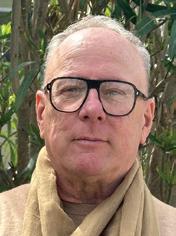
This tour will be led by Stephen Nelson , BA, MA, an artist who divides his time between London and southern Italy. Stephen’s work has been exhibited internationally and he has curated exhibitions across the world. He has led numerous art and cultural tours throughout Europe and further afield, and has acquired specialist knowledge of Mexico.
MEXICO

FITNESS / PRACTICALITIES
A high level of fitness is required for this tour, as there will be a significant amount of walking and standing each day at museums and galleries. Mexico City is at altitude, and adjusting to this elevation may cause temporary feelings of discomfort or possibly altitude sickness. The ancient site of Teotihuacan has gravel walkways and worn stone stairs to access the Temple of the Sun. Participants should consult their GP for advice regarding vaccinations and mosquitos. For more information on our minimum fitness requirements, please see our Booking Terms & Conditions.
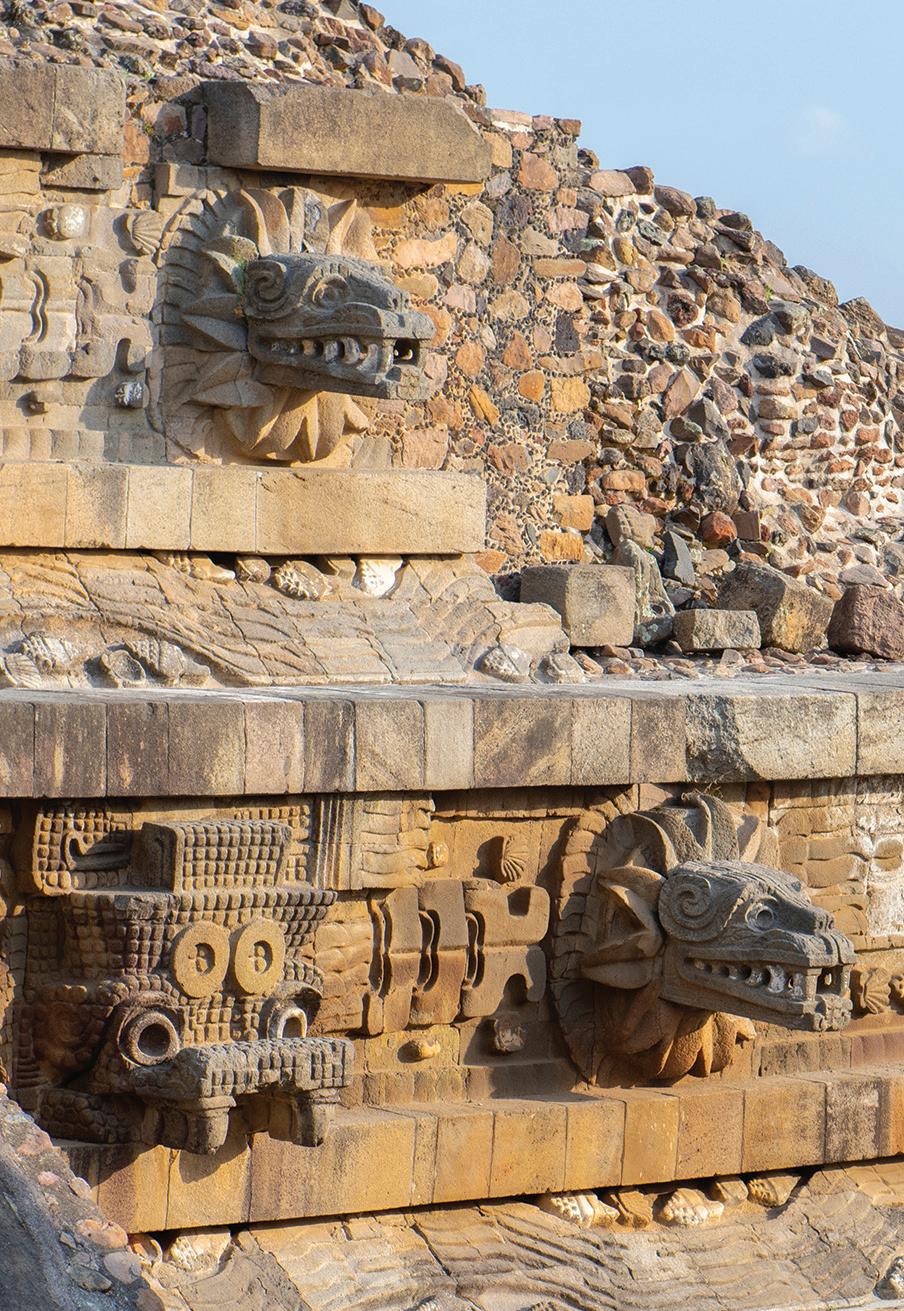
“The post-revolutionary city was, and still is, a magnet for artists and writers, and it hums with music, colour and unexpected delights”
– Tour Director Stephen Nelson
ITINERARY
Please note that the itinerary represents a guide to what we hope to offer, and some elements may be subject to change or confirmation.
D ay 1 – Depart London Heathrow 1245 on British Airways, arriving Mexico City International Airport 1835. Transfer to hotel for seven nights.
D ay 2 – Morning lecture: The Early Peoples of Mexico. Visits to the Templo Mayor Museum (original altered pyramids) and Mexico City Metropolitan Cathedral (built on the crossroads of the four original neighbourhoods of Tenochtitlan).
D ay 3 – Visits to the Ministry of Education (117 murals by Diego Rivera) and National Palace (subject to confirmation), followed by Casa de los Azulejos (exterior viewing of tiled facade) and Palacio Bellas Artes (concert hall built in white Carrara marble with Diego Rivera murals). Free evening.
D ay 4 – Morning lecture: Frida Kahlo followed by excursion to Casa Azul (Frida Kahlo’s home and biographical museum) and Casa Estudio de Diego Rivera y Frida Kahlo (studios with
functionalist architecture designed by Juan O’ Gorman). Afternoon visit to Museo Anahuacalli (Diego Rivera’s temple of arts with pre-Hispanic collections). Free evening.
D ay 5 – Full day at Teotihuacan (ancient city complex), including Avenue of the Dead, Temple of the Sun, Temple of the Moon and the Tepantitla complex (red wall paintings).
D ay 6 – Visit to the National Anthropological Museum and Museo de Arte Moderno (collections including Manuel Álvarez Bravo and David A Siqueiros). Free afternoon and evening.
D ay 7 – Visits to the Museum of Folkloric Art, Museo Soumaya (European and Hispanic art) and Museo Jumex (large collection of contemporary art).
D ay 8 – Free time followed by visit to Casa Gilardi (Modernist private residence designed by Luis Barragán – subject to confirmation). Transfer to Mexico City International Airport, departing 2100.
D ay 9 – Arrive Heathrow 1310.
BOOKING AND PRICES
Cost of £5295 Includes: return airfare, accommodation based on sharing a twin or double bedded room, seven breakfasts, four lunches, four dinners (one light on arrival) with water & coffee, excursions & admissions, gratuities & all taxes.
Not Included: travel insurance, double room for single use supplement £495. TOUR CODE: MEXO26
Ancient Macedonia: The Empire of Philip II &
Alexander the Great
May 21–28, 2026

Delve into a wealth of Ancient Macedonian sites, where Philip II and Alexander the Great once trod
Sample the ancient flavours of the region during a visit to a vineyard at Naousa
Uncover the astounding treasures of Vergina, ancient Macedonia’s first capital
Originating in the mountains of northern Greece, Macedon dramatically expanded when Philip II triumphed over the powers of Thebes and Athens. Alexander’s campaigns extended the empire far beyond its original borders, stretching eastward to the Indus Valley, marking a brief but impactful period of Macedonian dominance.
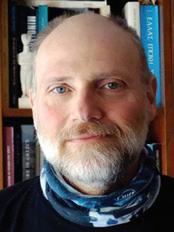
This tour will be led by Aristotle Koskinas . Aristotle is an archaeologist, specialising in the classical era and one of the pioneers in the study of ancient roof tiles and architectural terracottas in Greece.
“Aristotle was exceptional, extremely knowledgeable, helpful and made everywhere come to life”
– ACE customer on a previous tour to Greece with Aristotle Koskinas
Thessaloniki will provide glimpses into the era of the late Macedonian Empire following Alexander’s death, a period marked by civil unrest, evident at the Palace of Galerius, Arch of Galerius and Rotunda. The archaeological museum, meanwhile, offers a comprehensive collection of artefacts from ancient Macedon.
At Pella, former capital of Philip’s empire and Alexander’s birthplace, we will discover the region’s natural beauty alongside impressive ruins and a museum. We will also explore the restored palace and bath complex and marvel at the exquisite mosaics and inscriptions adorning the peristyle houses.
Ancient treasures await in Vergina, first capital of the Kingdom of Macedonia and site of Philip of Macedon’s burial and Alexander’s coronation, and at the
Royal Tombs of Lefkadia, home to a remarkably preserved archaeological museum.
The empire’s military strength is evident at Philippi where nearby gold mines supported funding for military expeditions and luxurious lifestyles. Amphipolis was a crucial centre during Alexander’s campaigns; excavations of the site have revealed tombs, political buildings, ancient walls and artefacts, including the Lion of Amphipolis.
Dion housed the principal Macedonian sanctuary dedicated to Zeus, which would once have witnessed Alexander’s offerings to this ruling and protective deity ahead of his Persian campaign. We will also encounter Aristotle – famously Alexander’s teacher and a fundamental figure in Western philosophy – during visits to his birthplace with its ancient remains and possible tomb.
We will stay at the four-star Royal Hotel, Perea. Set on top of a hill near Thessaloniki, it offers stunning views over the city and the Thermaikos Gulf. Comfortable and welcoming, this hotel provides an ideal base for our visits into the region of Ancient Macedonia.
GREECE
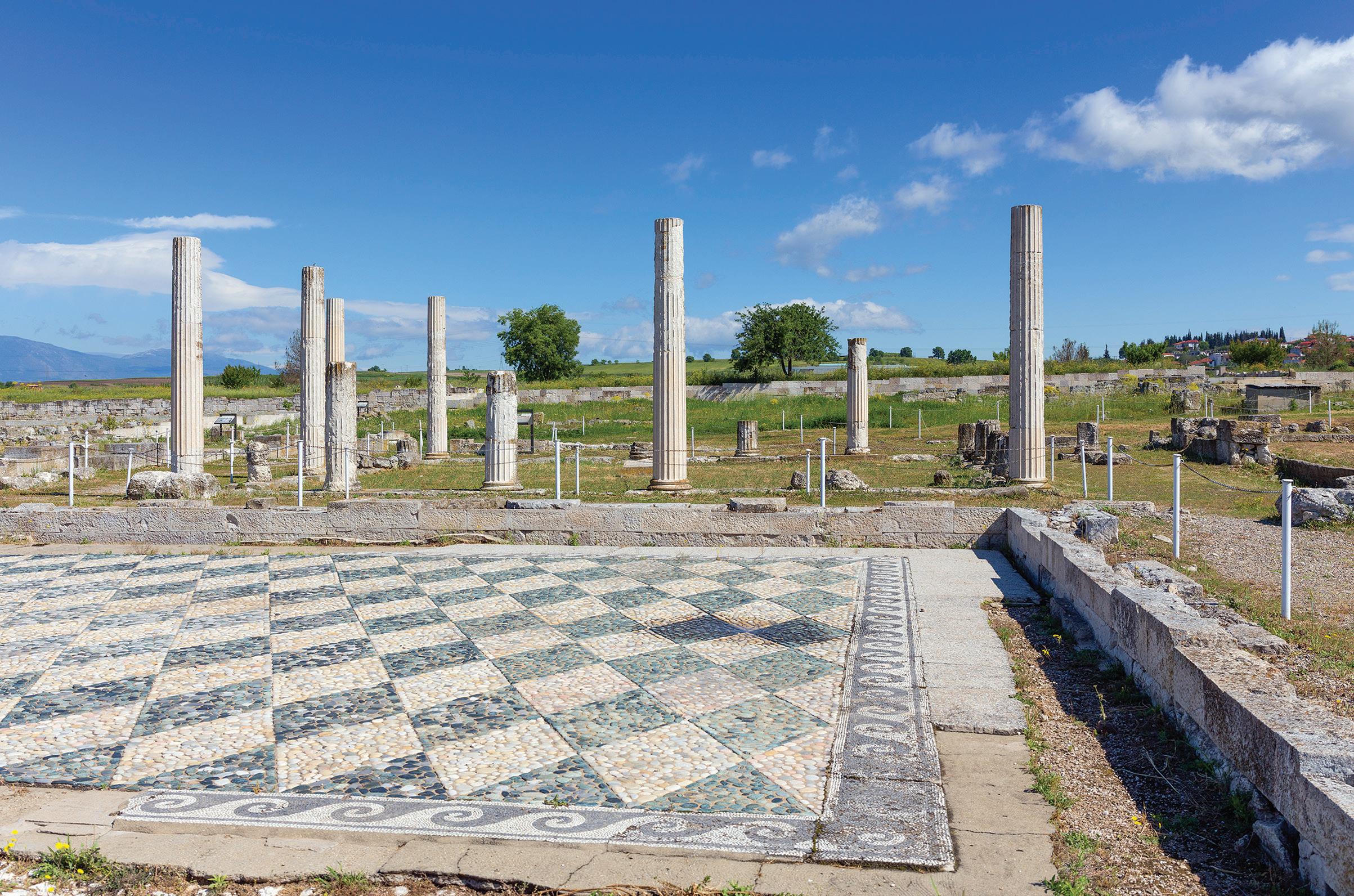
FITNESS / PRACTICALITIES
This tour is designed to make the most of our stay in northern Greece with a wide variety of visits. The itinerary contains some longer days, so participants should have a good overall level of fitness, mobility and stamina. At some sites the ground is uneven or hilly, and there are steps to navigate. Please note that some archaeological sites are exposed, and the weather will be warm. For ACE’s minimum fitness criteria, please see the Booking Terms & Conditions.
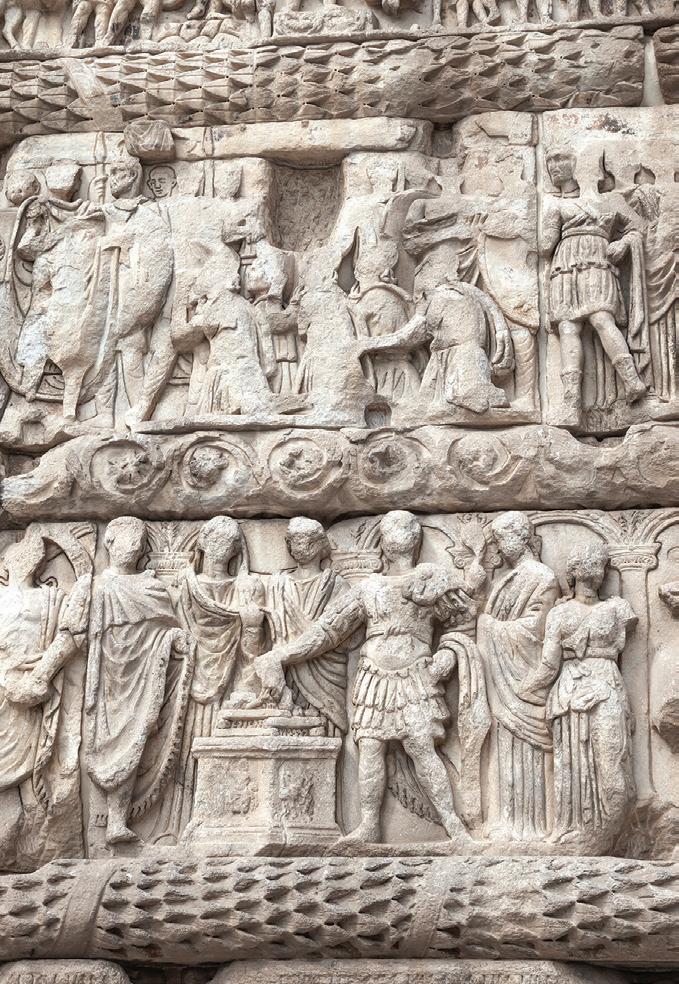
ANCIENT WINE
At nearby Naousa, a special vineyard tour and wine tasting will include the chance to sample authentic Macedonian wine from the Xinomavro grape, believed to have once been savoured by Alexander the Great in antiquity – as Plutarch recalls in The Parallel Lives: “Alexander, after returning from the funeral pyre and assembling many of his friends and officers for supper, proposed a contest in drinking neat wine, the victor to be crowned.”
ITINERARY
Please note that the itinerary represents a guide to what we hope to offer, and certain visits may be subject to change or confirmation nearer the time. Some sites in Greece can close at short notice, so minor adjustments may be made, including to the order of visits.
D ay 1 – Depart London Gatwick 0645 on British Airways, arriving Thessaloniki 1210. Transfer to Royal Hotel, Perea for seven nights. Welcome and introductory talk.
D ay 2 – Along Via Egnatia to Pella (capital of Philip of Macedon’s empire and birthplace of Alexander the Great): peristyle houses and museum. Vineyard tour, lunch and tasting in Naousa with the option to sample Macedonian wine from the Xionmavro grape, followed by visits in Lefkadia (tombs and School of Aristotle). Free evening.
D ay 3 – Excursion to Vergina (former capital of Macedonian empire) for visits to the Polycentric Museum of Aigai and Museum of the Royal Tombs. Evening lecture.
D ay 4 – Archaeological Site of Olynthos (sacked by Philip of Macedon in 348 – subject to reopening) and Archaeological Museum of Polygyros. Evening lecture.
D ay 5 – Visits including Stagira (ancient walls and tomb of Aristotle), Amphipolis (archaeological museum, park and gymnasium) and Archaeological Site of Philippi (founded by Philip of Macedon; theatre, forum and basilicas).
D ay 6 – Full day visits in Thessaloniki including Palace of Galerius, Arch of Galerius, Roman Forum, Rotonda, Statue of Alexander the Great and Archaeological Museum of Thessaloniki (permanent exhibition on the history of Ancient Macedonia).
D ay 7 – Visit to Dion at the foot of Mount Olympus (a sacred place in Ancient Macedonia) followed by further visits in Thessaloniki including Venizelou excavations. Evening lecture.
D ay 8 – Depart Thessaloniki 1300, arriving Gatwick 1435.
BOOKING AND PRICES
Cost of £2995 includes: return airfare, accommodation based on sharing a twin or double bedded room, seven breakfasts, one lunch with wine tasting, six dinners with wine, water & coffee, excursions & admissions, gratuities & all taxes.
Not included: travel insurance, double room for single use supplement £195.
TOUR CODE: MACE26
In the Footsteps of Le Corbusier: His Life & Legacy
June 8–14, 2026
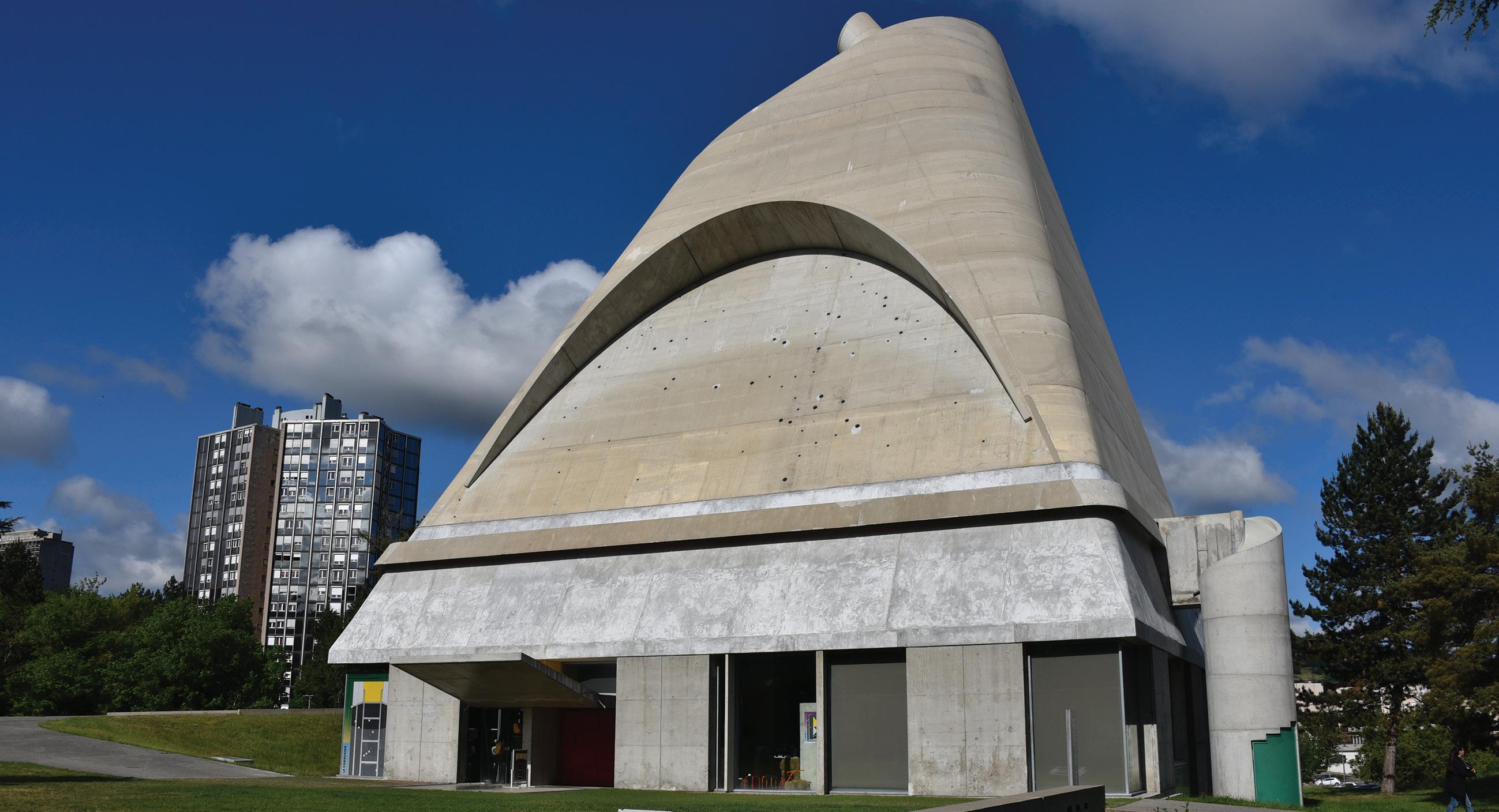
Travel through France tracing the life and works of Le Corbusier, one of the pioneers of modern architecture
Explore fascinating buildings in Paris, including the Maison La Roche-Jeanneret and Porte Molitor, designed by Le Corbusier and his home for many years
Stay overnight in a UNESCO-listed building designed by the architect, now preserved as the Hotel Le Corbusier in Marseille
The Swiss-French architect, designer, painter, urban planner and writer Le Corbusier, born Charles-Édouard Jeanneret in 1887, is one of the most important and influential figures in modern architecture. This brand new tour devotes a week to exploring his life, work and legacy on a journey from Paris to Lyon and Marseille.
Known for his belief that “a house is a machine for living in”, Le Corbusier pioneered many principles that were key to the development of modernist design. His work was underpinned by
“Thus architecture becomes the mirror of the world”
– Le Corbusier, Vers une architecture ‘Towards a New Architecture’, 1923
a consideration of modern needs and how architecture might both mirror and enable new ways of living.
The Villa Savoye, thought to epitomise Le Corbusier’s ethos, was originally conceived for its patrons as a retreat from urban life in Paris and, following a period of dereliction in the 20th century, was preserved for posterity and listed by UNESCO in 2016. Meanwhile, the Villa La Roche-Jeanneret in Paris is now home to the Fondation Le Corbusier, established to preserve and promote the architect’s work.
In Lyon, our itinerary includes an excursion to the former steel town of Firminy, redeveloped during the post-war period to create a new way of living. We will take in a number of sites with which Le Corbusier was involved, including the cultural centre, Saint-Pierre Church and a Unité d’habitation – the type of modernist residential housing developed by the architect. Our tour concludes in
Marseilles, where we will stay at Hotel Le Corbusier, a UNESCO-listed hotel occupying the architect’s iconic Cité radieuse, offering a unique opportunity to stay in an original building designed by the architect.
In Paris we will stay at the Hotel Auteuil Tour Eiffel, conveniently located for our explorations of the city, followed by a four-star hotel in Lyon. Our tour concludes with an overnight stay at Hotel Le Corbusier, Marseille: while the rooms are smaller and of a simpler standard, they retain their authentic modernist character.

This tour will be led by Alan Powers , PhD, one of the UK’s leading architectural historians and an expert in 20th century architecture and design. A former Chairman of the 20th Century Society, Alan is the author of many books, including Bauhaus Goes West , 2019.
FRANCE

FITNESS / PRACTICALITIES
A good level of fitness is required for this tour, and participants should meet ACE’s usual fitness criteria, as outlined in our Booking Terms & Conditions. Some visits will be made on foot and there may not always be frequent opportunities to sit down. Please note that the tour involves two train journeys through France, so participants should feel comfortable handling their own luggage on and off the trains and through the stations, which can be busy.

“Very helpful and extremely knowledgeable. Clearly an expert with so much interesting information to impart. A very good Tour Director”
– ACE customer on a 2025 tour led by Alan Powers
ITINERARY
Please note that the itinerary represents a guide to what we hope to offer, and some elements may be subject to change or confirmation nearer the time. Some visits will be exterior only.
D ay 1 – Depart London Heathrow 1155 on British Airways, arriving Paris Charles de Gaulle Airport 1415. Transfer to the Auteuil area of Paris for three nights at the Hotel Auteuil Tour Eiffel. Welcome and introductory talk.
D ay 2 – Morning architectural visits in Auteuil: Rue Franklin, Rue Maillart Stevens, UNESCOlisted Maison La Roche-Jeanneret (Le Corbusier and Jeanneret, 1923-25) and Porte Molitor (Le Corbusier and Jeanneret, 1931-34, where Le Corbusier lived for over 30 years). Afternoon: Cité Seurat and Maison Guggenbuhl (Lurçat –exteriors), Maison Ozenfant (one of the first Purist houses in Paris – exterior), Pavillon Suisse and Maison du Brésil (part of Cité Internationale Universitaire de Paris), and Cité de Refuge (Armée du Salut, Le Corbusier and Jeanneret’s third building for the Salvation Army).
D ay 3 – Excursion to Poissy for visit to UNESCO-listed Villa Savoye followed by exterior views of Villa Steine et Garches (Le Corbusier and Jeanneret, 1926-28). Visit to the
Museum of the Thirties, Boulogne-Billancourt, followed by the exteriors of Maison Cook, the former home of sculptor Froriep de Salis (Lurçat), and Maisons Jaoul. Free evening.
D ay 4 – Transfer by TGV to Lyon. Afternoon: architectural tour of new buildings in La Confluence area, including Musée des Confluences (museum of science and anthropology, Coop Himmeblau, 2014). Two nights in Lyon. Evening lecture.
D ay 5 – Excursion to Firminy (former steel town, redeveloped in the post-war period to create a new way of living) for Le Corbusier trail (cultural centre, sports stadium, Saint-Pierre Church, housing). Afternoon: Couvent SainteMarie de la Tourette (Dominican Order friary, 1953-61). Free evening.
D ay 6 – Transfer by TGV to Marseille. Visit to the Museum of European and Mediterranean Civilisations (architectural landmark with displays synthesising anthropology, history and art). Overnight stay at UNESCO-listed Hotel Le Corbusier, Marseille.
D ay 7 – Morning lecture followed by tour of hotel. Transfer to Marseille Airport for 1355 departure, arriving Heathrow 1500.
BOOKING AND PRICES
Cost of £3595 includes: return airfare, accommodation based on sharing a twin or double bedded room, six breakfasts, one lunch, four dinners with wine, water & coffee, excursions & admissions, gratuities & all taxes. Not included: travel insurance, double room for single use supplement £515. TOUR CODE: CORB26
Art Treasures of Lucca
June 2–7, 2026
Discover the history of Lucca, preserved in its enchanting medieval streets and ancient city walls
Encounter incredible art and architecture including the façade of the Basilica di San Frediano
Experience the grand interiors and gardens of Villa Reale di Marlia and Villa Torrigiani
Unlike some of its more crowded counterparts, the city of Lucca maintains a bewitching sense of calm. Walking its historic streets, we will discover an array of treasures, from the Piazza dell’Anfiteatro – a central plaza echoing Lucca’s original amphitheatre – to the Basilica di San Frediano with its brilliant Byzantine mosaic facade.
The Duomo di San Martino is rendered in polychromatic marble; its exterior balances intricacy and grandeur, whilst inside we will appreciate Gothic aesthetics and the famous Volto Santo relic that has attracted pilgrims for centuries.
We will venture into Lucca’s environs to explore two grand villas and their peaceful grounds: Villa Torrigiani is adorned with frescoes, and at the Villa Reale di Marlia, we will soak up elegant and airy interiors and wander its spectacular parkland.
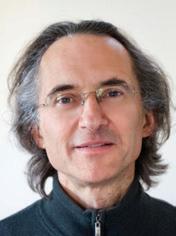
This tour will be led by Andrew Spira , MA, who studied at the Courtauld Institute of Art, and later specialised in Byzantine and Russian icons at the Temple Gallery. After becoming a curator at the V&A Museum, Andrew held the position of Programme Director at Christie’s Education, and has been leading tours across Europe for over 20 years.

“Andrew was extremely knowledgeable on a range of subjects and has a gentle and attractive manner”
– ACE customer on a previous Italian tour led by Andrew Spira
The ancient town of Pistoia – its architectural landscape brimming with medieval watchtowers, arcaded piazzas and stunning striped marble churches –never fails to spark wonder. Our tour will encompass the town’s history from the Fortezza di Santa Barbara, a 14th century castle, to modern and contemporary art at Museo del Novecento e del Contemporaneo di Palazzo Fabroni.
We will stay at the four-star Hotel Ilaria, a comfortable and clean establishment centrally located within the historic city walls, making it the perfect base for exploring Lucca’s quaint streets and accessing local sites.
FITNESS / PRACTICALITIES
This tour includes a fair amount of walking and standing at historical sites. The ground is mainly flat, but there are cobbled streets, steps and gentle inclines in parts. For further guidance please refer to ACE’s fitness criteria in our Booking Terms & Conditions.
ITINERARY
Please note that opening times in Italy are regularly subject to change. While we will aim to adhere as closely as possible to the itinerary, some details may be altered nearer the time and certain visits may be subject to confirmation.
D ay 1 – Depart London Heathrow 0825 on British Airways, arriving Pisa 1140. Transfer to Hotel Ilaria, Lucca for five nights. Welcome and introduction. Orientation walk including visit to Orto Botanico Comunale di Lucca (botanical gardens).
D ay 2 – Visits in Lucca: Porta Santa Maria (pilgrims’ entrance), Piazza dell’Anfiteatro (built on the remains of a Roman amphitheatre), Basilica of San Frediano (Byzantine mosaic and Romanesque architecture) and Museum of Villa Guinigi (Renaissance Lucchese art).
D ay 3 – Visits in Lucca: Chiesa di San Michele in Foro (Pisan-Romanesque façade) and Palazzo Pfanner (museum and gardens). Afternoon excursion to Villa Torrigiani (16th century estate and gardens). Free evening.
D ay 4 – Visit to Duomo di San Martino (Gothic cathedral with Volto Santo relic), including museum. Afternoon excursion to Villa Reale di Marlia (17th century estate and renowned gardens).
D ay 5 – Visits in Pistoia: Fortezza di Santa Barbara (14th century castle), Museo del Novecento e del Contemporaneo di Palazzo Fabroni (modern and contemporary art) and Museo dello Spedale del Ceppo (museum in 13th century hospital). Free time in Lucca.
D ay 6 – Depart Pisa 1155, arriving Heathrow 1320.
BOOKING AND PRICES
Cost of £2995 includes: return airfare, accommodation based on sharing a standard twin or double bedded room, five breakfasts, one lunch, four dinners with wine, water & coffee, excursions & admissions, gratuities & all taxes.
Not included: travel insurance, standard double room for single use supplement £450, small double room for single use supplement £375. TOUR CODE: ATLU26
Schubert in Schwarzenberg
August 20–27, 2026
Highlights include Quatuor Danel and the Minetti Quartet
Star soloists perform Schubert Lieder alongside Brahms’s Die schöne Magelone
Visit the fortified town of Feldkirch, resplendent with medieval charm
Each summer, amidst the tranquil mountain scenery of the Bregenz Forest, musicians gather to present Schubert’s timeless music alongside works by other composers. Our venue is the Angelika Kauffmann Hall, one of the best places to hear chamber music in the country.
Two ensembles – the multi-awardwinning Minetti Quartet and the critically acclaimed Quatuor Danel – will perform Schubert’s String Quartet in A minor, D 804 ‘Rosamunde’; his Octet in F, D 803; and Schumann’s Piano Quintet in E flat, Op 44. Lieder forms a core focus, presented by a starry line-up including Sophie Rennert, Konstantin Krimmel and Andrè Schuen – the latter taking on Brahms’s chivalric song cycle Die schöne Magelone, Op 33.
Neither is piano neglected, as we welcome David Fray and Elizabeth Leonskaja to the stage for Schubert’s exquisite Six moments musicaux, D 780; his masterful sonatas in B flat (D 960) and A (D 959); and the Four Impromptus, D 935.
Our tour includes a guided tour of Schwarzenberg alongside several cultural excursions, including the fortified town of Feldkirch and historic Konstanz, both new for 2026.

Tour Director
Nicholas Wearne , BA, MPhil, is an awardwinning organist who was previously Organist at St Martin-in-the-Fields, Trafalgar Square. Nicholas currently holds the position of Senior Tutor at the Royal Birmingham Conservatoire.

“A most enjoyable tour from ACE. Expert leadership and tour management… Excellent music programme”
– ACE customer on the 2025 Schubert in Schwarzenberg tour led by Nicholas Wearne
We will stay in the luxurious four-star Hotel Die Wälderin, a short drive from Schwarzenberg.
FITNESS / PRACTICALITIES
A good level of fitness is required for this tour, which involves walking for up to 90 minutes at a time. Participants should feel comfortable ascending stairs, as lifts are not available at some visits and restaurants. Please note this tour also involves walking over cobbles (which may be slippery when wet) and negotiating occasionally steep inclines and rugged terrain. The journey to and from Zurich Airport takes approximately two and a half hours, and this tour includes a ferry crossing.
ITINERARY
Please note that the itinerary represents a guide to what we hope to offer, and some elements (including the musical programme) may be subject to change nearer the time.
D ay 1 – Depart London Heathrow 1220 on British Airways, arriving Zurich 1505. Welcome and introduction. Seven nights at Hotel Die Wälderin, Mellau.
D ay 2 – Walking tour of Schwarzenberg, lunch at Berghaus Kanisfluh, free time and early evening lecture. Recital with David Fray (piano): Schubert Six moments musicaux, D 780, Sonata in B flat, D 960.
D ay 3 – Morning: Feldkirch. Afternoon concert with Quatuor Danel and Elisabeth Leonskaja
Schubert String Quartet in A minor, D 804 ‘Rosamunde’; Schumann Piano Quintet in E flat, Op 44. Evening recital with Konstantin Krimmel (baritone) and Ammiel Bushakevitz (piano): Schubert Dichterliebe, Op 48.
D ay 4 – Free morning. Afternoon lecture followed by recital with Christiane Karg (soprano) and David Fray (piano): programme to be announced. Evening recital with Elisabeth Leonskaja (piano): Schubert Sonata in B major, D 575, Four Impromptus, D 935, Sonata in A major, D 959.
D ay 5 – Morning: Rieger Orgelbau workshop. Afternoon lecture followed by recital with Andrè Schuen (baritone) and Daniel Heide (piano): Brahms Die schöne Magelone, Op 33.
D ay 6 – Daytime excursion by ferry to Konstanz. Evening recital with Sophie Rennert (mezzo soprano) and Joseph Middleton (piano): Schubert Winterreise, D 911.
D ay 7 – Free morning. Afternoon concert with the Minetti Quartet: Schubert Overture in C minor, D 8A, String Quartet in C, D 46, Octet in F, D 803. Evening song recital featuring Nikola Hillebrand (soprano), Patricia Nolz (mezzo), Mauro Peter (tenor), David Steffens (bass) and Malcolm Martineau (piano) – programme to be announced.
D ay 8 – Morning: St Gallen. Depart Zurich 1600, arriving Heathrow 1645.
BOOKING AND PRICES
Cost of £4695 includes: return airfare, accommodation based on sharing a premium twin or double bedded room, performances as described, seven breakfasts, two lunches (one light), seven dinners with wine, water & coffee, excursions & admissions, gratuities & all taxes. Not included: travel insurance, premium double room for single use supplement £245. TOUR CODE: SCSC26
FINLAND
Sibelius Festival in Finland
August 25–30, 2026
Finlandia, Valse Triste, the Violin Concerto and Symphonies 2-4 feature alongside works by Richard Strauss and Rachmaninov
Explore the composer’s former home of Ainola on the shores of Lake Tuusulanjärvi
Discover the famous mansion Hvitträsk and the charming medieval Old Town in Porvoo
There is something extraordinary about hearing the music of Jean Sibelius within the landscapes he knew and this is surely why music aficionados flock to Lahti for the International Sibelius Festival. Performances take place in Sibelius Hall on the southern shores of Lake Vesijärvi, home to the acclaimed Lahti Symphony Orchestra.
Sibelius’s orchestral music anchors our programme, including the Violin Concerto featuring Inmo Yang, Symphony No 2, Valse Triste and Finlandia. Richard Strauss’s Don Juan appears in our opening concert, paired with the Violin Concerto, which Strauss himself conducted at its Berlin premiere in 1905. Symphony No 2 began life as an attempt to create music for the story of Don Juan, bringing this concert’s musical story full-circle.
Ferruccio Busoni’s monumental Piano Concerto – performed by the awardwinning Kirill Gerstein – accompanies Finlandia, Symphony No 3 and the heartbreaking Valse Triste. We finish with an arresting duo, The Bard and Nightride and Sunrise, alongside Rachmaninov’s The Bells and Sibelius’s Symphony No 4.

Tour Director Sandy Burnett , MA, is a musician and broadcaster who spent a decade as a presenter on BBC Radio 3. He is the author of the Idler Guide to Classical Music and has recently been appointed as the Hogwood Fellow of the Academy of Ancient Music.
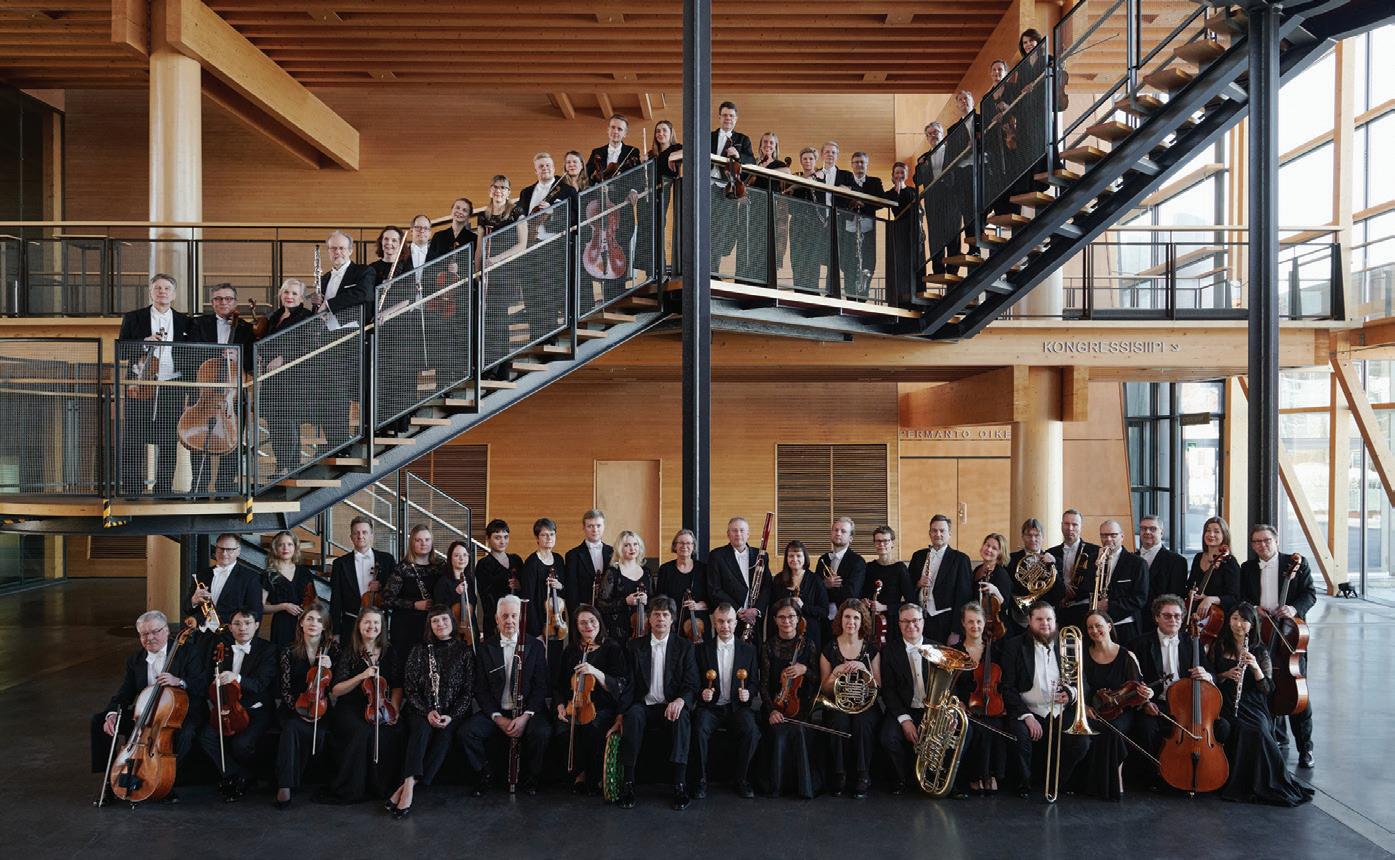
We will visit Ainola, the composer’s atmospheric former home, and enjoy a behind-the-scenes tour of Sibelius Hall. New for 2026, we will also wander the Old Town in Porvoo, one of Finland’s oldest cities and home to some wonderfully preserved medieval architecture.
Our Helsinki accommodation will be the four-star Solo Sokos Hotel, and in Lahti we will stay at the four-star Solo Sokos Lahden Seurahuone Hotel.
FITNESS / PRACTICALITIES
This tour has a full itinerary to make the most of our time at the festival, so a good level of stamina is required. Participants should be comfortable staying on their feet for 2-3 hours (with stops) during the Helsinki walking tour, and some ground is cobbled and uneven. Participants should also be comfortable navigating stairs and steps. Subject to scheduling, we hope to include an evening performance in Helsinki, at the Musiikkitalo or Opera House, however this cannot be confirmed until much nearer departure.
ITINERARY
Please note that the itinerary represents a guide to what we hope to offer, and some elements may be subject to change nearer the time.
D ay 1 – Depart London Heathrow 0930 on Finnair, arriving Helsinki 1420. Two nights at Solo Sokos Hotel, Helsinki. Welcome and introduction.
D ay 2 – Walking tour of Helsinki (Lutheran Cathedral, University Library – exteriors) and Ateneum Art Museum. Evening performance in Helsinki at the Musiikkitalo or Opera House (subject to final scheduling).
Day 3 – Via Sibelius Monument and Porvoo Old Town to Solo Sokos Lahden Seurahuone Hotel, Lahti, for three nights. Lecture and opening
“I feel refreshed by a relaxed week with wonderful music, food and company. Finland exceeded my expectations and the ACE team delivered a superb experience”
– ACE customer on a previous Sibelius Festival in Finland tour
concert featuring Sinfonia Lahti with Hannu Lintu (conductor) and Inmo Yang (violin): R Strauss Don Juan; Sibelius Violin Concerto, Symphony No 2.
D ay 4 – Morning: Villa Ainola (Sibelius’s house) and afternoon chamber concert. Independent dinner. Evening concert featuring Sinfonia Lahti with Hannu Lintu (conductor), Kirill Gerstein (piano) and YL Male Voice Choir: Sibelius Valse Triste, Symphony No 3, Finlandia ; Ferruccio Busoni Piano Concerto.
D ay 5 – Morning lecture and tour of Sibelius Hall. Afternoon chamber concert. Evening closing concert featuring Sinfonia Lahti with Hannu Lintu (conductor), Dominante Choir and soloists: Sibelius The Bard, Nightride and Sunrise, Symphony No 4; Rachmaninov The Bells
D ay 6 – Transfer to Helsinki Airport via Hvitträsk (famous mansion) – final flight times permitting. Depart Helsinki 1600, arriving Heathrow 1705.
BOOKING AND PRICES
Cost of £3395 includes: return airfare, accommodation based on sharing a twin or double bedded room, performances as described, five breakfasts, three lunches (one light), four dinners (one light) with water & coffee, excursions & admissions, gratuities & all taxes.
Not included: travel insurance, double room for single use supplement £295.
TOUR CODE: SIBE26
GERMANY
Bauhaus: German Modern Art & Design –100 Years in Dessau
September 15–20, 2026
Discover highlights of the Bauhaus School and modernist design 100 years since the school’s foundation in Dessau
Take in the major centres of Weimar and Dessau alongside the lesser-visited but culturally rewarding town of Jena
Study the art, architecture and design of the Bauhaus School and related artists, including creations by Walter Gropius and Henry van de Velde
Of all the avant-garde enterprises in art and design between the wars, the Staatliches Bauhaus provides a paradigm of modernism. This tour offers the opportunity to explore not only the Bauhaus but also the movement’s wider artistic context.
In Weimar, a city already famous for its associations with J W von Goethe and Friedrich Nietzsche, the Bauhaus can be seen in the context of German thinking about art, nature and politics. Here, we will take in the Bauhaus Building, including the restored office of Walter Gropius, and the Haus am Horn, a prototype house built to showcase Bauhaus design principles. In Jena, meanwhile, we will enjoy a privileged visit to Gropius’s pioneering Haus Auerbach, built in 1924 and one of the few private homes that he constructed.
In 1925, the school was transferred to Dessau, its most famous location.

Tour Director Alan Powers , PhD, studied History of Art at Cambridge University and is a specialist in the art, architecture and design of the 20th century. A former Chairman of the 20th Century Society, Alan is the author of many books, including Bauhaus Goes West , 2019.

Gropius designed a new building to house the school which, in its restored state, powerfully evokes what it might have been like to study there. 2025 will mark 100 years since the establishment of the Bauhaus School here and the beginning of the city’s celebrations –we look forward to exploring special exhibitions that mark the occasion alongside a visit to the Bauhaus Museum.
Our tour begins with three nights in Weimar at the four-star Dorint Hotel Am Goethepark, located close to the Bauhaus Museum, followed by two nights in Dessau at the modern Radisson Blu Fürst Leopold Hotel.
FITNESS / PRACTICALITIES
A good level of fitness is required for this tour as it involves a significant amount of walking, including over cobbled streets, up stairs and occasionally uphill. Please note, several of our visits involve spending time outside looking at exterior architecture, and the weather in September can be chilly. Participants should meet ACE’s usual fitness criteria, as outlined in our Booking Terms & Conditions.
ITINERARY
The itinerary represents a guide to what we hope to offer, and some visits to houses cannot be fully confirmed until nearer the time.
Day 1 – Depart London Heathrow 1100 on British Airways, arriving Berlin 1355. Transfer to Weimar for three nights at Dorint Hotel Am Goethepark.
Day 2 – Morning introductory lecture followed by visits to former Bauhaus Building (including restored office of Walter Gropius) and Haus am Horn. Afternoon: Walter Gropius monument and Neues Bauhaus Museum Weimar.
“It was an incredibly rich experience… Alan provided fascinating historical, political and biographical context to the locations, the art and the personalities”
– ACE customer on a previous Bauhaus tour led by Alan Powers
Day 3 – Whole day excursion to Erfurt and Jena: Neufert House, Margarethe Reichardt Haus (former weaving workshop and museum), Gropius’s Haus Auerbach.
Day 4 – Transfer to Dessau and check into Radisson Blu Fürst Leopold Hotel for two nights. Tour of the Masters Houses including Bauhaus Building and visit to Kornhaus Dessau (designed by Carl Fieger, draughtsman for Gropius, situated on banks of the River Elbe). Evening lecture.
Day 5 – Morning visit to Törten Housing Estate (by Gropius) followed by new exhibitions to mark the centenary of Bauhaus Dessau at Stalhaus (Sheet metal | Membrane | Porthole) and the Bauhaus Museum (Bakelite | Glaze | Color).
Day 6 – Morning: Employment Exchange (exterior). Transfer to Berlin for 1645 departure, arriving Heathrow 1745.
BOOKING AND PRICES
Cost of £3295 includes: return airfare, accommodation based on sharing a comfort double bedded room, five breakfasts, three lunches (one light), five dinners with water & coffee, excursions & admissions, gratuities & all taxes.
Not included: travel insurance, comfort double room for single use supplement £275. TOUR CODE: GBAU26
Al-Andalus: Córdoba and Granada
September 9–15, 2026
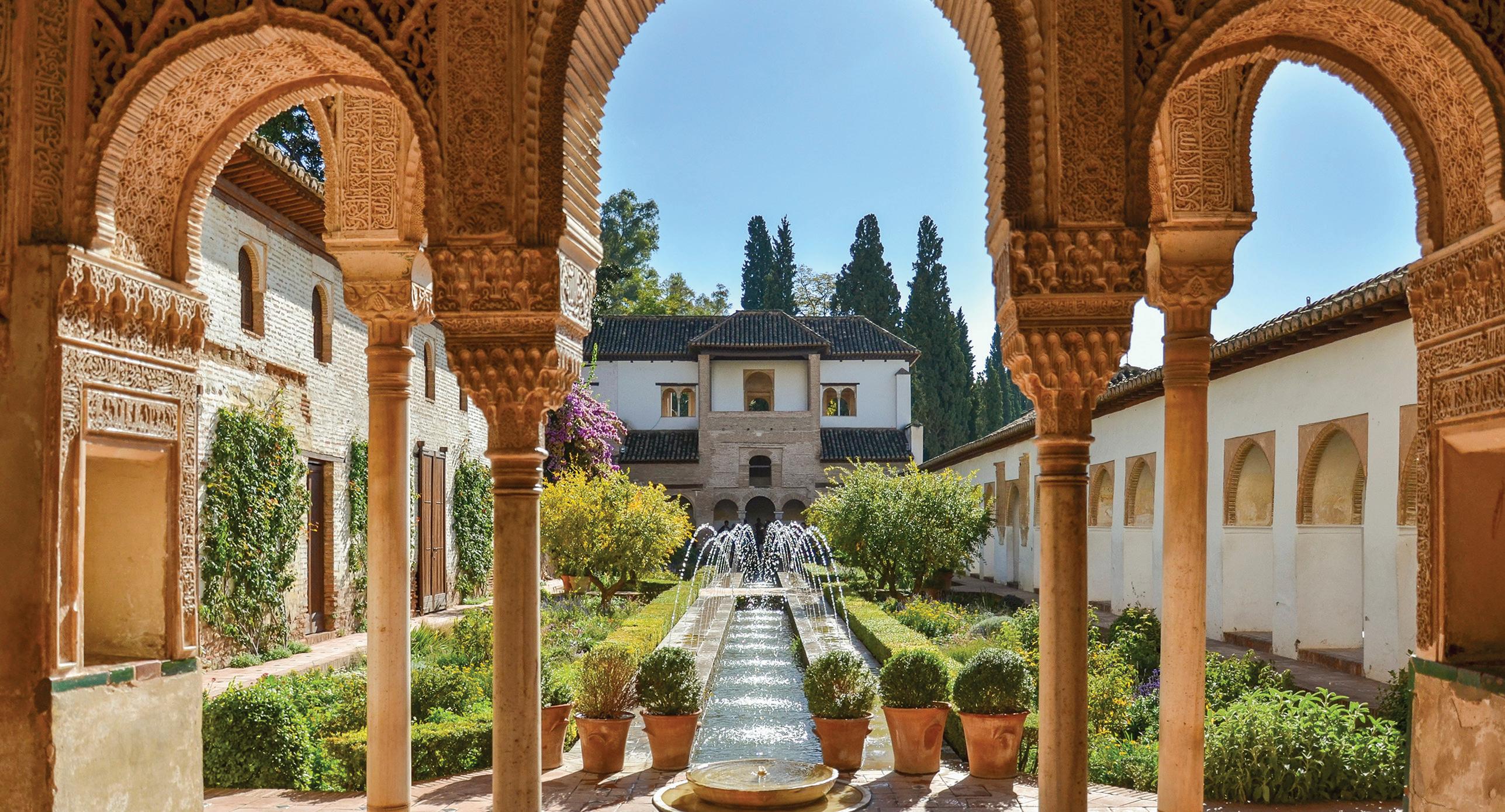
Discover the legacy of Al-Andalus as we explore the architecture of Córdoba and Granada
Highlights include the Great Mosque of Córdoba and Granada’s famous Alhambra and Generalife –all UNESCO World Heritage sites
Learn about the wider heritage and context of this beautiful region of Spain
In 711, Tariq ibn-Ziyad crossed the Straits of Gibraltar, sweeping through the Iberian peninsula and establishing Al-Andalus: Islamic Spain. With its regional capital in Córdoba – a leading cultural and economic centre in the Mediterranean basin – advancements in many fields ensued. Medicine, astronomy, literature, music and philosophy developed throughout the region, while expansions in art and architecture are still visible today in the stunning buildings, mosques and gardens.
At the heart of Córdoba’s Islamic inheritance lies one of Europe’s greatest buildings: the Mezquita, the Great
500 YEARS
2026 will mark 500 years since the final year of the forced conversions and expulsions of Muslims in Spain following the Reconquista. This complex, wide-reaching process will be highlighted and discussed across many of our visits.
Mosque, which was transformed into a cathedral during the 13th century. We will also visit the huge fortified palace city of Madinat al-Zahra, founded on the hills outside Córdoba at the behest of Abd ar-Rahman III. Visits to the archaeological museum, built over the remains of the Roman theatre, will illuminate the city’s history from prehistoric times to the Middle Ages.
We will continue to Granada, a major city during the 11th century and home to the famed Alhambra of the Nasrid Sultans and the adjoining Generalife with its evocative gardens. In the 13th century, Granada became the capital under Nasrid rule and was the last Islamic-ruled state in the Iberian peninsula. A visit to the Renaissance cathedral and Royal Chapel in Granada, home to the tombs of Ferdinand and Isabella, will emphasise the blending of Islamic and Christian
traditions in the region. Commissioned by Queen Isabella after the conquest of Granada, the cathedral is located on the former site of the ancient mosque.
We also hope to visit one of Spain’s best preserved fortresses, Malaga’s Alcazaba, as well as the cathedral which is located within the limits of the original Moorish walls.
In Córdoba, our base will be the four-star Hotel NH Collection Amistad, a smart, well-located hotel occupying 18th century mansion buildings; while in Granada we will stay at the four-star Hotel Barceló Carmen, a comfortable, well-appointed property in the heart of the city.

This tour will be led by Meg Bernstein , PhD. Meg is an art historian specialising in medieval European art and architecture. A lecturer in medieval art, Meg received her PhD in Art History from UCLA in 2019 and has taught courses on medieval visual culture, materiality and architecture at a variety of institutions across the US and UK.

FITNESS / PRACTICALITIES
A good level of fitness is required for this tour, as a number of visits will be made on foot, and participants should be aware that walking around the historical cities and sites involves traversing uneven ground, cobbled streets and some uphill sections with at times demanding gradients. In particular, Madinat al-Zahra is quite exposed, with uneven terrain, steps and inclines. For more details on ACE’s minimum fitness requirements, please see our Booking Terms & Conditions.

“A good introduction to the rich and vibrant history of this part of Spain in the Islamic period”
– ACE customer
on a previous
Al-Andalus tour
ITINERARY
The itinerary represents a guide to what we hope to offer, and some elements may be subject to change or confirmation nearer the time. Archaeological sites and religious centres can close or change their opening times at short notice; therefore, some visits may be reordered.
D ay 1 – Depart London Gatwick 0940 on British Airways, arriving Málaga 1340. Transfer to Córdoba for three nights at the Hotel NH Collection Amistad Córdoba. Welcome and introduction.
D ay 2 – Morning lecture: Al-Andalus Spain followed by walking tour of Córdoba including Synagogue, Jewish Quarter, Calleja de las Flores, Archaeological Museum and Great Mosque (now cathedral, dating from the late 8th to late 10th century).
D ay 3 – Madinat al-Zahra, Alcázar (gardens), optional walking tour by the Guadalquivir River and to Calahorra Tower (12th century fortified gate), Plaza del Pozo and Museo de Bellas Artes. Free evening.
D ay 4 – 14th century Alcazaba and Real Colegiata de Santa María la Mayor (innovative Renaissance church). Continue to Granada for three nights at Hotel Barceló Carmen. Evening lecture: Alhambra
D ay 5 – Excursion to the Alhambra: Nasrid Palace, Museo de la Alhambra, citadel of the Alcazaba and Generalife (gardens).
D ay 6 – Walking tour around medieval Granada: Corral del Carbón (Islamic caravanserai), Alcaicería (recreation of the silk bazaar), madrasa (surviving oratory from the 14th century university), 11th century Islamic baths, Casas del Chapiz (exteriors of 16th century Morisco houses – time permitting). Afternoon: guided tour of Renaissance cathedral and Royal Chapel (tombs of Ferdinand and Isabella, with the Queen’s collection of Flemish paintings).
D ay 7 – Transfer to Málaga (visits to Alcazaba and Renaissance Cathedral – time permitting). Depart Málaga 1720, arriving Gatwick 1910.
BOOKING AND PRICES
Cost of £3595 includes: return airfare, accommodation based on sharing a twin or double bedded room, six breakfasts, one lunch, five dinners with wine, water & coffee, excursions & admissions, gratuities & all taxes. Not included: travel insurance, double room for single use supplement £520. TOUR CODE: ALAN26
Art Treasures of Moravia
September 28 – October 5, 2026

Discover a wealth of monuments, from the star-shaped Pilgrimage Church of St John of Nepomuk to the flower gardens of Kroměříž
Uncover important witnesses to Jewish history, including T řebíč’s Jewish Quarter and the modernist masterpiece Villa Tugendhat
Take in the stunning cultural landscape surrounding Lednice and Valtice castles, established by the ruling dukes of Liechtenstein
Taking its name from the Morava River, Moravia is a historical region in east Czechia and one of the five Czech lands founded in 1918, encompassing Brno and Olomouc, both former capitals. Witness to centuries of history, the region is home to a remarkable collection of UNESCO sites. Indeed, the entire cultural landscape surrounding the Lednice-Valtice valley – blending natural and man-made features – is lauded by UNESCO for its uniqueness and exceptional beauty.
The region’s important Jewish history will come to the fore in Mikulov with its Upper Synagogue, once the centre of a
“Moravia offers a unique panorama of the beauties of medieval and feudal Central Europe”
–
Tour Director Alex Koller
large and thriving community and now a museum; while in Třebíč, the grouping of the well-preserved Jewish Quarter, old Jewish cemetery and Basilica of St Procopius testifies to the co-existence of Jewish and Christian communities from the Middle Ages to the 20th century.
Czechia’s second largest city, Brno is home to some outstanding monuments reflecting layers of history, including the Gothic Cathedral of St Peter and Paul and the iconic modernist masterpiece Villa Tugendhat, designed by Ludwig Mies van der Rohe and Lilly Reich. An excursion to Moravia’s former capital of Olomouc, meanwhile, will acquaint us with ecclesiastical treasures including Holy Trinity Column, an astonishing example of Moravian Baroque.
Interspersing key centres with picturesque estates and gardens, our tour will take us to the fairy-tale streets of Telč with their colourful Renaissance
and Baroque facades, and Czechia’s Wallachian region for its superb Open Air Museum in Rožnov pod Radhoštěm, displaying material culture and traditional ways of life. Magnificent church architecture will also feature in Žďár nad Sázavou, home to the highly unusual 18th century Pilgrimage Church of St John of Nepomuk.
We will stay at the four-star Hotel International, Brno. Located in the historic centre of Brno, the hotel offers a perfect combination of modern comfort and traditional character.

Our Tour Director is art historian and experienced tour leader, Alex Koller, PhD. Alex studied in Vienna, Salzburg and Cambridge, and gained his PhD at Magdalene College, where he also lectured and supervised. An accomplished linguist, Alex has led many art and architecture tours across the globe, and his experience ranges from Eastern Europe, Russia and the Himalayas to Japan and Southeast Asia.
CZECHIA

“Alex has extraordinary knowledge which he is generous in sharing. He works extraordinarily hard and tries to ensure that we all have an informative and wide ranging experience”
– ACE customer on a previous tour led by Alex Koller

FITNESS / PRACTICALITIES
A good level of fitness is required for this tour. Participants should meet ACE’s usual fitness criteria, as outlined in our Booking Terms & Conditions, and be prepared for a significant amount of walking and standing, including over cobbled and uneven ground, and up steep steps (for example at castle sites). To make the most of our time in the region, we will have a full itinerary, so participants should have a good level of stamina and be prepared to cover several visits in a day.
ITINERARY
Please note that the itinerary represents a guide to what we hope to offer, and some elements may be subject to change or confirmation. Some of the smaller churches and other sites are not able to guarantee availability until closer to departure, and if our planned visit coincides with an unanticipated service, we may only be able to view the exterior. Some visits may also be time permitting on the day.
D ay 1 – Depart London Heathrow 1515 on British Airways, arriving Vienna 1855. Transfer to Hotel International, Brno for seven nights.
D ay 2 – Welcome and introduction followed by visits in Brno including Špilberk Castle, Abbey of St Thomas, Cathedral of Saints Peter and Paul, Church of St Jacob and Villa Tugenhat (masterpiece of modernist architecture).
D ay 3 – Visits in nearby Lednice, including Lednice Castle and Valtice Castle. Continue to Mikulov for churches and rich Jewish heritage.
D ay 4 – Day spent exploring Brno’s environs including Veveři Castle, Pernštejn Castle and
Žďár nad Sázavou (Basilica of the Assumption and St Nicholas, Pilgrimage Church of St John of Nepomuk).
D ay 5 – Excursion further afield to Třebíč (Basilica of St Procopius and Jewish Quarter) and Telč (UNESCO-recognised historical centre; Renaissance castle). Afternoon: Vranov nad Dyjí (castle) and Znojmo (Rotunda of St Catherine, frescoes and St Nicholas’s Church).
D ay 6 – Excursion to Rožnov pod Radhoštěm (Wallachian Open Air Museum), Novyý Jičín (well-preserved civic architecture) and Velké Karlovice (traditional timbered architecture in a protected landscape).
D ay 7 – Visit to Křtiny (Church of the Name of the Virgin). Continue to Kroměříž for Archbishop’s Palace, palace gardens and Flower Garden (Baroque-style flower beds) and Olomouc (former capital with UNESCOrecognised monuments).
D ay 8 – Morning visit to Jihlava (historic main square and city churches, including St Ignatius and St James the Great). Depart Prague 1745, arriving Heathrow 1855.
BOOKING AND PRICES
Cost of £2995 includes: return airfare, accommodation based on sharing a business twin or double bedded room, seven breakfasts, seven dinners with water & coffee, excursions & admissions, gratuities & all taxes. Not included: travel insurance, business double room for single use £350. TOUR CODE: ATMO26
Luxembourg: The Crossroads of Europe
October 6-11, 2026

Explore Luxembourg City, with its UNESCO-listed Old Town and modern Kirchberg Plateau
Marvel at the lush landscape of the Ardennes including a visit to the medieval Vianden Castle
Discover the ‘Land of Red Rocks’ in the cultural and scientific hub of Luxembourg
Famously one of Europe’s smallest nations, Luxembourg possesses a remarkably diverse historical legacy, shaped by its unique position at the crossroads of the continent. As the world’s sole remaining sovereign Grand Duchy – the Grand Ducal Palace standing prominent in the old quarter – this beautiful nation has preserved its distinctive heritage set against the backdrop of a stunning natural landscape.
Developed over nine centuries, the remnants of extensive fortifications still encircle Luxembourg City’s Old Town. By the end of the Renaissance, Luxembourg had become one of Europe’s most formidable fortresses, featuring massive walls and an underground defence system, the ‘Boc Casemates’.
In direct contrast, the Kirchberg Plateau is a hub of contemporary architecture, European institutions and cultural venues; while the European Court of Justice highlights Luxembourg’s pivotal role in the Union’s formation as well as global politics.
Nearby, the MUDAM – designed by I M Pei, best known for his iconic glass pyramid at the Louvre – showcases a wide range of international art. Meanwhile, the Philharmonie Luxembourg is lauded for its exceptional acoustics. Designed by the architect Christian de Portzamparc, winner of the Pritzker Prize in 1994, the building’s exterior is lined with 823 steel columns, allowing music to be experienced through a natural filter.
Travelling north, the Ardennes region boasts a beautiful natural landscape. We will discover Vianden Castle: considered one of Europe’s most impressive feudal residences, this remarkably restored medieval fortress dates from the 11th to the 14th centuries. Continuing to Clervaux, we will marvel at ‘The Family of Man’, a pioneering exhibition curated by Edward Steichen. The site’s collection of 503 photographs narrates the universal
human experience in photographic form.
The Moselle Region brings Luxembourg’s cultural significance into the modern day. This fertile wine-growing area is famous for its terraced vineyards producing white and sparkling wines, which we hope to sample during our visit. Meanwhile, the newly renovated European Museum of Schengen is dedicated to the history and importance of the 1985 agreement and features modern, interactive exhibitions.
We will stay at a comfortable hotel, located in the heart of the city, providing an ideal base for exploring the country’s diverse regional and local treasures as well as good places to wine, dine and shop.

This tour will be led by Kristine Horner, PhD. A sociolinguist and linguistic anthropologist, Kristine is a professor at the University of Sheffield, where she is also Director of the Centre for Luxembourg Studies and engages in collaborative work with the University of Luxembourg.

FITNESS / PRACTICALITIES
A good level of fitness, mobility and stamina is required for this tour, as it involves a significant amount of time spent walking, where there are not always frequent opportunities to sit down. Some visits on this tour will involve walking over cobbled, uneven and occasionally steep ground. For more information on ACE’s minimum fitness criteria, please see our Booking Terms & Conditions.

“Luxembourg, a country where old traditions meet modern aspirations, paving the way for a bright future”
– Celebrated Luxembourgish author Anise Koltz, 2023
ITINERARY
Please note that the itinerary represents a guide to what we hope to offer, and some elements may be subject to change or confirmation nearer the time.
D ay 1 – Flight from London City to Luxembourg. Transfer to hotel in city centre for five nights. Welcome and introduction.
D ay 2 – Luxembourg Old Town: Grand Ducal Palace (exterior), Palace Guillaume, Cathedral Notre Dame and Gëlle Fra Monument (national monument). Afternoon visit to the Casemates (‘Boc Casemates’ – subterranean defence
LAND OF THE RED ROCKS
Dominated by the mining industry, with the iron-rich ore giving the soil its distinctive reddish hue, south Luxembourg harbours the country’s notable industrial region – ‘The Minett’. This district has undergone a significant transformation into a scientific and cultural hub where industrial relics contrast with modern, innovative architecture.
system) followed by Luxembourg City Museum. Evening lecture: The Tumultuous History of Luxembourg as a Small Country
D ay 3 – Kirchberg Quarter of Luxembourg City: European Court of Justice (highest court of the European Union with a collection of art and sculpture from Europe), MUDAM (Contemporary Modern Art Museum of Luxembourg – designed by famous architect I M Pei), Fortress Museum (Musée Draï Eechelen) and Philharmonie Luxembourg (showcasing architectural diversity and innovation in this part of the city).
D ay 4 – Ardennes Region: Vianden (medieval 11th-14th century castle) and Clervaux (Clervaux Abbey and ‘Family of Man’ exhibition).
D ay 5 – Luxembourg’s industrial region for Belval (Blast Furnace and Library), followed by Moselle Region for European Museum in Schengen and Remich agricultural region (St Martin Wine Cellar Caves). Evening lecture: Luxembourg as a Microcosm of Multilingual and Multicultural Europe
D ay 6 – Free time with optional visit to Museum of History and Art Luxembourg. Return flight from Luxembourg to London City.
BOOKING AND PRICES
Full details, including the final itinerary, hotels and tour cost, will be released later in 2025. Please contact the ACE office or visit our website to register your interest. TOUR CODE: LUXE26
The Coto Doñana and Seville
November 3–10, 2026
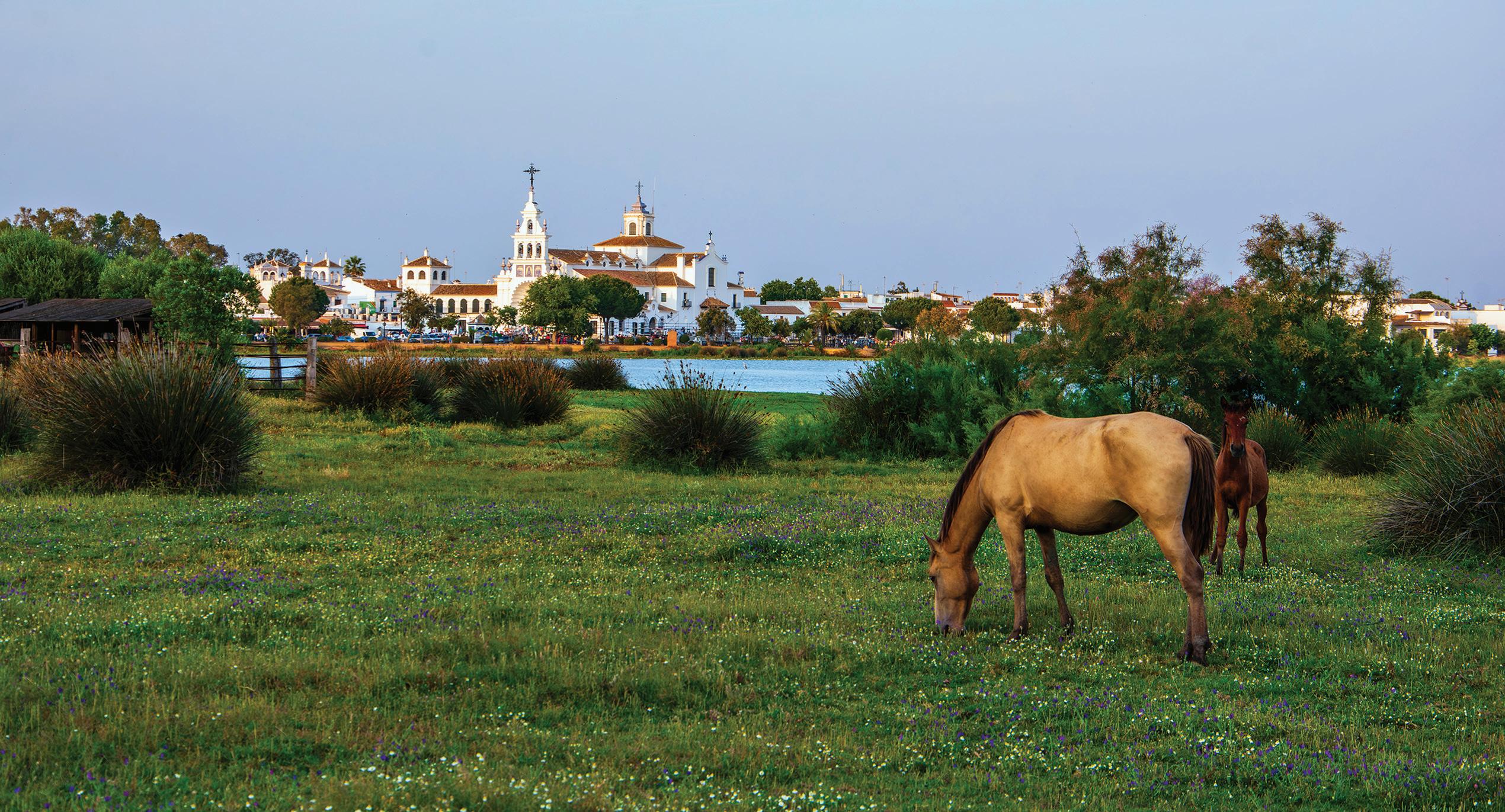
Discover the remarkable wildlife of the Coto Doñana, including the birdlife teeming on the lagoon near our hotel
Spend a day in Seville, with a visit to the Alcázar and evening flamenco performance
Look out for mammals including red deer and Egyptian mongoose in Arroyo de la Rocina
The Coto Doñana is one of the most prolific birdwatching destinations in Europe. Our base – the charmingly picturesque Hotel La Malvasia, based in the hermitage village of El Rocío – is perfectly positioned for appreciating the region’s wildlife. Soaking up the hotel’s peaceful surroundings, we will study birds, mammals and ecology, alongside the cultural delights of Seville and Huelva.
Our itinerary has been expertly honed to make the most of this stunning natural environment and maximise our chances of seeing the wonderful birds and mammals that inhabit it. The sandy tracks not far from our hotel are ideal for spotting one of the Doñana’s great birds, the
“Not only is [Kevin] great at spotting and identifying wildlife, but he is endlessly enthusiastic and cheerful”
– ACE customer on a previous Coto Doñana & Seville tour led by Kevin Hand
Spanish imperial eagle; while across the drier habitats of monte blanco scrub and umbrella pine woodland live the beautiful azure-winged magpie, hoopoe, egrets, warblers and other typical Mediterranean species. At the Odiel Marshes Natural Park, we will search for osprey, terns, spoonbills and waders.
As well as taking in the cultural highlights of Seville – including the UNESCO listed Real Alcázar with its breathtaking
LOCAL EXPERTISE
To enrich our understanding of the region, this tour includes contributions from a range of local experts – from a pre-dinner talk with a representative of the SEO (Sociedad Española de Ornitología – Spanish equivalent of the RSPB) to specialists based at the excellent El Acebuche Visitors’ Centre, home to a wealth of fascinating birdlife as well as an Iberian lynx reintroduction programme.
Mudéjar architecture – we will tour Huelva, famed as the terminus a quo for the voyages of Columbus. In El Rocío, meanwhile, the sandy streets are designed for the horses and wagons of the thousands of pilgrims who come to the village for the Whitsun Romería del Rocío.
Our final day takes us into the Coto Doñana National Park for an exclusive guided tour, supported by local experts, to understand the complex ecology of the region and look out for rarer species.

This tour will be led by conservationist and environmental consultant Kevin Hand , MSc, MCIEEM. Kevin is a long-standing ACE Tour Director with a special interest in birds, mammals and ecotourism. He has been President and Vice President of the Cambridge Natural History Society and continues to act as a Trustee. He currently chairs the Newmarket Chalk Streams Trust and is a Biodiversity Surveyor for the RSPB.
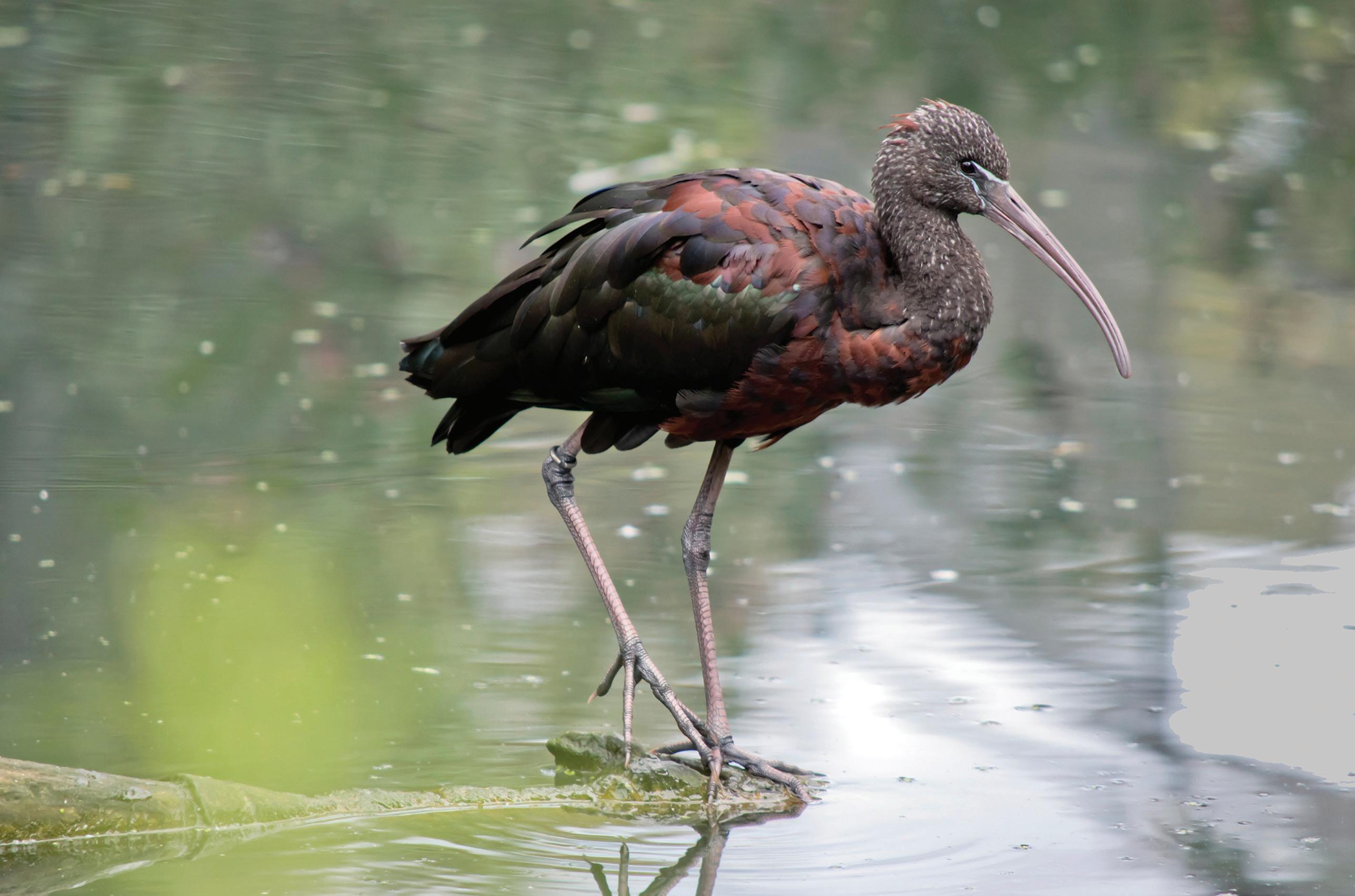
“The local Spanish Ornithological Society warden gave us an excellent talk about managing the reserve. We were able to offer a donation from ACE to support his work teaching local children about nature”
– Tour Director Kevin Hand on a previous Coto Doñana & Seville tour
OUR ACCOMMODATION
We will stay at one of the most characterful and comfortable hotels in rural Spain: the four-star Hotel La Malvasia, on the edge of the Doñana National Park. Traditional and elegant, the Malvasia retains a close connection with the landscape on its threshold alongside a strong sense of Andalusian identity. Beyond the hotel’s walls, a string of huge lagoons teem with birdlife: great flamingo flocks, ducks from northern Europe, storks, stilts, glossy ibis, purple gallinule and raptors.
FITNESS / PRACTICALITIES
While this tour is not expected to be especially strenuous, participants should possess a good level of overall fitness and be comfortable undertaking several nature walks of up to 6-8 miles daily in warm weather (with shorter alternatives if required). Walks will contain regular stops with longer breaks for lunch. Most terrain will be flat, with some rugged, sandy, muddy or uneven stretches, and participants should be prepared for urban walking in Seville. For our minimum fitness requirements, please consult our Booking Terms & Conditions.
ITINERARY
Please note that the itinerary represents a guide to what we hope to offer, and some elements may be subject to confirmation, depending on local conditions. We cannot guarantee the presence of all wildlife mentioned.
D ay 1 – Depart London Gatwick 0850 on Easyjet, arriving Seville 1240. Transfer to Hotel La Malvasia, El Rocío, for seven nights.
D ay 2 – Morning walk to Arroyo de la Rocina (dry land habitat with azure-winged magpie, hoopoe, egrets, warblers, red deer, wild boar, Egyptian mongoose). Free afternoon with optional early evening wildlife walk (bats, night herons, owls, amphibians). Evening talk: An Introduction to the Coto Doñana National Park.
D ay 3 – Puente del Ajoli and Romerio route (chance to see Spanish imperial eagle). Afternoon walk in El Rocío area and birdwatching across huge lagoons of Marismas del Rocío (flamingo flocks, storks, stilts, ibis, purple gallinule, kites and harriers). Evening guest talk with a representative of the SEO (Spanish equivalent of the RSPB).
D ay 4 – Whole day excursion to Seville: cathedral and Alcázar (fine 14th century Mudéjar work) followed by some free time to explore the city independently. Evening: traditional flamenco performance in Seville.
D ay 5 – Morning visit to El Acebuche Visitors’ Centre (restored hacienda, lynx reintroduction programme, black-shouldered kite, southern grey shrike). Afternoon: walk to Playa de Cuesta de Maneli (picturesque boardwalk to a beach, with beach walk if time allows).
D ay 6 – Odiel Marshes Natural Park (osprey, terns, spoonbills, waders) and Huelva for Columbus statue and Harbour of the Caravels (replicas of the boats used on Columbus’s first voyage to the Americas) or La Rabida Franciscan Friary – subject to weather.
D ay 7 – Half day excursion to the northern part of the Coto Doñana National Park for an exclusive guided tour (complex ecology and chance to see rarer species). Free afternoon.
D ay 8 – Depart Seville 1325, arriving Gatwick 1510.
BOOKING AND PRICES
Cost of £3675 includes: return airfare, accommodation based on sharing a deluxe twin or double bedded room, traditional flamenco performance, seven breakfasts, three lunches with water & coffee, seven dinners (one light) with wine, water & coffee, excursions & admissions, gratuities & all taxes. Not included: travel insurance, deluxe double room for single use supplement £495. TOUR CODE: CDSE26
Ancient Treasures of Naples: Competition, Leisure & Vice
December 14–21, 2026
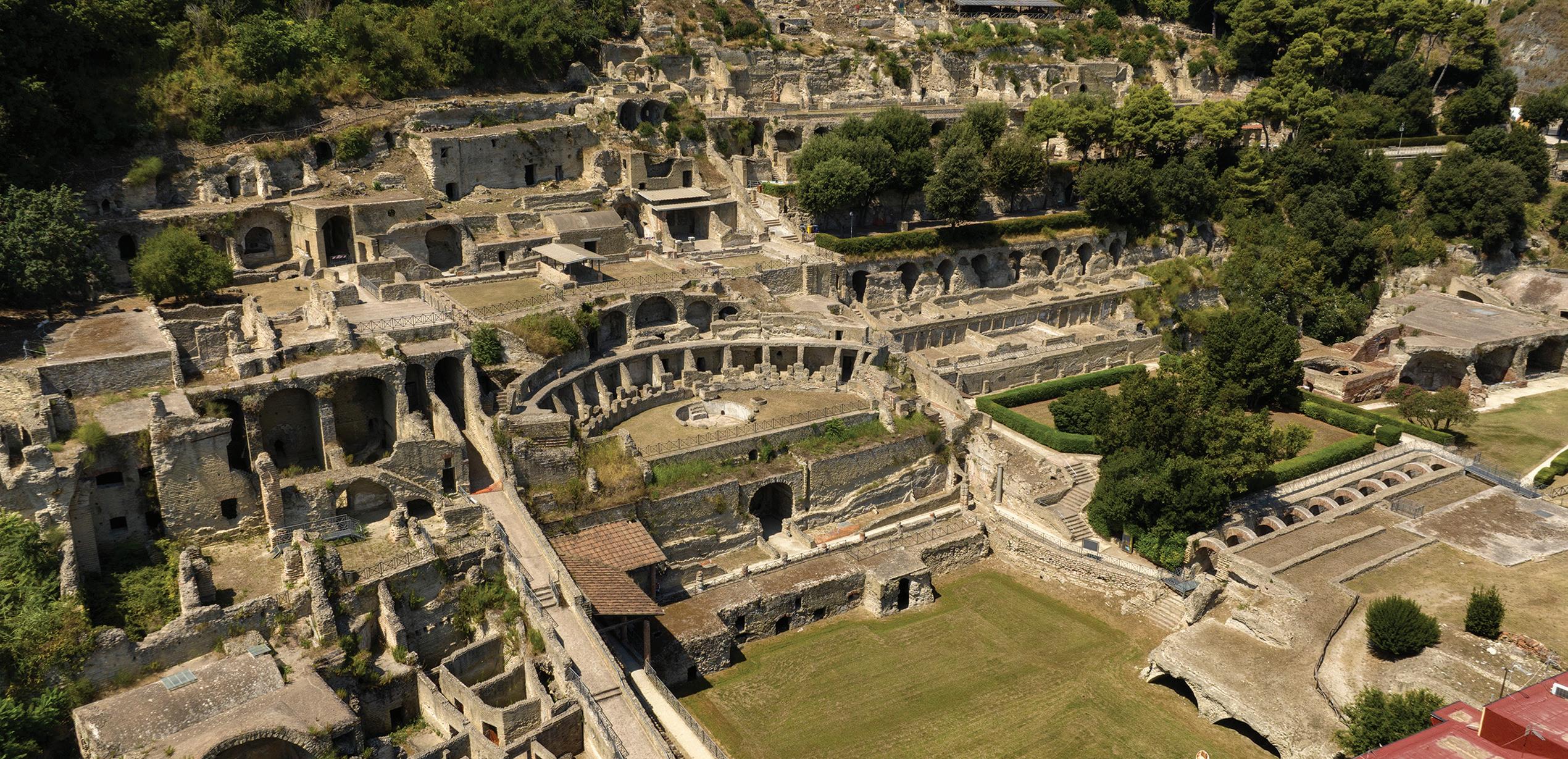
Trace the layers of Roman recreational life concealed beneath Naples’ bustling streets with visits to Pausilypon and Baiae
Sail to Ischia, famed for its thermal springs and abundance of Greek and Roman remains
Enjoy the festive season with a visit to San Gregorio Armeno, Naples’ Christmas street, filled with artisan shops and nativity scenes
While many travellers are drawn to the more famous site of Pompeii, beneath the streets of nearby Naples rests a world frozen in time and hidden by modern facades.
Under Monastero Santa Chiara lies a Roman bathhouse, the most complete example of its type from the Roman era, while below the medieval basilica of San Lorenzo Maggiore we will delve into the ruins of an ancient Roman market – the Macellum of Naples – and a Greek agora.
One of the oldest continuously inhabited urban areas in the world, Naples was a major port city and seaside resort.
“Eireann communicated her vast knowledge of the period in a very informative, friendly and humorous way”
– ACE customer on a 2025 tour led by Eireann Marshall
The Archaeological Complex of Baiae – described by Seneca the Younger as a ‘resort of vice’ – was a fashionable antiquarian resort particularly during the Roman Republic, containing stunning 1st century BCE thermal baths and bath houses. Roman general Scipio Africanus had his retirement home at nearby Liternum, complete with villas, a forum, temple and theatre. Meanwhile Pausilypon – offering views of villas, an amphitheatre, odeon and gardens against a beautiful backdrop – was built in the 1st century BCE as the summer home of Publius Vedius Pollio.
Amphitheatres drew crowds from all over to enjoy entertainment, processions and competitions. Visits in Capua and Pozzuoli, home to the second and third largest Roman amphitheatres respectively (after the Colosseum), will help us to understand the importance of these grandiose structures.
The island of Ischia is also well known for offering leisure and luxury in the ancient world. One of the quieter, lesser known southern Italian islands, Ischia hosts an abundance of wine growers and natural thermal springs. Visits around the island will also allow us to envisage the area’s artistic and productive past, with Greek and Roman artefacts ranging from amphoras to jewels and iron tools.
We will stay at the four-star Hotel San Francesco al Monte. This characterful hotel is set in a 16th century monastery and is well situated for exploring Naples’ colourful streets.

This tour will be led by Eireann Marshall , PhD, a Research Associate and Associate Lecturer with the Open University. Eireann was raised in the Veneto and educated at Barnard College, Columbia University, as well as the universities of Birmingham and Exeter.

WINTER SEASON
While in Naples, we hope to complement our historical visits with seasonal highlights. Via San Gregorio Armeno, the city’s Christmas street, will delight us with its rows of artisan shops and a multitude of nativity scenes. At Teatro San Carlo, we hope to enjoy a performance of ‘Aria di Natale’ featuring a concert of festive works.

FITNESS / PRACTICALITIES
Please note that this tour involves extensive walking, including over many uneven, cobbled and sometimes slippery streets, so a very good level of fitness is required. Streets can also often be crowded with people and vehicles. Some sites will involve walking up and down steps and do not always have handrails. The tour includes the opportunity to travel by boat to Ischia (a journey of approx 1 hour 30 minutes, which can be choppy depending on weather) and the catacombs are dimly lit. Participants must meet ACE’s fitness criteria, as outlined in our Booking Terms & Conditions.
ITINERARY
Please note that the itinerary represents a guide to what we hope to offer. Sites in Naples can experience last minute closures owing to local events or restoration works, therefore some elements may be subject to change or confirmation nearer the time.
D ay 1 – Depart London Heathrow 0915 on British Airways, arriving Naples 1305. Transfer to Hotel San Francesco Al Monte for seven nights. Welcome and introduction.
D ay 2 – Morning walking tour of Castel del Ovo (exterior), ancient port, Piazza del Plebiscito and Teatro San Carlo. Afternoon: San Lorenzo Maggiore, Roman Theatre of Neapolis/ Nerone, Monastero Santa Chiara excavations and optional walk through Via San Gregorio Armeno for atmospheric nativity scenes. Evening performance at Teatro San Carlo: ‘Aria Di Natale’ – festive operatic arias and other works (subject to final confirmation).
D ay 3 – Morning: Pausilypon archaeological site (summer home of Publius Vedius Pollio, amphitheatre, odeon, gardens). Afternoon: Pozzuoli amphitheatre. Evening talk: Ischia
D ay 4 – Full day excursion to the peaceful island of Ischia for visits including the Museo Archeologico Villa Arbusto.
D ay 5 – Morning: Cumae archaeological site (acropolis, amphitheatre, temples and forum) via Arco Felice. Afternoon: ruins of Liternum. Free evening.
D ay 6 – Visit to Grotta della Dragonara (Roman cistern) followed by Archaeological Complex of Baiae including baths, Castello Aragonese di Baia and Museum of Phlegrean Fields.
D ay 7 – Morning: Visits on archaeological circuit of Ancient Capua including Museo Archeologica dell’antica, amphitheatre and gladiator museum. Afternoon visit to Naples Archaeological Museum. Evening summary talk: Ancient Treasures of Naples
D ay 8 – Morning: Catacombs of San Gennaro. Depart Naples 1355, arriving Heathrow 1545.
BOOKING AND PRICES
Cost of £3995 includes: return airfare, accommodation based on sharing a classic twin or double bedded room, performance at Teatro San Carlo (subject to confirmation), seven breakfasts, one lunch, six dinners (one light) with wine, water & coffee, excursions & admissions, gratuities & all taxes.
Not included: travel insurance, classic double room for single use supplement £560. TOUR CODE: ANNP26
The Rights of Man: Rebellion & Dissent in East Anglia
April 23–26, 2026
Explore Norwich, Bury St Edmunds and Thaxted and their role in advancing liberty, democracy and justice
Discover the history of rebellion in East Anglia, including Kett’s revolt against the enclosures of common land
Examine the ideas behind Magna Carta and Thomas Paine’s The Rights of Man
British heritage is conventionally seen in terms of castles, stately homes, cathedrals and churches. But there is another, less-tangible heritage: that of freedom, rights and mutual respect. We take these privileges for granted and often forget the people who fought against great odds to ensure the rights we enjoy. Aptly coinciding with the 250th anniversary of American independence, this tour looks at sites associated with rebels of the past.
Our study tour starts and ends in Bury St Edmunds, exploring the events that led to Magna Carta and the Peasants’ Revolt of 1381. Thetford is the birthplace of Thomas Paine, whose 18th century The Rights of Man argued for democracy and freedom of expression.
Two centuries earlier, Robert Kett led a rebellion of peasants against the government of King Edward VI. A peasant army protested against the enclosures which took away rights of pasture and access to common land, and we will examine several sites associated


Tour Director David Burke , PhD, is a historian of intelligence and international relations who has lectured at Cambridge University. Our Norwich day will be led by fellow Tour Director Oliver Coulson , MA, PhD, whose thesis explores the impact of the Lollard heresy on material culture.
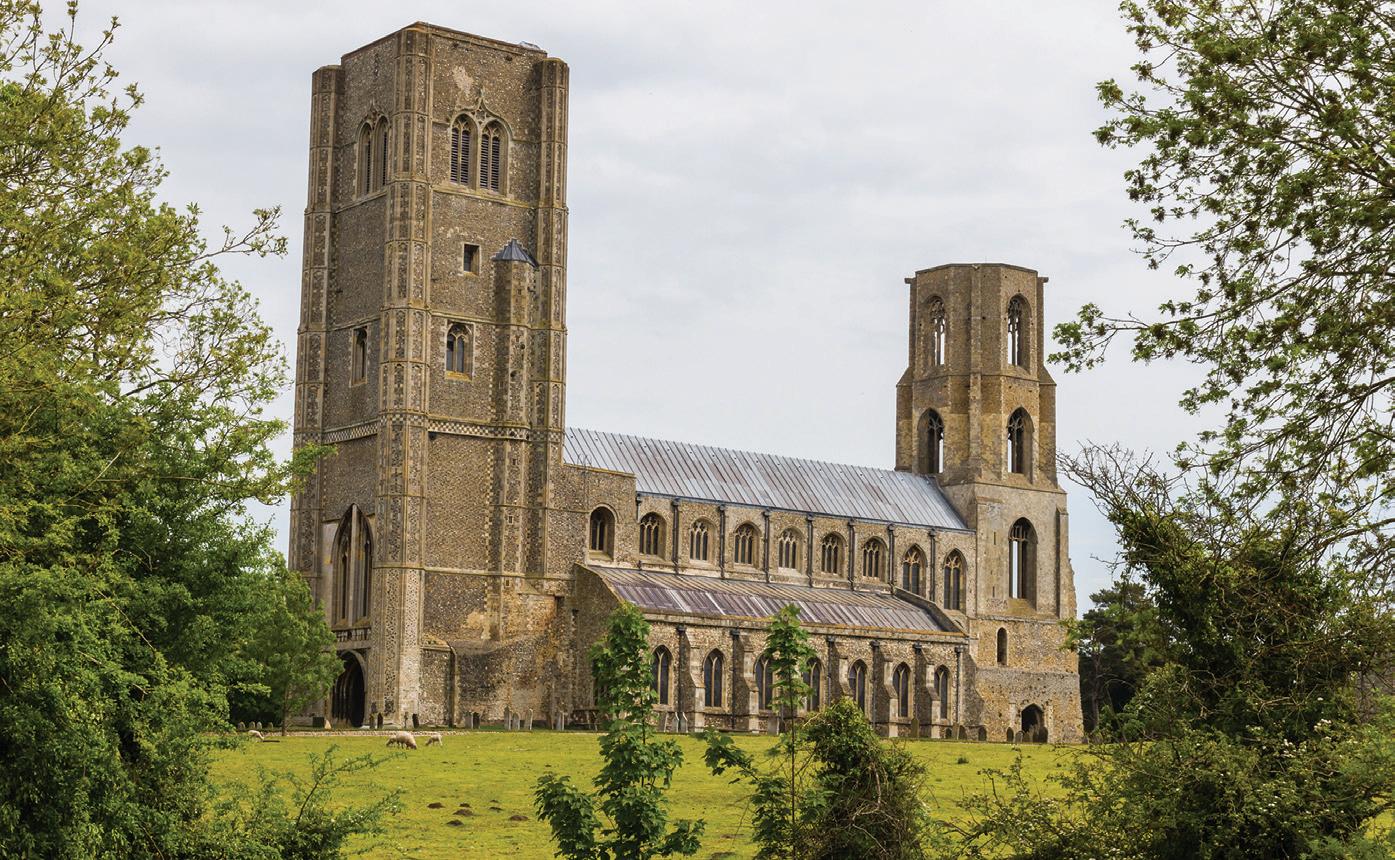
“Extremely knowledgeable and managed to link the different historical periods and individuals”
– ACE customer on the 2025 Rights of Man tour led by David Burke
with this rebellion. Norwich, meanwhile, had a dissenting tradition dating back to Lollardy in the late 14th century that challenged the established church.
Our glimpse of this alternative Britain ends with Daisy Greville, Countess of Warwick. The countess left behind her days as a socialite to become a campaigning socialist, using her grand home of Easton Lodge for Labour and trade union rallies.
Our base will be the four-star Angel Hotel in Bury St Edmunds, opposite the cathedral.
FITNESS / PRACTICALITIES
This tour involves time spent walking and standing during visits. The tour of Norwich will cover approximately 3-4 miles in total: the marketplace steps are long and shallow, with some trip hazards, and there is a fairly steep climb to reach the top of Kett’s Heights. Some sites have uneven ground, cobbles, steps, ramps and dimly lit interiors, and handrails are not always available. While a major landmark, Norwich Cathedral is not included as it is less relevant to this tour’s particular narrative.
Due to the later finish on Day 4, if you would like to book an extra night at the hotel, at a supplement, please contact the ACE office.
ITINERARY
Please note that the itinerary represents a guide to what we hope to offer and certain elements may be subject to change nearer the time.
D ay 1 – Tour assembles at the Angel Hotel, Bury St Edmunds, for three nights. 1330 welcome and introduction. Afternoon: Bury St Edmunds Abbey (ruins) and St Edmundsbury Cathedral. Evening lecture: Kett’s Rebellion & Radical Norwich.
D ay 2 – Wymondham for Abbey (Kett’s Rebellion) and Kett’s Oak. Continue to Norwich for Lollardy walking tour of the city with historian Oliver Coulson, including sites related to Kett’s Rebellion. Evening lecture: Thomas Paine.
D ay 3 – Thetford for Thomas Paine Hotel (reputed birthplace), Thetford Grammar School (Paine’s school, dating back to at least the 12th century), statues of Paine and Duleep Singh, and Ancient House Museum (Tudor house dating to c 1500). Return to Bury via Elveden Church. Evening lecture: Conrad Noel, H G Wells & the Countess of Warwick.
D ay 4 – Private visit to the gardens of Easton Lodge (site of former home of Countess of Warwick) and St Mary’s Church (memorial), Little Easton Manor Barn Theatre and Thaxted Church. Tour disperses approx 1630 at the hotel, with drop-offs at Audley End and Bury St Edmunds Railway Stations. We recommend booking onward trains no earlier than 1545 (Audley End) and 1630 (Bury St Edmunds).
BOOKING AND PRICES
Cost of £1425 includes: accommodation based on sharing a standard classic twin or double bedded room, three breakfasts, three lunches (two light, one Sunday roast), three dinners with water & coffee, excursions & admissions, gratuities & all taxes.
Not included: travel insurance, standard classic double room for single use supplement £155. TOUR CODE: RMAN26
Walking the Thames Path: William Morris & The Arts & Crafts Movement
May 10–14, 2026
Enjoy the charming countryside that inspired William Morris as we walk along the Thames Path
Discover the beautiful gardens and collections at Kelmscott Manor
View exquisite Pre-Raphaelite artworks at Buscot Park, the Ashmolean Museum and Oxford colleges
We are delighted to introduce a brand new exploration of William Morris and the Arts and Crafts movement through a selection of Thames Path walks, alongside visits to churches, country houses, colleges and museums.
William Morris’s daughter, May, remembered her father’s great affection for this landscape and observed how “Knee deep grows the flowered grass... the quivering of the warm air alive with butterflies”. Immersing us in this landscape, our first walk begins at Port Meadow, the ancient grazing land located on the edge of Oxford. We will walk at a gentle pace, extracting small details in foliage and observing local wildlife.
As our tour progresses, we will encounter medieval buildings and churches beloved by Morris, including Great Coxwell, and visit Buscot Park, home to Edward Burne-Jones’s ‘Briar Rose’ paintings and works by John William Waterhouse.
Oxford will acquaint us with further Pre-Raphaelite masterpieces, from those found in the Ashmolean Museum to the

This tour is led by Suzanne Fagence Cooper, MA, PhD, a curator, historian and Arts Society lecturer whose specialisms include 19th and 20th century British art. She is the author of How We Might Live: At Home with Jane and William Morris (2022).

At the heart of the tour lies the magnificent Kelmscott Manor, Morris’s beloved country home, which houses original furniture, ceramics, metalworks and needlework by Jane and May Morris.
Our tour is based at the four-star Courtyard by Marriott Oxford City Centre, a smart establishment which enjoys a central position beside the river.
FITNESS / PRACTICALITIES
This tour involves a significant amount of walking, approximately four miles at a time along the Thames Path, alongside visits. The terrain can be grassy, muddy and uneven at times, so appropriate clothing must be worn. Access to the attic at Kelmscott is via a steep staircase where there are several low beams. Participants must meet ACE’s fitness requirements as outlined in our Booking Terms & Conditions, and have a good overall level of mobility.
ITINERARY
Please note that the itinerary represents a guide to what we hope to offer, and given the special nature of some of our visits, certain elements may be subject to change or confirmation nearer the time.
D ay 1 – Tour assembles 1400 at the Courtyard by Marriott Oxford City for four nights. Walking tour: Exeter College (where William Morris studied), Holywell Street (where Jane Morris lived) and evensong at one of the university’s college chapels.
D ay 2 – Morning lecture: William Morris, the Pre-Raphaelites and Oxford, followed by Thames Path Walk 1: four miles from Wolvercote (visiting St Barnabas Church and Sepulchre’s cemetery)
As the tour assembles on Sunday May 10, we have held a limited number of rooms at the Courtyard by Marriott for Saturday May 9, at an additional cost. If you are interested in extending your stay, please contact our sales team or mention at the time of booking.
to Jericho. Afternoon visit to Buscot Park (18th century mansion with Pre-Raphaelite rooms). Free evening.
D ay 3 – Morning Lecture: The Arts and Crafts Tradition in the Cotswolds . followed by Stanton Harcourt Church. Thames Path Walk 2: four miles from Bablock Hythe to Newbridge, followed by St John the Baptist Church and St Mary’s Church (Fettiplace memorials).
D ay 4 – Visit to Great Coxwell Barn (13th century grange) followed by Radcot Bridge. Thames Path Walk 3: three miles from Radcot Bridge to Kelmscott. Afternoon visit to Kelmscott Manor (collections and gardens).
D ay 5 – Morning visits in Oxford: Keble College (Holman Hunt’s The Light of the World ), Harris Manchester College (stained glass by Edward Burne-Jones), Oxford Union Library (PreRaphaelite murals) and the Ashmolean Museum (Pre-Raphaelite gallery and private session in the Print Room). Tour disperses at hotel approx 1300.
BOOKING AND PRICES
Cost of £1895 includes: accommodation based on sharing a standard twin or double bedded room, four breakfasts, two lunches, three dinners with water & coffee, excursions & admissions, gratuities & all taxes.
Not included: travel insurance, standard double room for single use supplement £400. TOUR CODE: WATP26
Wild & Ancient Outer Hebrides
June 6–13, 2026
Venture across the Outer Hebrides, exploring the wildlife and ancient history of these rugged islands
Visit prehistoric sites including the Neolithic chambered cairn of Barpa Langass on North Uist
Search for birdlife at the RSPB reserve of Loch na Muilne
Strung out in a rugged arc off the northwestern seaboard of Scotland, the Outer Hebrides are Britain’s final flourish as it splinters into the Atlantic. This tour will journey across the islands on an exploration of their breathtaking natural history and ancient heritage.
We will venture through remote crofting settlements and a rocky, sometimes mountainous landscape, all the while keeping an eye out for the islands’ abundant wildlife, which includes otters, seals, eagles and divers alongside beautiful wildflower-strewn machair.
The history of the islands is as intriguing as its landscape. North Uist, a patchwork of moors and lochans, contains prehistoric monuments such as the Barpa Langass cairn and stone circle. It is also home to the Balranald RSPB reserve, where we will enjoy a walk out to the machair and around the bay.
Our tour offers a fantastic opportunity to explore this wild and ancient place, forming a lasting impression of the land’s kaleidoscope of heather moorlands, lofty mountains and untouched beaches.
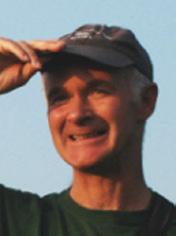
This tour will be led by Kevin Hand , MSc, MCIEEM, a longstanding ACE Tour Director with a special interest in birds, mammals and ecotourism. Kevin led a team providing access to the British countryside for hard to reach groups and is now a Biodiversity Surveyor for the RSPB.

“[Kevin’s]
enthusiasm and knowledge were an integral part of enjoying the wildlife we saw” – ACE customer on a 2025 tour led by Kevin Hand
We begin with a night at the Balmacara Hotel, overlooking the Kyle of Lochalsh to the Isle of Skye. We will then continue to Tarbert on the Isle of Harris for three nights at the comfortable Hotel Hebrides, followed by two nights at the Dark Island Hotel on the Isle of Benbecular. Our tour concludes with an overnight stay at the West Highland Hotel, Mallaig. While some hotels will be of a simpler standard, they all provide comfortable, welcoming and clean bases from which to explore the Outer Hebrides.
FITNESS / PRACTICALITIES
A good level of fitness, stamina and mobility is required for this tour. Participants should be prepared for a significant amount of walking and standing, including over uneven, rough and sometimes boggy ground, and broken paths, including in potentially windy/rainy conditions. Please consult ACE’s fitness criteria as found in our Booking Terms & Conditions.
ITINERARY
Please note that the itinerary represents a guide to what we hope to offer, and some elements may be subject to confirmation. Participants should be aware that on this tour in particular, the itinerary, timings and visits are flexible and may be changed nearer the time, depending on ferry timetables, weather conditions and local reports of bird sightings.
D ay 1 – Tour assembles 1300 at Inverness Airport followed by 1330 at Inverness Railway Station. Continue to Skye for overnight stay at the Balmacara Hotel.
D ay 2 – Sligachan (short wildlife walk) and Dunvegan Castle (home of MacLeod clan). Cross by ferry to Tarbert, Isle of Harris, for three nights at Hotel Hebrides.
D ay 3 – Exploration of Harris: Clach Mhic Leoid standing stone and Rodel (wildlife stops and medieval St Clement’s Church).
D ay 4 – Whole day excursion to Lewis: Calanais Standing Stones, Pictish Dun Carloway broch, crofting village of Arnol (historical blackhouse), RSPB Loch na Muilne Reserve (time permitting).
D ay 5 – Depart by ferry to Berneray, North Uist. Continue for visits to Balranald RSPB Reserve (opportunity to walk out to the machair and around the bay). Transfer to Dark Island Hotel, Benbecular for two nights.
D ay 6 – By ferry to island of Barra: Vatersay (beautiful tombola beaches and machair), Castlebay for view of Kisimul Castle (hereditary seat of MacNeils, set on rocky islet).
D ay 7 – By ferry to Mallaig for overnight stay at the West Highland Hotel, with time to explore the town.
D ay 8 – Transfer by coach to Inverness Railway Station, where tour disperses at approx 1200 followed by Inverness Airport approx 1300.
BOOKING AND PRICES
Full details, including the final itinerary, hotels and tour cost, will be released later in 2025. Please contact the ACE office or visit our website to register your interest. TOUR CODE: WAHB26
Art & Piety in Medieval North Yorkshire
July 27–31, 2026
Glimpse Britain’s medieval past through a myriad of churches, abbeys and historical ruins
Discover rare examples of art and architecture, from the Norman undercroft at Burton Agnes Hall to the 14th century effigies at St Nicholas, West Tanfield
Experience the tranquility of medieval monastic life at Fountains Abbey & Studley Royal Water Garden
This brand new tour illuminates the connections between medieval monastic beliefs and practices and the art and architecture of sacred space, taking in an array of fascinating churches and abbeys.
We will seek out traces of earlier societies with visits to the abandoned medieval village at Wharram Percy and the extremely rare high-status Norman dwelling at Burton Agnes Hall, a structure that has endured for over 900 years.
Turning to church interiors, the Priory Church of St Mary in Bridlington is a glorious survival of pre-Reformation splendour with its lofty interiors, strong vertical lines and intricate tracery showcasing distinct Perpendicular aesthetics. At St Nicholas Church, West Tanfield, a unique pair of 14th century alabaster effigies depicting Sir John and Lady Elizabeth Marmion lie under a peculiar wrought-iron structure, and carved foliage embellishes a magnificent hammerbeam roof.
The Anglo Saxon crypt at Ripon Cathedral, meanwhile, presents us with another remarkable account of medieval history: built in 672 CE, it is hailed as the oldest surviving structure within any English cathedral.
Monastic ruins will provide a complementary focus: alongside an exploration of the 12th century Premonstratensian Easby Abbey, we will explore the magnificent Fountains Abbey.
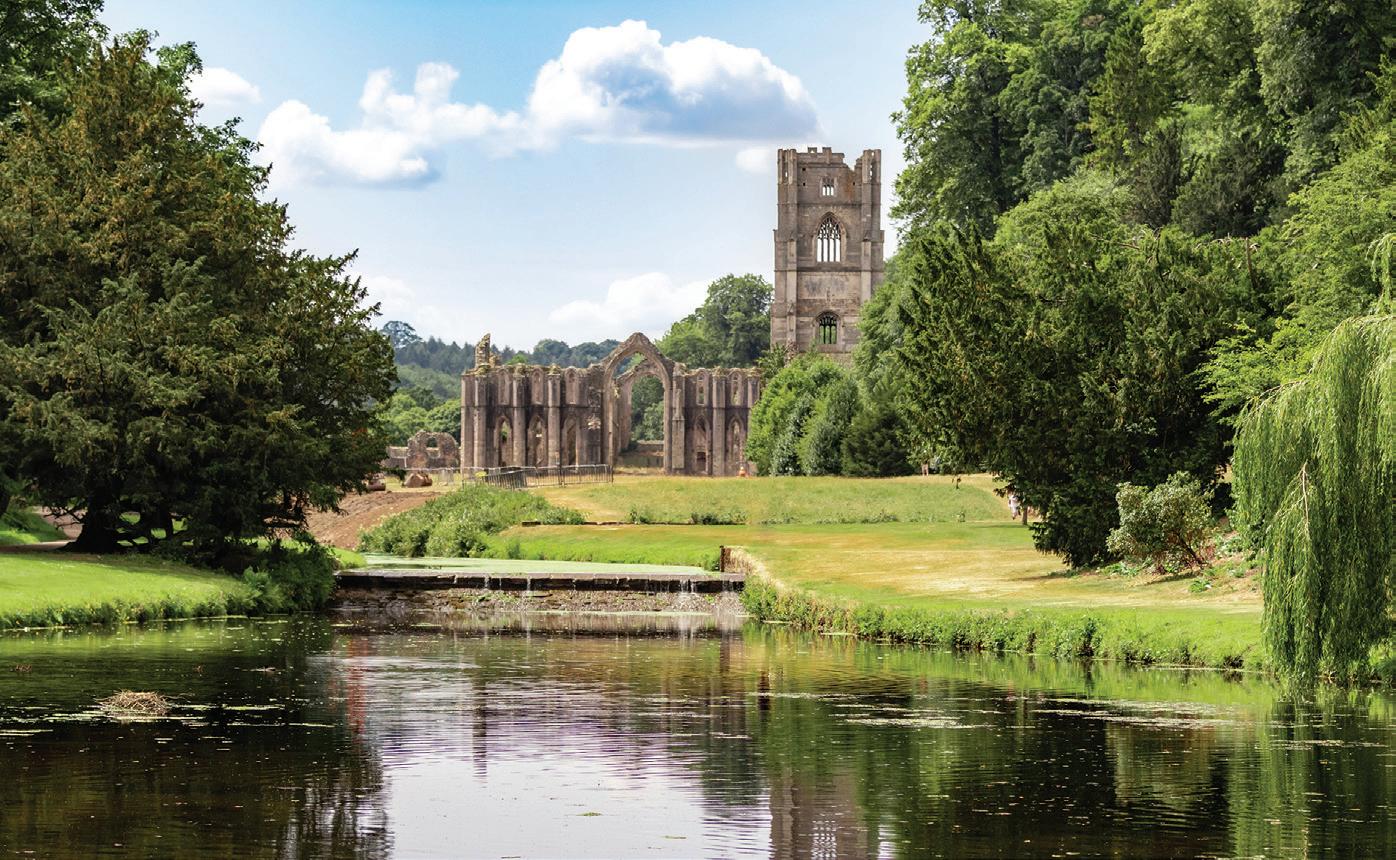
A UNESCO World Heritage site, the abbey was established by Benedictine monks in 1132 seeking to escape their extravagant monastic life in York. We will experience this tranquillity for ourselves as we meander through its transportive architecture and beautiful 18th century water garden.
Our accommodation will be the Talbot Country House Hotel & Inn, Malton, a former 17th century coaching inn, blending modern interiors with traditional charm.
FITNESS / PRACTICALITIES
This tour requires a good level of fitness and mobility, as church ground can be uneven, with steps (sometimes without handrails) and dimly lit areas. Access to Wharram Percy involves a steep walk of 1km where conditions may be muddy. Not all of the churches have toilet facilities. For ACE’s minimum fitness requirements, please see our Booking Terms & Conditions.
ITINERARY
Please note that the itinerary represents a guide to what we hope to offer, and some elements may be subject to confirmation nearer the time. We cannot guarantee access to all churches, as these can be affected by unforeseen events; however if a key visit is not possible, we will endeavour to replace it with a suitable alternative.
D ay 1 – Church and Settlement in the Yorkshire Wolds Tour assembles 1300 at the Talbot Country House Hotel & Inn, Malton for four nights. Visits to Kirkham Priory, Wharram Percy (abandoned medieval village) and St Mary’s Church, Wharram-le-Street.
D ay 2 – Wolds and Waves All Saints, Bromptonby-Sawdon; St Andrew, Weaverthorpe; All Saints, Hunmanby; Burton Agnes Hall (16th

Tour Director Meg Bernstein , PhD, specialises in medieval European art and architecture, with a particular focus on the parish church as a space shaped by community, devotion and design.
century undercroft); St Martin, Burton Agnes and Bridlington Priory (major Augustinian church).
D ay 3 – Devotion in the Dales Morning lecture followed by St Gregory’s, Bedale; St Mary’s, Masham; St Nicholas, West Tanfield (effigies and gatehouse) and Easby Abbey & St Agatha’s Church (13th century wall paintings). Free evening.
D ay 4 – Carthusians, Cistercians and Crypts Mount Grace Priory, Ripon Cathedral (7th century crypt) and Fountains Abbey & Studley Royal Water Garden (UNESCO Cistercian monastery).
D ay 5 – Parish and Presence in the Southern Wolds Morning: St Andrew, Bainton; St Mary, Fridaythorpe and St Nicholas, North Grimston. Tour disperses approx 1145 at the hotel and approx 1245 at York Station. We recommend you book trains from 1300 onwards
BOOKING AND PRICES
Cost of £1695 includes: accommodation based on sharing a deluxe twin or double bedded room, four breakfasts, two lunches, three dinners with water & coffee, excursions & admissions, gratuities & all taxes. Not included: travel insurance, classic double room for single use supplement £225. Superior double room for single use supplement £295. TOUR CODE: APYK26
Isle of Wight
September 7–12, 2026
Discover the cultural highlights and Victorian heritage of the Isle of Wight
Explore the connections between the island and the Pre-Raphaelite movement
Delve into the broader history of the island, from Roman times to the 20th century
The Isle of Wight will forever be associated with Queen Victoria, exemplified by the former royal residence of Osborne House and St Mildred’s Church in Whippingham. Alongside these royal links, we will explore the island’s connections with the PreRaphaelite movement of the 19th century, with a visit to Dimbola Lodge, the former home of photographer Julia Margaret Cameron.
Highlights will include the beautiful Mottistone Gardens, a haven for wildlife featuring delightful herbaceous borders; and the Princess Beatrice Garden at Carisbrooke Castle, created by multiple Chelsea award-winning designer Chris Beardshaw.
We also look forward to a journey on the Isle of Wight Steam Railway, a beautifully preserved heritage line, and a visit to the restored Farringford House, the former home of Alfred, Lord Tennyson.
We will stay at the Best Western New Holmwood Hotel, a traditional three-star hotel situated on the water’s edge and close to the enchanting town of Cowes. The comfortable rooms are simply furnished and have a bath or shower. A
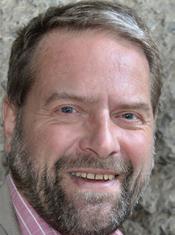
Our Tour Director is Christopher Bourne , BA, a tour leader with over 20 years of experience, and holds expertise in 19th century art and architecture, the PreRaphaelite Brotherhood, Arts & Crafts, Art Nouveau and Art Deco movements.

“Christopher was an outstanding Tour Director. Nothing was too much trouble for him. He is exceptionally knowledgeable and very entertaining”
– ACE customer on a 2024 tour led by Christopher Bourne
limited number of double rooms with a sea view or partial sea view (for double or single occupancy) are available at a supplement – please contact the ACE office for more details.
FITNESS / PRACTICALITIES
This tour requires a good level of fitness as there is a moderate amount of walking and standing. Some historical sites do not have frequent opportunities to sit down, nor handrails (Mottistone Gardens) and involve traversing steep stairs. At Osborne House, the walk to/from the beach and Swiss Cottage takes approximately 30 minutes and is on a steep incline; however, this element is optional. There is no lift at the hotel, and participants should also feel comfortable handing their luggage on and off ferries. Group members should meet ACE’s fitness criteria in our Booking Terms & Conditions.
ITINERARY
Please note that the itinerary represents a guide to what we hope to offer, and some elements may be subject to change or confirmation nearer the time.
D ay 1 – Assemble 1500 at Southampton RedJet Hi-Speed Foot Passenger Service Terminal 2 for 1535 departure, arriving West Cowes 1603. Transfer to Best Western New Holmwood Hotel, Cowes, for five nights. Welcome and introductory talk.
D ay 2 – Morning in Shorwell: St Peter’s Church (medieval and Arts & Crafts interior), Northcourt House (reception rooms, garden) and Carisbrooke Castle (Princess Beatrice Garden). Afternoon: St Olave’s Church, Gatcombe (Pre-Raphaelite stained glass) and St Mildred’s Church, Whippingham (frequented by Queen Victoria).
D ay 3 – Morning: Mottistone Gardens and Dimbola Lodge (Victorian photographer Julia Margaret Cameron’s home). Afternoon: Farringford House (home of Alfred, Lord Tennyson).
D ay 4 – Morning: journey on the Isle of Wight Steam Railway from Havenstreet Station. Afternoon: Brading Roman Villa and St Mary the Virgin Church (tombs, Victorian stained glass windows).
D ay 5 – Morning lecture: The Isle of Wight, a Victorian Island followed by a visit to Quarr Abbey (impressive 20th century buildings). Afternoon: Osborne House (former royal residence): state and private apartments, free time to visit the garden, beach, Swiss Cottage and Queen Victoria’s bathing machine.
D ay 6 – Depart West Cowes 1130 via RedJet Hi-Speed Foot Passenger Service, arriving Southampton 1158, where tour disperses.
BOOKING AND PRICES
Cost of £1995 includes: return travel as foot passenger, accommodation based on sharing a standard twin or double bedded room, five breakfasts, two lunches (one packed), five dinners with water & coffee, excursions & admissions, gratuities & all taxes.
Not included: travel insurance, standard double room for single use supplement £185. Limited rooms with sea view or partial sea view are available at a supplement. TOUR CODE: IWIT26
Wild & Ancient Anglesey
September 14–19, 2026
Enjoy a stunning variety of flora and fauna, including migrating birds and marine animals
Delve into ancient remains, including the ‘sacred lake’ at Llyn Cerrig Bach and the chambered tomb of Bryn Celli Ddu
Discover ‘the best castle never built’ at Beaumaris, the final stronghold of Edward I
Anglesey, an island off Wales’s northwest coast, boasts diverse habitats including sea cliffs, dunes, marshes, plains and coasts, which support a rich variety of birds, plants and wildlife.
Our journey includes a highlight visit to the 6th century Penmon Priory featuring a holy well and impressive cross dating from the 10th century. We will observe diverse wildlife including razorbills, kittiwakes and fulmars, and marine animals such as seals and porpoises.
The Menai Strait’s complex tides create a multi-directional water flow, leading to a unique and diverse ecosystem rich in fish and sponges. As we follow this route, we will explore the beautiful scenery of Ynys yr Eglwys – ‘Island of the Church’ – where we can admire distinct coastal flora like saltmarsh plants and a wide array of marine life and seabirds. RSPB South Stack, where heathland and farmland meet rugged sea cliffs, is a crucial breeding ground for guillemots and razorbills.
Journeying deep into Anglesey’s past, we will encounter a rich variety of ancient
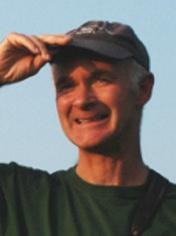
This tour will be led by Kevin Hand , MSc, MCIEEM, a longstanding ACE Tour Director with a special interest in birds, mammals and ecotourism. Kevin also enjoys exploring historical sites and has helped to develop numerous ‘Wild & Ancient’ tours with ACE.

sites, among them the Iron Age huts at Ty Mawr and the ‘sacred lake’ at Llyn Cerrig Bach, as well as the ancient village of Din Lligwy and the Neolithic chambered tomb of Bryn Celli Ddu. Moving to the medieval period, we hope to visit Beaumaris, the final castle of Edward I’s Welsh campaigns. The castle’s large size and near-perfect symmetrical plan represent a magnificent yet incomplete military undertaking.
We will stay at the Trearddur Bay Hotel, situated on the award-winning Blue Flag Trearddur Beach. With fantastic views overlooking the Bay, this establishment will provide a welcoming and comfortable base from which to explore Anglesey and local wildlife.
FITNESS / PRACTICALITIES
A good level of fitness, mobility and stamina is required for this tour, as it involves a significant amount of time spent walking and as well as standing at historical sites, where there are not always frequent opportunities to sit down. Participants should be prepared for traversing uneven ground, steps and cobbles as well as steeper sections. Please consult ACE’s minimum fitness requirements in our Booking Terms & Conditions.
ITINERARY
Please note that the itinerary represents a guide to what we hope to offer, and some elements may be subject to change or confirmation nearer the time. Wildlife can be unpredictable and we cannot guarantee all sightings.
D ay 1 – Coach pick-up from Bangor Railway Station 1500 (those travelling by train). Transfer
to Trearddur Bay Hotel, Beaumaris, for five nights. Welcome and introduction.
D ay 2 – Morning: RSPB South Stack (guillemots, razorbills, choughs, puffins) and Ty Mawr Hut Circles. Afternoon: Llyn Cerrig Bach (Iron Age finds and ducks, grebes, teals) and Cemlyn Bay (sandwich, common and arctic terns). Evening lecture: Ancient Life in Anglesey. Free evening.
D ay 3 – Visit to Bryn Celli Ddu (Neolithic chambered tomb) followed by walk along the Menai Strait to Ynys yr Eglwys. Morning: Dinas Dinlle hillfort. Evening lecture: Wildlife in Anglesey
D ay 4 – Visit to Penmon Priory followed by a walk to Puffin Island (razorbills, kittiwakes, fulmars). Continue for visits to Beaumaris (final military construction project of Edward I) and Din Lligwy (Romano-British enclosed settlement). Free evening.
D ay 5 – Morning: RSPB Cors Ddyga (marsh harriers, kestrels, otters). Afternoon: Newborough Reserve (ospreys, seals, red squirrels).
D ay 6 – Tour disperses after breakfast at the hotel, with coach drop-off at Bangor Railway station at 1100.
BOOKING AND PRICES
Cost of £1895 includes: accommodation based on sharing a standard twin or double bedded room, five breakfasts, three dinners with water & coffee, excursions & admissions, gratuities & all taxes.
Not included: travel insurance, standard double room for single use supplement £350. Limited rooms with a sea view are available at a supplement.
TOUR CODE: ANGS26
Crucible of Crime: Agatha Christie at 50
September 27 – October 3, 2026
Commemorate the 50th anniversary of Agatha Christie’s death and the centenary of her mysterious 11-day disappearance
Discover Greenway House, setting for Dead Man’s Folly
Explore the atmospheric Dartmoor landscape, a source of inspiration for crime and mystery writers
ACE is delighted to unveil a brand new anniversary tour commemorating 50 years since Christie’s passing and 100 years since her mysterious 11-day disappearance. Hailed as the ‘Queen of Crime’, Christie is celebrated as one of the world’s greatest mystery writers and a pioneer during the ‘Golden Age’ of Detective Fiction.
Christie’s childhood home of Torquay will introduce us to Ashfield, her birthplace; the Town Hall, where she gained knowledge of poisons for The Mysterious Affair at Styles; and Princess Gardens, featured in The ABC Murders We will also visit Torquay Museum, which houses a gallery dedicated to Christie’s life and work.
The fabulously Art Deco Burgh Island Hotel – which inspired the settings for And Then There Were None and Evil Under the Sun – served as a writing retreat for Christie. Similarly, the Moorland Hotel, where Christie stayed for two weeks in 1916 to finish The Mysterious Affair at Styles, provided her with refuge and creative stimulation.
Greenway, the beloved holiday home of the Christie family, is a testament to

This tour will be led by Caroline HopkinsonWoolley, BA, who has published fiction, won literary awards (including Country Life’s 2013 short story competition) and contributes to the Times Literary Supplement , Spectator, Literary Review and Country Life.

their passion for collecting, including first editions of the author’s novels and fascinating archaeological artefacts from the Middle East. Mirroring Poirot’s own approach in Dead Man’s Folly, we will arrive by boat at the iconic boathouse, preceded by a journey on the Dartmouth Steam Railway which will aptly evoke Murder on the Orient Express.
Kents Cavern will connect us with Christie’s interest in archaeology: known for yielding the UK’s oldest human fossil, the site has a rich collection of over 80,000 artefacts and was the inspiration for Hampsley Cavern in The Man in the Brown Suit
To broaden our understanding of the literary landscape that inspired much of the writer’s work, we will dedicate a day to the desolate beauty of Dartmoor, investigating the influence of Arthur Conan Doyle’s enigmatic Sherlock Holmes, whose escapades so delighted Christie.
We will stay at a centrally located hotel in Torquay connected to the author.
FITNESS / PRACTICALITIES
A good level of fitness, mobility and stamina is required for this tour, participants should be comfortable walking over uneven, muddy terrain and standing at sites. On Day 5, care must be taken when embarking and disembarking the boat and the steam train. We may also be required to take a water taxi if the tide is high on Burgh Island. For more details, please consult our minimum fitness requirements as detailed in our Booking Terms & Conditions.
ITINERARY
The itinerary represents a guide to what we hope to offer, and some elements may be adjusted nearer the time.
D ay 1 – Tour assembles at hotel in Torquay for six nights. 1800 Welcome and introduction.
D ay 2 – Morning walking tour of Christie’s Torquay: Blue Plaque at Ashfield, Town Hall, All Saint’s Church, Torre and Torre Abbey. Afternoon: Burgh Island: walking tour of the island and a visit to Burgh Island Hotel (Art Deco Hotel – And Then There Were None and Evil Under the Sun). Included dinner and murder mystery evening at The Grand – subject to confirmation.
D ay 3 – Continue for visits along Christie’s Mile including The Grand Hotel, Torquay Pavilion (exterior), Princess Gardens, Princess Pier, Royal Torbay Yacht Club and Beacon Cove. Evening talk.
D ay 4 – Whole day exploration of Dartmoor and the mystery genre in connection with Arthur Conan Doyle: Holy Trinity Church and cemetery, Buckfastleigh, Princetown, Hound Tor and Haytor, followed by Moorland Hotel. Free evening.
D ay 5 – Depart on the Dartmouth Steam Railway for Paighton followed by a visit to Greenway via the Greenway ferry. Free evening.
D ay 6 – Morning: Anstey’s Cove followed by Kents Cavern. Afternoon: Torquay Museum and Meadfoot beach. Evening talk.
D ay 7 – Tour disperses after breakfast at the hotel.
BOOKING AND PRICES
TOUR CODE: AGAC26
Country Houses of the North and South Downs
September 28 – October 2, 2026
Enjoy spectacular country houses set within the picturesque North and South Downs
Discover magnificent art collections and interiors – from paintings by Canaletto at Goodwood House to the Tudor Geraldine ceiling at West Horsley Place
Visit the Weald & Downland Museum, an award-winning collection of vernacular houses presenting over 1000 years of English history
On our tour we will encounter a magnificent collection of country houses based in the scenic North and South Downs, studying their histories, art collections and gardens.
Goodwood House, home of the Dukes of Richmond for over 300 years, possesses finely knapped flintwork and an abundance of splendid art; French furniture decorates formal rooms and its walls are hung with paintings by Canaletto and George Stubbs. The art at Polesden Lacey, meanwhile, includes refined aristocratic portraiture, works by the Dutch Masters and a rich Byzantine triptych.
The impressive Parham House has been a family home since 1577 and contains a notable assemblage of Stuart and Tudor portraiture in the Great Parlour alongside a cornucopia of treasures in the Long Gallery. Tudor history is also wonderfully preserved at West Horsley Place, where
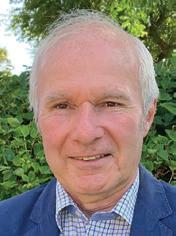
This tour will be led by Richard Pailthorpe , who studied Estate Management at the University of Reading and is now a retired Chartered Surveyor. His career has involved museum, heritage and estate management, including Goodwood, Syon Park, Parham Park and notably the Weald & Downland Museum, where he was director.

we will encounter the oldest decorative plaster ceiling in the country within the Geraldine Room.
A particular highlight will be our visit to the Weald & Downland Living Museum. This renowned open-air site comprises over 50 vernacular buildings with working demonstrations that span over 1000 years of English history.
We will stay throughout at the beautiful Millstream Hotel in Bosham, located near Chichester Harbour. This historic property has been elegantly converted from 17th century workmen’s cottages and boasts an award-winning restaurant and charming private gardens for us to enjoy.
FITNESS / PRACTICALITIES
A good level of fitness is required for this tour as it involves a moderate amount of standing and walking. Historical buildings do not always have lifts so participants must be comfortable with navigating stairs, often without handrails, and there are not always opportunities to sit down. Participants must meet ACE’s fitness criteria, as outlined in our Booking Terms & Conditions.
ITINERARY
The itinerary represents a guide to what we hope to offer. Some elements may be subject to change, and we cannot guarantee the availability of all artworks listed.
D ay 1 – Tour assembles 1330 at the Millstream Hotel, Bosham, for four nights. Visits to Goodwood House (French furniture, paintings by Canaletto, George Stubbs and Gobelins tapestries) and Boxgrove Priory. Welcome and introductory lecture.
“Given his career experiences and his local knowledge, [Richard] was a mine of information”
– ACE customer on a previous country house tour led by Richard Pailthorpe
D ay 2 – Visits to Uppark House and Gardens (historic gardens and art collected by Sir Matthew Fetherstonhaugh), Cowdray Ruins at Midhurst (Tudor mansion destroyed by a fire in 1793) and West Dean House and Gardens (creative arts centre once home to the Surrealist art collector Edward James).
D ay 3 – Visit to West Horsley Place (Geraldine Room) followed by afternoon visits to Polesden Lacey (Dutch Masters and Byzantine triptych) and St Peter & Paul’s Church, Arbury Park. Free evening.
D ay 4 – Visit to Parham House (Stuart and Tudor portraiture in the Great Parlour and Long Gallery) followed by the Weald & Downland Living Museum (open-air museum of historical vernacular buildings and working exhibits).
D ay 5 – Visit to Stansted Park (servants’ quarters). Drop-off at Chichester station approx 1300 for those travelling by train, followed by the hotel approx 1330, where tour disperses. We recommend booking onward trains from Chichester no earlier than 1330.
BOOKING AND PRICES
Cost of £2175 includes: accommodation based on sharing a premium twin or double bedded room, four breakfasts, one lunch, three dinners with water & coffee, excursions & admissions, gratuities &
Pre-Conquest York: Creating England’s Second City
October 5–10, 2026

Conjure up York’s pre-Conquest past, from the Roman to early medieval era
Explore layers of history in York Minster’s Undercroft, including a stunning display of Roman walls and frescoes, Anglo-Saxon and Viking grave markers
Enjoy an exclusive viewing of Roman, Anglo-Saxon and Viking Age artefacts excavated by York Archaeological Trust
Boasting a rich and diverse history, York traces its origins to the Roman period, when it was founded as a military fortress. Thriving under Roman rule, Eboracum developed into the capital of the Roman province of Britannia Inferior, complete with an array of public and private buildings and a bustling economy.
As we roam along the city walls, we will unearth the city’s multi-layered past in the centuries leading up to the Norman Conquest. While much is still visible above ground, still more will come to life through vivid illustrations and insights,
revealing sites of Roman activity, preConquest castles, churches, Viking Age streets and townscapes.
Following the Romans’ withdrawal, York became a prominent ecclesiastical centre during the Anglo-Saxon era. York Minster Undercroft houses remarkable Roman remains, including walls and frescoes, highlighting its development from a Roman military headquarters to a Romanesque and then Gothic cathedral.
By 866 CE, Northumbria’s internal conflicts created an opportunity for the raiding Viking army, who captured the city and renamed it Jorvik. At the incredible Jorvik Centre, we will step back in time in a reconstruction of the city during the Viking Age before viewing displays of artefacts excavated nearby.
Yorkshire Museum is home to a superb Anglo-Saxon helmet, as well as stunning Roman, Anglo-Saxon and Viking finds. Courtesy of York Archaeological Trust, we will enjoy an exclusive viewing session dedicated to a selection of key artefacts from these eras.
We will stay at The Grand, York, a luxury five-star hotel. Built in the 1900s, this iconic Grade II listed building was the
“What I love about walking through York is knowing there’s 2000 years of history beneath my feet. The layout of the streets, the position of the markets, the churches and churchyards – this odd corner, that quirky passage – they all have a reason to be where they are and tales to tell”
– Tour Director Ailsa Mainman
former headquarters of the North Eastern Railway and features elegant, characterful interiors and contemporary facilities.

Tour Director Ailsa Mainman , BA, MSc, PhD, is a freelance archaeologist and writer based in York. Much of Ailsa’s career was spent at York Archaeological Trust, working initially on Viking Age discoveries, which led to the famous Jorvik Viking Centre, before moving onto Anglo-Saxon material.

FITNESS / PRACTICALITIES
A good level of fitness, mobility and stamina is required for this tour, as it involves a significant amount of time spent walking, where there are not always frequent opportunities to sit down. Some visits on this tour will involve walking over rugged, cobbled streets, uneven and occasionally steep steps to access the walls, while church interiors may be dimly lit. For more information on ACE’s minimum fitness criteria, please see our Booking Terms & Conditions.
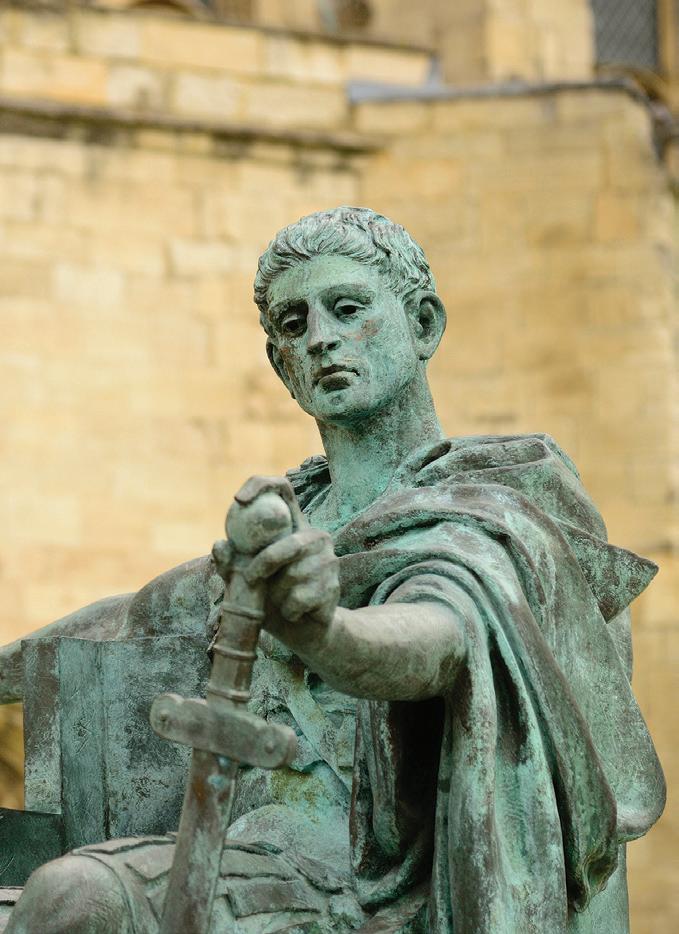
ILLUSTRATING THE PAST
Some sites on this tour are only known through archaeological discovery and require expert knowledge and imagination to envision. Tour Director Ailsa Mainman will help us to do just that, transporting us through layers of the city’s history. Through a combination of physical illustrations, talks and handouts compiled from her extensive research and past excavations, Ailsa will breathe life into parts of the city’s past that have been lost or hidden over time.
ITINERARY
Please note that the itinerary represents a guide to what we hope to offer, and some elements may be subject to change or confirmation nearer the time.
D ay 1 – Assemble at The Grand, York for five nights. 1830 Welcome and introduction.
D ay 2 – Morning: Bootham Bar (excavated Roman gate), north corner tower and Chapter House (exterior) and York Minster (stained glass and undercroft housing surviving Roman walls, frescoes). Light lunch at Bedern Hall and talk: Were the Dark Ages all that dark? Afternoon: East Angle tower (excavated remains of the Roman corner), King’s Square (site of Roman fortress gate), pre-Conquest churches including the lost St-Helen-on-the-Walls, St Cuthbert’s, St Andrew’s and St Crux (exteriors).
D ay 3 – All Saint’s Church at Ousegate (important pre-conquest church) and Jorvik
Viking Centre. Continue to St Mary’s Church, Clifford’s Tower and Castle Museum (exteriors) and Baile Hill (tree-covered motte, once the site of an 11th century castle). Some free time, followed by a free evening.
D ay 4 – Morning: Micklegate Bar, Holy Trinity Church, St Mary Bishophill JNR (exterior) and SNR (originally built over a Roman town house), Carr’s Lane (best surviving example of a Viking Age street). Afternoon: Roman Multangular tower, ruins of St Mary’s Abbey, St Olave’s Church (first built for the burial of a Viking Earl) and Yorkshire Museum (Roman, Anglo-Saxon and Viking age finds). Talk: York on the Eve of the Conquest followed by a private drink & canape reception and viewing of Roman and Viking age artefacts provided by York Archaeological Trust. Free evening.
D ay 5 – Full day exploring the Yorkshire countryside and pre-Conquest churches including important Anglo-Saxon and Viking age sculpture (Hovingham, Stonegrave, Kirkdale, Lastingham, Sinnington and Middleton-byPickering – time permitting).
D ay 6 – Tour disperses after breakfast at the hotel.
BOOKING AND PRICES
Cost of £1995 includes: accommodation based on sharing a classic twin or double bedded room, five breakfasts, one light lunch, one drink & canape reception, two dinners with water & coffee, excursions & admissions, gratuities & all taxes.
Not included: travel insurance, classic double room for single use supplement £400. TOUR CODE: PCYK26
Tours by Subject
ARCHAEOLOGY
Tunisia: From the Ruins of Carthage to the Great Mosque of Kairouan
Ancient Treasures of Cairo 16–17
Ancient Macedonia: The Empire of Philip II & Alexander the Great 20–21
Ancient Treasures of Naples: Competition, Leisure & Vice
Pre-Conquest York: Creating England’s Second City
ART & ARCHITECTURE
Great Art Collections of New York: 250 Years of Independence
Frida, Diego & Modernism in Mexico City
& Design – 100 Years in
Córdoba and Granada

SCHEDULE

2026 Schedule
We are delighted to share an overview of our planned 2026 departures. More information, including Tour Directors and prices, can be found on our website or will be made available later in the year. For tours not yet on sale we invite you to register your interest by completing the form on our website; this will ensure you receive the full tour details by email as soon as they become available.
To register your interest in a tour, please complete the form on our website or contact the ACE office by calling 01223 841055 or emailing sales@aceculturaltours.co.uk
Please note that some tours may be subject to change or confirmation, and we cannot guarantee that all the tours listed below will go ahead.
January
17–23 Music, History & Art of Malta
26–1/2 Pompeii with Herculaneum (First Departure)
27–2/2 Mozart Festival in Salzburg: 270th Anniversary Tour
28–2/2 La Folle Journée de Nantes: Rivers of Music
February
5–9 Ancient Treasures of Luxor
11–14 Wild & Ancient Somerset: Winter Tour
17–23 Venice: The Triumph of Light & Colour
19–22 Solomon’s Knot & the Sixteen at Bath Bachfest
23–28 Art Treasures of Madrid & Malaga
24–1/3 Imperial Rome: The Might of the Emperors
March
2–6 Cardiff: A Cultural Capital
2–6 Roman & Byzantine Ravenna (First Departure)
2–9 Art Treasures of the Côte d’Azur (First Departure)
9–14 Aquileia: City of Antiquity (First Departure)
9–16 Wagner’s Ring Cycle at La Scala: 150th Anniversary Tour
9–23 South Korea: Pagodas, Palaces & Temples
18–25 Wildlife & Walking in Extremadura
19–23 Fenland Abbeys
23–2/4 Byzantine & Ottoman Türkiye
24–5/4 Algeria: Encounters between Rome & North Africa
26–30 Opera in Berlin: Rossini, Strauss & Verdi
27–2/4 Music & Art in Provence
April
7–14 Wild & Ancient Sardinia
8–12 Art Treasures of Berlin
9–16 Wildlife & Walking in the Alentejo & Algarve
10–17 Art Treasures of Tuscany & Umbria: Masterpieces of the Renaissance
13–16 Art Treasures of Liverpool
13–18 Cornwall Calling: The Artists of Newlyn and St Ives
14–24 Towns & Palaces of Poland
15–29 Bolivian Baroque: Music from the Missions
17–3/5 Uzbekistan & Tajikistan: Traversing the Silk Road (First Departure)
20–24 Churches of Herefordshire & Shropshire
20–26 Pompeii with Herculaneum (Second Departure)
21–26 Art Treasures of Belgium: The Flemish Masters
23–26 The Rights of Man: Rebellion and Dissent in East Anglia
24–30 Wild & Ancient Cornwall
27–1/5 Country Houses of Derbyshire
May
5–9 Great Bardfield & Beyond: MidCentury Art & Design in East Anglia
7–12 Art Nouveau in Belgium
8–15 Douro River Cruise on the Royal Barge
10–14 Walking the Thames Path: William Morris & the Arts & Crafts Movement
11–15 Romney Marsh Churches
12–19 Wild & Ancient Islay, Jura and Colonsay
12–19 Wildlife & Walking on the Isles of Scilly
12–22 Ancient Sicily (First Departure)
18–25 Art Treasures of the Côte d’Azur (Second Departure)
19–22 Summer at the Royal Shakespeare Company
21–28 Ancient Macedonia: The Empire of Philip II and Alexander the Great 25–1/6 Wagner’s Ring Cycle in Berlin: 150th Anniversary Tour
26–2/6 Wildlife & Walking in Romania
27–6/6 Albania and North Macedonia: A Legacy of Empires
31–6/6 Artists and Artisans of Umbria
June
2–7 Art Treasures of Lucca
5–19 Kazakhstan: From The Silk Road to Sir Norman Foster
6–13 Wild & Ancient Outer Hebrides
8–14 In the Footsteps of Le Corbusier: His Life & Legacy
12–18 Bach Festival in Leipzig
16–21 Art Treasures of Vienna
18–22 Stour Music Festival
19–26 Rhône River Cruise: Ancient Treasures & Musical Legacies
22–26 Children’s Literary Classics: Winnie the Pooh at 100
22–29 The Shetland Islands
24–30 Archaeology & Legend in St Patrick’s Country
29–3/7 Walking Norfolk’s Coastal Path
30–4/7 Gardens of the Cotswolds
30–6/7 East Neuk Festival
TBC Aldeburgh Festival

July
2–9 Medieval Burgundy
6–12 Hadrian’s Wall: Emperors, People and Gods
7–14 Wild & Ancient Orkney
11–15 Longborough Opera Festival
13–16 Constable & Gainsborough in Suffolk: 250th Anniversary Tour (First Departure)
15–22 Wildlife & Walking in Austria
20–23 Constable & Gainsborough in Suffolk: 250th Anniversary Tour (Second Departure)
20–24 Country Houses of Herefordshire & the Welsh Borders
20–25 Buxton Opera Festival
20–26 Princely Courts of Central Germany
27–31 Art & Piety in Medieval North Yorkshire
28–2/8 Gloucester Three Choirs Festival
August
3–7 Art & Ceramics of the Industrial Revolution
4–7 Churches of Norfolk: An Appointment with Angels
5–8 Sussex Modernism: Artists & Writers on the Downs
6–10 International Gilbert & Sullivan Festival
10–14 Country Houses of Yorkshire
19–23 Roman Sussex
20–27 Schubert in Schwarzenberg
24–28 Northumbria in the First Millennium
25–30 Sibelius Festival in Finland
TBC Bayreuth Festival
TBC Rossini in Pesaro
TBC Country Houses of East Dorset
September
1–7 Mackintosh’s Glasgow
5–12 Lycian Cruise
7–12 Aquileia: City of Antiquity (Second Departure)
7–12 Art Treasures of Scotland: Art & Craft in Edinburgh & Dundee
7–12 Isle of Wight
9–15 Al-Andalus: Córdoba and Granada
11–27 Uzbekistan & Tajikistan: Traversing the Silk Road (Second Departure)
14–19 Wild & Ancient Anglesey
14–25 Serbian Monasteries
15–20 Bauhaus: German Modern Art & Design – 100 years in Dessau
SCHEDULE
21–25 Roman & Byzantine Ravenna (Second Departure)
21–26 Country Houses of North Norfolk
27–3/10 Crucible of Crime: Agatha Christie at 50
28–2/10 Country Houses of the North and South Downs
28–3/10 Art Treasures of Siena and San Gimignano
28–5/10 Art Treasures of Moravia
TBC Autumn at the Royal Shakespeare Company
TBC Lucerne Summer Festival
TBC Wildlife & Walking in Corsica
TBC Arctic Norway & the Lofoten Islands: History & Landscape
October
1–6 Palladio’s Villas in the Veneto
(6–9 Palladio in Venice extension)
5–10
Pre-conquest York: Creating England’s Second City
6–11 Luxembourg: The Crossroads of Europe
6–16 Ancient Sicily (Second Departure)
12–18 Great Art Collections of New York: 250 Years of Independence
12–19 Art Treasures of Valencia
19–22 Art & Craft in Cambridge
26–2/11 Art Treasures of the Côte d’Azur (Third Departure)
26–30 Stained Glass in England: Style, Technique & Colour
27–31 Venice Biennale
31–7/11 Pompeii with Herculaneum (Third Departure)
TBC Verdi Festival in Parma
TBC Western Greece: Oracles & Empires
TBC Wexford Opera Festival
TBC Hidden London: Exploring London’s Roman Past
TBC Country House Music Festival
November
1–10 Tunisia
2–6 Art Treasures of Bruges
3–10 The Coto Doñana & Seville
3–18 The Story of the Raj: From Calcutta to Delhi
4–10 Everyday Life in Ancient Rome
9–15 Art Treasures of Bologna & Parma: A Feast for the Soul & Senses
16–23 Art & Architecture of Puglia
17–22 Vienna 1900
17–23 Caravaggio in Italy
20–3/12 From Spain to Morocco: Roman Hispania and Mauretania
23–7/12 Ethiopia
26–1/12 Ancient Treasures of Cairo
30–8/12 Frida, Diego & Modernism in Mexico City
TBC Oxford College Chapels & Organs
TBC Glyndebourne Autumn Tour
TBC Music & Opera in Vienna
TBC Wild Canaries
TBC Bath Mozartfest
TBC Athens: The Cradle of Civilisation
TBC The Peloponnese: Land of Legends
December
4–9 Advent Cruise on the Rhine: Between Darkness & Light
14–21 Ancient Treasures of Naples: Competition, Leisure & Vice
Our Experts
Chosen not only for their specialist knowledge, but equally for the clarity and enthusiasm with which they communicate and impart their passion to others, our expert Tour Directors are personally involved in the creation and planning of our tours. To see our full range of Tour Directors and their biographies please visit our website.



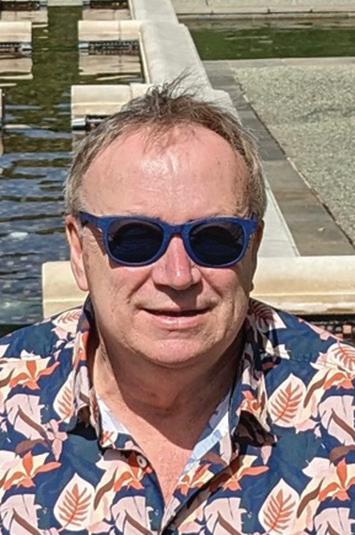






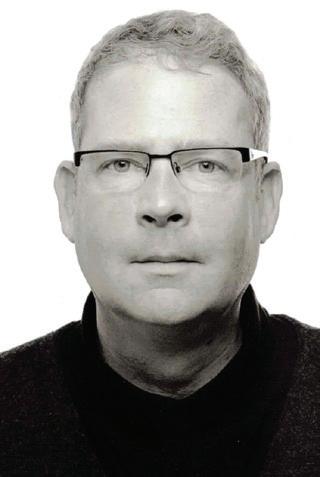


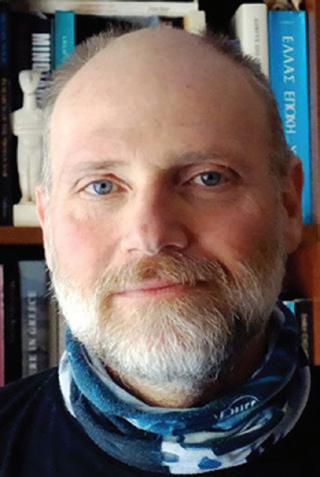
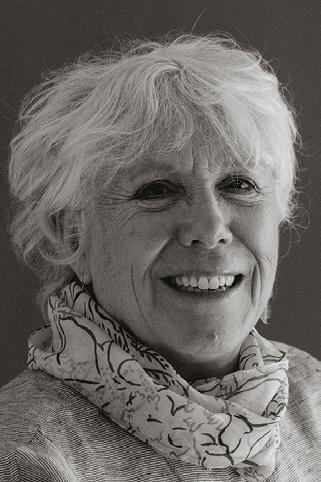


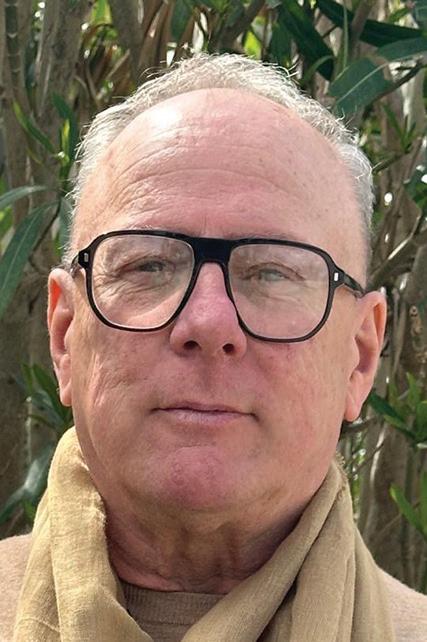
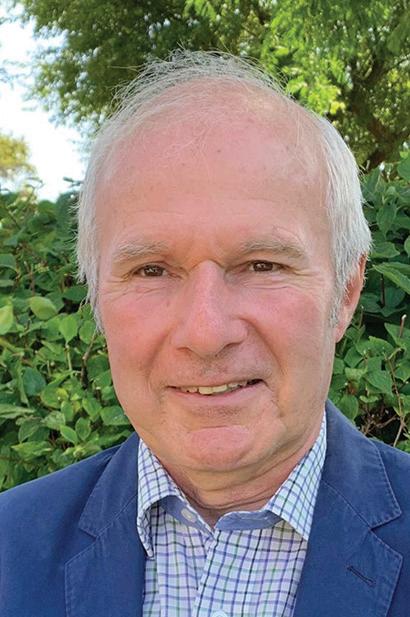
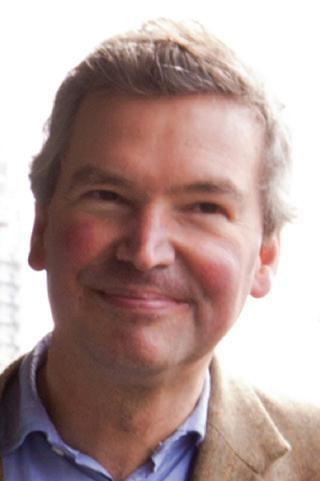


Meg Bernstein
Meg Bernstein, PhD, is an art historian specialising in medieval European art and architecture. She earned her PhD in Art History from UCLA in 2019, following earlier degrees from Smith College, the University of Massachusetts Amherst and Yale University. A lecturer in medieval art, Meg has taught courses on medieval visual culture, materiality and architecture at a variety of institutions across the US and UK.
Christopher Bourne
Christopher Bourne, BA, is an expert in 19th and 20th century art and architecture and has been leading art and architectural history tours in the UK and Belgium for over 20 years. He read History and French at the University of Manchester and then lived and worked in Brussels for 15 years. He developed an early interest in 19th century art and architecture into specialist knowledge of William Morris and the Pre-Raphaelites, the Arts & Crafts Movement, Art Nouveau and Art Deco.
Sandy Burnett
Sandy Burnett, MA, is one of the UK’s most versatile musicians and music commentators, enjoying a career that combines broadcasting, performing and lecturing. After studying at St Catharine’s College, Cambridge, and working as a leading theatre music director, Sandy Burnett spent a decade as one of the core team of presenters on the UK’s classical music station BBC Radio 3. Since 2013 he has devised and led cultural holidays all over the world; he is an accredited Arts Society lecturer, runs an online classical music appreciation Listening Club and is the author of the Idler Guide to Classical Music.
David Burke
David Burke, PhD, is a historian of intelligence and international relations who has lectured at the University of Cambridge and Victoria University of Wellington, New Zealand. His books include The Spy Who Came in from the Coop; The Lawn Road Flats: Spies, Writers and Artists; and Russia and the British Left: From the 1848 Revolutions to the General Strike.
Emilie Capulet
Emilie Capulet, MA, MMus, PhD, is an award-winning Franco-British concert pianist, lecturer and musicologist. She performs worldwide in international music festivals and concert halls in Europe, the USA, Canada, Latin America and Asia. Emilie studied at the Guildhall School of Music and Drama, is a Senior Fellow of the Higher Education Academy and is the BMus (Hons) Programme Leader at Trinity Laban Conservatoire of Music and Dance. She is currently the recipient of a prestigious Leverhulme Research Fellowship and has been a Visiting Fellow at Keble College, University of Oxford, in 2025.
Suzanne Fagence-Cooper
Suzanne Fagence Cooper, MA, PhD, is a curator and historian whose specialisms include 19th and 20th century British and French art. An Arts Society accredited lecturer, she was a curator and Research Fellow at the V&A Museum for 12 years and has collaborated with many of Britain’s regional museum collections. She is the author of To See Clearly: Why Ruskin Matters (2019) and How We Might Live: At Home with Jane and William Morris (2022) and curated the 2019 exhibition Turner, Ruskin & the Storm Cloud at York Art Gallery.
Peter Exely
Peter Exley, BSc, is an ecologist, ornithologist and conservationist who worked for the RSPB for over 27 years, where he led the communication and community elements of projects such as the reintroduction of cranes to Somerset and the restoration of seabirds on islands. Before that, Peter was a Director at nhbs. com, a global leader in supplying ecology, wildlife and conservation literature. He has also held posts with BirdLife International in South Korea and the Albatross Task Force in South Africa.
Kevin Hand
Kevin Hand, MSc, MCIEEM, is a longstanding ACE Tour Director with a special interest in birds, mammals and ecotourism. He has been President and Vice President of the Cambridge Natural History Society and continues to act as a Trustee. He currently also chairs the Newmarket Chalk Streams Trust, has been a Trustee of the Wildlife Trust for Bedfordshire, Cambridgeshire and Northamptonshire, as well as a reserve warden, and is now a Biodiversity Surveyor for the RSPB.
Kristine Horner
Kristine Horner, PhD, is a sociolinguist and linguistic anthropologist. A professor at the University of Sheffield, where she is also Director of the Centre for Luxembourg Studies, she also engages in collaborative work with the University of Luxembourg. Kristine has published widely on linguistic and cultural diversity in Luxembourg from a contemporary and historical perspective, in addition to the books Multilingualism, (Im)mobilities and Spaces of Belonging (Multilingual Matters) and Introducing Multilingualism: A Social Approach (Routledge).
Caroline Hopkinson-Woolley
Caroline Hopkinson-Woolley, BA, gained her degree in English Language & Literature from Merton College, Oxford, before training as a lawyer. She is also a freelance writer who has published her fiction in anthologies and won several awards, including Country Life’s short story competition, judged by Alexander McCall Smith, in 2013, as well as contributing to the Times Literary Supplement , Spectator, Literary Review, The Oldie , Slightly Foxed, Oxford Today, The Lady, The Tablet and, most regularly, Country Life
Nick Jackson
Nick Jackson graduated from the Institute of Archaeology at University College London and proceeded to a career as a field director excavating the ancient history of the Eastern Mediterranean in Turkey and the Near East. After a research post at the University of Cambridge, he began work as a guide lecturer in Syria, Jordan, Lebanon, Israel and Oman and has continued leading tours to the present day.
Ellen Jones
Ellen Jones, PhD, studied Egyptology at the University of Oxford as an undergraduate through to the award of her DPhil, which explored the relationship between gender, selfpresentation and religious decorum in ancient Egyptian elite tombs from the New Kingdom. For the past four years, Ellen worked as a Classics teacher, focusing on classical languages, Roman daily life, and ancient Greek religion. A trained archaeologist, specialising in digital epigraphy and photography, she is also a member of two archaeological missions to Egypt, working on graffiti at Karnak Temple and funerary iconography at the necropolis at El-Kab.
Alex Koller
Alex Koller, PhD, is an expert in art history and architecture. Born in Vienna, Alex has lived and studied in Vienna, Salzburg and Cambridge, gaining his PhD in the history of art from Magdalene College, Cambridge. Alex is an accomplished linguist and has travelled extensively throughout Europe and the Far East. Alex has worked with ACE for many years and has led tours all over the world, from Hungary and Austria to Bulgaria, Serbia, Vietnam, Korea and Japan.
Aristotle Koskinas
Aristotle Koskinas is an archaeologist, specialising in the classical era and a pioneer of the study of ancient roof tiles and architectural terracottas in Greece. Throughout his career, he has participated in and supervised various excavations and restoration projects conducted by the Greek Ministry of Culture as well as taken part in surface survey projects conducted by the Greek Research Foundation and the University of Thessaly. Following this, he graduated from the Greek School of Tourist Guides, combining his love of storytelling and archaeology, leading and organising cultural tours all over Greece. He also lectures on Greek history and archaeology, has published several papers and taken part in conventions about architectural terracottas.
Ailsa Mainman
Ailsa Mainman, BA, MSc, PhD, is a freelance archaeologist and writer based in York. Much of her career was spent at York Archaeological Trust, working initially on Viking Age discoveries, which led to the famous Jorvik Viking Centre, before moving onto AngloSaxon material. As Assistant Director, she oversaw various research and publications, before leaving to write Anglo-Saxon York and pursue a freelance career. Ailsa has worked on various excavations in Europe and lectured on tours throughout the Viking world. She is also an Honorary Visiting Fellow at the Department of Archaeology, University of York and a Research Associate at York Archaeological Trust
Marie-Anne Mancio
Marie-Anne Mancio, MPhil, DPhil, is an art historian, writer, experienced tour leader and Arts Society accredited lecturer. Marie-Anne originally trained as an artist before gaining a DPhil at the University of Sussex in art and critical theory. She has written and presented courses for Tate and Dulwich Picture Gallery; writes reviews, catalogue essays and historical fiction, and is a frequent visitor to Italy. She is currently writing a book about Caravaggio.
Eireann Marshall
Eireann Marshall, PhD, is a Research Associate and Associate Lecturer with the Open University. She has published a number of articles on ancient North Africa and co-edited volumes on Death and Disease in the Ancient City, as well as Women’s Influence on Classical Civilisation. Bilingual in Italian, she has led many tours throughout Europe and North Africa over a prolonged period of time. In 2019, Eireann Marshall was chosen as the Top History & Culture Guide for Wanderlust magazine’s World Guide Awards.
Stephen Nelson
Stephen Nelson, BA, MA, is an artist and sculptor who works in a range of materials and media. His work has been exhibited at galleries and museums globally, including Camden Arts Centre, the Whitechapel Gallery, the Fine Arts Society and at the Royal Academy Summer Show. Stephen also curates exhibitions, which have included shows in Eritrea and Tanzania for the British Council and an exhibition about British art and the Italian arte povera movement, for the Estorick Collection. Stephen has led numerous art and cultural tours throughout Europe and further afield, and has acquired specialist knowledge of Italy and Mexico.
Richard Pailthorpe
Richard Pailthorpe studied Estate Management at the University of Reading and is a retired Chartered Surveyor. His career has involved museum, heritage and estate management, including Goodwood, Syon Park, Parham Park and notably the Weald & Downland Museum, where he was director. He is passionate about historic buildings and has served on the Historic Houses committees at national and regional level. He is a trustee of Sussex Heritage Trust, the Goodwood Education Trust and is a guide for Goodwood House.
Alan Powers
Alan Powers, PhD, is one of the UK’s leading architectural historians and has published widely on all aspects of 20th century architecture and design. Alan was Professor at the University of Greenwich School and currently lectures at New York University in London. His books include Bauhaus Goes West: Modern Art & Design in Britain & America
Andrew Spira
Andrew Spira, MA, was a specialist in Byzantine and Russian icons at the Temple Gallery, London, for several years before working as a curator at the V&A Museum. He was subsequently Programme Director at Christie’s Education and has been leading tours to cultural sites in Russia, Armenia, Georgia and all across Europe for over 20 years. His recent publications include The Invention of the Self: Personal Identity in the Age of Art (Bloomsbury Academic, 2020), Simulated Selves: The Undoing of Personal Identity in the Modern World (Bloomsbury Academic, 2020) and Foreshadowed: Malevich’s Black Square and Its Precursors (Reaktion Books, 2022).
Nicholas Wearne
Nicholas Wearne, BA (hons), MPhil (Oxon), a former ACE Bursary student, is a Senior Tutor at the Royal Birmingham Conservatoire. His career as a solo organist has taken him all over the world and he is a previous winner of the Poul Ruders Prize at the Odense International Organ Competition. Nicholas has held a number of prestigious positions as Organist; he was an Organ Scholar and then Assistant Organist at New College Oxford, and was Organist at St Martin-inthe-Fields, Trafalgar Square.
Booking Conditions
INTRODUCTION
Booking conditions are accurate at the time of printing. For the most up-to-date information, please refer to our website.
ACE Cultural Tours meets or exceeds all the requirements of the Package Travel Regulations 2018, full details of which can be found online at: www.legislation.gov.uk/uksi/2018/634/contents/ made
In addition, flight-inclusive tours benefit from the financial protection afforded by our Air Travel Organiser’s License (ATOL 10204), whilst UK and other tours without flights are protected through the Association of Bonded Travel Organisers Trust Limited (ABTOT). We are also long-term members of the Association of Independent Tours Operators (AITO). For your own safety and financial security we do not recommend you book a holiday that does not benefit from the above protection.
The Package Travel Regulations 2018 together with the following booking information and our promotional material form the basis of your contract with ACE Cultural Tours. We have tried to keep this as concise and simple as possible, so please read all the following paragraphs to make sure you understand and are happy with the terms of your booking.
PAYMENT
If you are booking 10 weeks or more before departure, the following deposits are payable at the time of booking:
£300 per person for UK tours. £400 per person for all European tours. £550 per person for Worldwide tours. £500 per person for all cruises.*
The balance must be received by us not less than 10 weeks prior to departure. This date will be shown on the confirmation invoice. We do send an email reminder but ask that you also make a note of the date in your diary.
If you are booking less than 10 weeks before departure, full payment for all tours must be made at the time of booking.
*In addition to the deposit at the time of booking all cruises require a further payment of £500 six months prior to sailing.
NO SURCHARGES
Tour prices are confirmed at the time of booking and thereafter will not be subject to any surcharge. We have forward purchase of currency and other precautions in order to guarantee your holiday is not affected by fluctuations in fuel or currency rates. In the event of extraordinary circumstances making the tour unviable we would offer you a full refund or credit note or an alternative tour.
CANCELLATION BY YOU
You may cancel your booking at any time before departure. Notice of cancellation must be in writing and because we incur costs from the time we confirm your booking, the following charges will apply (for which we suggest you purchase appropriate insurance):
Period before departure within which written notification of cancellation is received by us Cancellation charge
70 days or more Deposit only
69-29 days 60% of total booking value
28-15 days 90% of total booking value
14 days or less 100% of total booking value
CANCELLATION BY YOU DUE TO COVID-19 OR OTHER ILLNESS
Please note that if you are personally prevented from travelling as a result of COVID-19 our normal cancellation charges will apply. For this reason we highly recommend that you take out travel insurance at the time of booking that specifically includes cover in the event that you are personally unable to travel. In addition you should have insurance to cover additional accommodation/transport/repatriation costs incurred due to local/national quarantine requirements.
CANCELLATION BY US
We reserve the right to cancel your booking if there are insufficient bookings on your tour (this will depend on tour type and destination) or for other unforeseen operational reasons. In such an event, we will provide you with at least 70 days’ notice of cancellation and provide you with a full refund.
Very occasionally, due to extraordinary circumstances in the immediate vicinity of the destination, it may be necessary to cancel the tour with less than 70 days’ notice, in which case we will likewise provide you with a full refund.
Note that in either situation we cannot reimburse any incidental expenses you may have incurred (for example, train fares, additional accommodation or connecting flights). If you are buying your own flights, please liaise with the office before committing to significant expenditure.
CHANGES BY US
We do our utmost to ensure that all the arrangements and visits are as described. However, it is in the nature of travel that changes are sometimes inevitable, although most of these will be minor in nature. In the event that a particular visit is not possible, we will aim to replace it with another of equal interest. If we have to make more significant changes to the itinerary in advance of departure, we will provide you with a choice of a refund, credit note or an alternative itinerary.
ACCOMMODATION
Accommodation in hotels is in twin/double bedded rooms, the majority of which have private bath/shower and toilet.
On cruise ships, accommodation is in cabins with shower and toilet only.
Single rooms: As a general rule, we aim to provide our solo travellers with double/twin rooms for sole use. However, this is not possible on all tour departures, and occasionally, despite a supplement being payable, only single rooms may be available, and such accommodation may not meet exactly the same standard as double/ twin accommodation or be located in the same area of the hotel. ACE Cultural Tours very much welcomes single travellers and we make no profit from single room supplements. The costs are simply down to the economics of running a hotel.
Porterage is included on overseas tours where available.
FLIGHTS & TICKETS
Specific instructions relating to the departure and travel arrangements will be sent with your air and/or other travel tickets approximately two weeks before departure. It is essential that you check your tickets carefully immediately upon receipt to ensure you have the correct flight times. Occasionally carriers will make late changes to departure times but we will contact you as soon as possible if this occurs.
We will always aim to provide you with the name of your likely airline and flight times when you make a booking. However, flight schedules are set by the airlines and outside our control. We therefore reserve the right to change the actual carrier and flight times for your tour.
In accordance with the regulations, we are required to bring your attention to the Community List of air carriers subject to an operating ban within the UK & EU: https:// transport.ec.europa.eu/transport-themes/eu-airsafety-list_en
HEALTH & SAFETY
We operate a safety audit system and work hard with our suppliers to ensure the safety and comfort of our travellers. However, please note that some of the destinations to which we travel have lower requirements and standards than those of the UK. It is therefore essential that you follow any instructions and guidance provided by your tour manager or director.
FITNESS
Due to the nature and terrain on our tours, we are unable to accept Rollators/Strollers being used. The majority of ACE Cultural Tours are active in nature and, to make the most of our time in a destination and provide excellent value for money, they are busy with visits every day. As such, they require a certain minimum level of mobility, physical and mental fitness, and stamina. Our visits may involve navigating several steps, uneven ground, steep ascents and descents, and embarking and disembarking aircraft, coaches, trains, cruise vessels and even Zodiac dinghies. Plenty of walking, punctuated by lengthy periods of standing, is the norm, and some tours may involve long coach journeys. All customers must be fit and able enough to fully participate. Furthermore, every tour comprises a group of
guests. We cannot allow the entire group to be negatively impacted by one participant, either holding up the pace we reasonably need to maintain or disproportionately requiring the attention and support of the tour staff.
We carefully consider the intensity, fitness and other requirements of each itinerary and describe them on the tour pages of our brochures and website. Please study these descriptions closely. When you call to book, we will reiterate those requirements and ask you to confirm that all group members are indeed fit enough and otherwise able to meet the criteria. It is your responsibility to answer fully and honestly. If it transpires that you are not able to keep pace with the tour and/or it reasonably appears you are negatively impacting (or are reasonably likely to negatively impact) the enjoyment of the rest of the group (including their ability to complete all scheduled visits), we may ask you to sit out certain days/visits, take a taxi at your own expense (if available in the location), or even, if we consider there is no other reasonable alternative, ask you to leave the tour and make your own way home.
As a minimum, participants should be able to successfully complete the following selfassessment tests:
• Walk for one hour at a reasonable pace and without needing to take a break to rest
• Climb at least two flights of stairs at a reasonable pace
• Stand unaided for at least 30 minutes
• Stand up and sit down ten times in one minute
• Carry or otherwise move your own luggage
HEALTH PRECAUTIONS IN ADVANCE
Whilst we will provide details of any compulsory health requirements applicable to British citizens for your tour, it is your responsibility to ensure you are aware of all recommended vaccinations and health precautions in good time before departure. Please check with a doctor or clinic not less than ten weeks prior to departure to ensure that you have met the necessary requirements and have the applicable information.The following website may also be helpful: travelhealthpro.org.uk
For tours in the EU/EEA you should obtain an GHIC (Global Health Insurance Card) prior to departure from https://services.nhsbsa.nhs. uk/cra/start. Please note that an GHIC is not a substitute for travel insurance.
You must be in possession of all necessary travel and health documents before departure (and pay for any related costs). We regret that we cannot accept any liability if you incur fees or are refused entry onto any transport or into any country due to failure on your part to carry all required documentation.
MEDICAL CONDITIONS, OR REDUCED MOBILITY, OR DISABILITY
We aim to provide authentic cultural experiences and to provide excellent value for money. As a result, the majority of itineraries are quite intensive and can be tiring. They may involve a significant amount of walking, uneven surfaces at outdoor sites or in historic buildings, long journeys, and uncomfortable climatic conditions which might exacerbate existing medical or mobility issues. Destinations include many countries with lower standards of health and safety than the UK and limited adaptations for people with reduced mobility. Some destinations do not (and cannot reasonably be expected to)
provide emergency and/or health care to the standard that travellers with mobility and/or health conditions may require in the event of any form of incident or emergency.
For the above reasons, our holidays may not be suitable for people with certain disabilities, medical conditions or significantly reduced mobility.
If you suffer from any medical condition, disability or reduced mobility (including any which affect the booking process) or have any special requirements as a result, please tell us before making your booking so that we can assist you in considering the suitability of the arrangements and in order that we can assess the potential risks to your welfare and health and safety.
If we feel that we cannot reasonably accommodate your needs, we reserve the right to decline your booking or, if full details are not given at the time of booking or the condition of disability develops after booking, cancel when we become aware of these details.
When we refer to reduced mobility, this means any material reduction in mobility whether this is permanent or temporary and whether caused by age or by physical or mental disability or impairment or other cause of disability.
If you have a medical condition, disability or restriction (from whatever cause) which develops or becomes worse after booking your tour and before travelling, please let us know as early as possible so that we can discuss the situation including any new requirements. In certain such circumstances, we reserve the right to cancel your booking if we reasonably feel unable to accommodate your requirements or limitations.
DIETARY AND SPECIAL REQUESTS
Please advise us at the time of booking of any food allergies or special dietary requirements you may have for medical or religious reasons and we will do our very best to assist. Please note, it is important that you distinguish between food allergies and other dietary requirements which have or are likely to have medical consequences if they are not met and food or dietary preferences. It is your responsibility to ensure that requirements which have (or are likely to have) medical consequences if not met are clearly communicated in writing as such. We are entitled to assume that failure to meet a request will not have medical consequences if the risk / likelihood of medical consequences is not made specifically clear in writing at the time the request is made. We may ask for independent verification of the medical consequences where we consider it appropriate to do so.
We are happy to cater for vegetarians or pescatarians. It is not, however, possible to offer extensive choices at every meal to cater for food preferences or requirements as many of our menu selections are fixed. Inclusion of the dietary or special request on your booking confirmation or any other documentation is not a guarantee that the request will be met. Food / dietary related requirements which have a medical consequence if not met must be discussed and specifically agreed with us at the time of booking to ensure we fully understand and can meet these requirements.
INSURANCE
It is a requirement of booking with Ace that all participants have comprehensive travel insurance for overseas tours, including cover for medical expenses, infectious diseases including Covid,
quarantine, repatriation and personal liability, as well as cancelled, delayed and missed departure and loss or damage to personal possessions. Whilst accidental damage is a rare occurrence, your insurance should also cover any damage or loss caused by you and cover any resultant claims made against you or us. For overseas tours, you must give us details in writing of your insurance, preferably on your booking form but in any case no later than before the departure date of your tour. If you fail to do so, we reserve the right to cancel your booking.
We strongly recommend insurance for our UK tours to cover cancellation for medical reasons.
We recommend that insurance premiums are paid as soon as you receive your booking confirmation as cover (in particular cancellation cover) will not be effective until you have done so. Please read your policy details carefully and take them with you on holiday. It is your responsibility to ensure that the insurance cover you purchase is suitable and adequate for your particular needs.
We cannot accept responsibility for any services which do not form part of this contract, for example, any additional services or facilities that you agree directly with a local hotel or other supplier. Please make sure you have adequate insurance to cover such services and the acts of other third parties.
CONSIDERATION FOR FELLOW TRAVELLERS
One of the great pleasures of ACE tours is meeting other people with shared interests and making new friends. This has always depended on mutual consideration for your fellow travellers. We therefore reserve the right that in the unlikely event you cause danger, upset or distress to any third party, we are entitled, without prior notice, to terminate your tour without liability for any expenses or costs incurred as a result of the termination.
PASSPORTS & VISAS
Whilst we will provide guidance for each individual tour and help where we can, your specific passport, visa and other immigration requirements are your responsibility and you should confirm these with the relevant embassy or consulate. In particular, if you are not a British Citizen or hold a non-British passport, you must check the requirements for all countries to or through which you are intending to travel. Requirements may change and you must check the up to date position in good time before departure.
For some tours and destinations we will require a copy of the picture page of your passport.
ISSUES
If you are unhappy with any element of your tour or the arrangements, please let us know as soon as possible so that we can attempt to resolve the issue. If you are on tour you should speak directly to your tour manager or tour director and not wait until you return home, when it may be impossible for us to help. In the unlikely event that we cannot agree on a satisfactory outcome between us, we will ask AITO’s Independent Dispute Settlement Service to find an amicable solution.
Our contract with you is subject to English law (and no other) and the jurisdiction of the Courts of England and Wales only.
Quality Charter
AIR TRAVEL ORGANISER’S LICENSE
All the flights and flight-inclusive holidays in this brochure are financially protected by the ATOL scheme. When you pay you will be supplied with an ATOL Certificate. Please ask for it and check to ensure that everything you booked (flights, hotels and other services) is listed on it. Please see our booking conditions for further information or for more information about financial protection and the ATOL Certificate go to: www.atol.org.uk/ATOLcertificate.
ABTOT
ASSOCIATION OF BONDED TRAVEL ORGANISERS TRUST LIMITED
The Association of Bonded Travel Organisers Trust Limited (ABTOT) provides financial protection under ABTOT Combined and The Package Travel and Linked Travel Arrangements Regulations 2018 for ACE Cultural Tours, ATOL number 10204, and in the event of their insolvency, protection is provided for the following:
• non-flight packages;
• flight inclusive packages that commence outside of the EU, which are sold to customers outside of the EU;
• flight inclusive packages, flight only and linked travel arrangements (LTAs) sold as a principal under ABTOT Combined.
ABTOT cover provides for a refund in the event you have not yet travelled or repatriation if you are abroad. Please note that bookings made by customers outside the EEA are only protected by ABTOT when purchased directly with ACE Cultural Tours.
In the unlikely event that you require assistance whilst abroad due to our financial failure, please call ABTOT’s 24/7 helpline on 01702 811397 and advise you are a customer of an ABTOT protected travel company.
You can access The Package Travel and Linked Travel Arrangements Regulations 2018 here: https://www.legislation.gov.uk/uksi/2018/634/ contents/made

All the flights and flight inclusive holidays in this brochure are financially protected either by ABTOT or the ATOL scheme. When you pay for something protected by the ATOL scheme you will be supplied with an ATOL Certificate. Please ask for it and check to ensure that everything you booked (flights, hotels and other services) is listed on it. Please see our booking conditions for further information or for more information about financial protection and the ATOL Certificate go to: www.atol.org.uk/ATOLCertificate
AITO
ASSOCIATION OF INDEPENDENT TOUR OPERATORS
ACE Cultural Tours is a member of the Association of Independent Tour Operators. To contact the Association, visit www.aito.co.uk or call 020 8744 9280
AITO is the Association for independent and specialist holiday companies. Our member companies, usually owner- managed, strive to create overseas holidays with high levels of professionalism and a shared concern for quality and personal service. The Association encourages the highest standards in all aspects of tour operating.
EXCLUSIVE MEMBERSHIP
AITO sets criteria regarding ownership, finance and quality which must be satisfied before new companies are admitted to membership. All members are required to adhere to a Code of Business Practice which encourages high operational standards and conduct.
FINANCIAL SECURITY
An AITO member is required to arrange financial protection for all holidays and other arrangements (including accommodation only) booked by customers with the member under the AITO logo. This financial protection applies to customers who are resident in the UK at the time of booking and to most overseas customers who have booked directly with the member. In doing so, the member must comply with UK Government regulations. Members are required to submit details of their financial protection arrangements to AITO on a regular basis.
ACCURATE HOLIDAY DESCRIPTIONS
All members do their utmost to ensure that all their brochures and other publications, print or electronic, clearly and accurately describe the holidays and services offered.
PROFESSIONAL SERVICE AND CONTINUAL IMPROVEMENTS
All members are committed to high standards of service and believe in regular and thorough training of employees. Members continually seek to review and improve their holidays. They listen to their customers and always welcome suggestions for improving standards.
MONITORING STANDARDS
AITO endeavours to monitor quality standards regularly. All customers should receive a postholiday questionnaire from their tour operator, the results of which are scrutinised by the Association. In addition, customers can leave detailed feedback, accessible from the homepage of this website, or via a direct link supplied by their AITO tour operator, about their holiday.
SUSTAINABLE TOURISM
Our members acknowledge the importance of AITO’s Sustainable Tourism ethos, which recognises the social, economic and environmental responsibilities of tour operating.
CUSTOMER RELATIONS
All members endeavour to deal swiftly and fairly with any issues their customers may raise. In the unlikely event that a dispute between an AITO member and a customer cannot be settled amicably, either party can call on an arbitration service to bring the matter to a speedy and acceptable conclusion.



